Haiyore! Nyaruko-san F OVA References
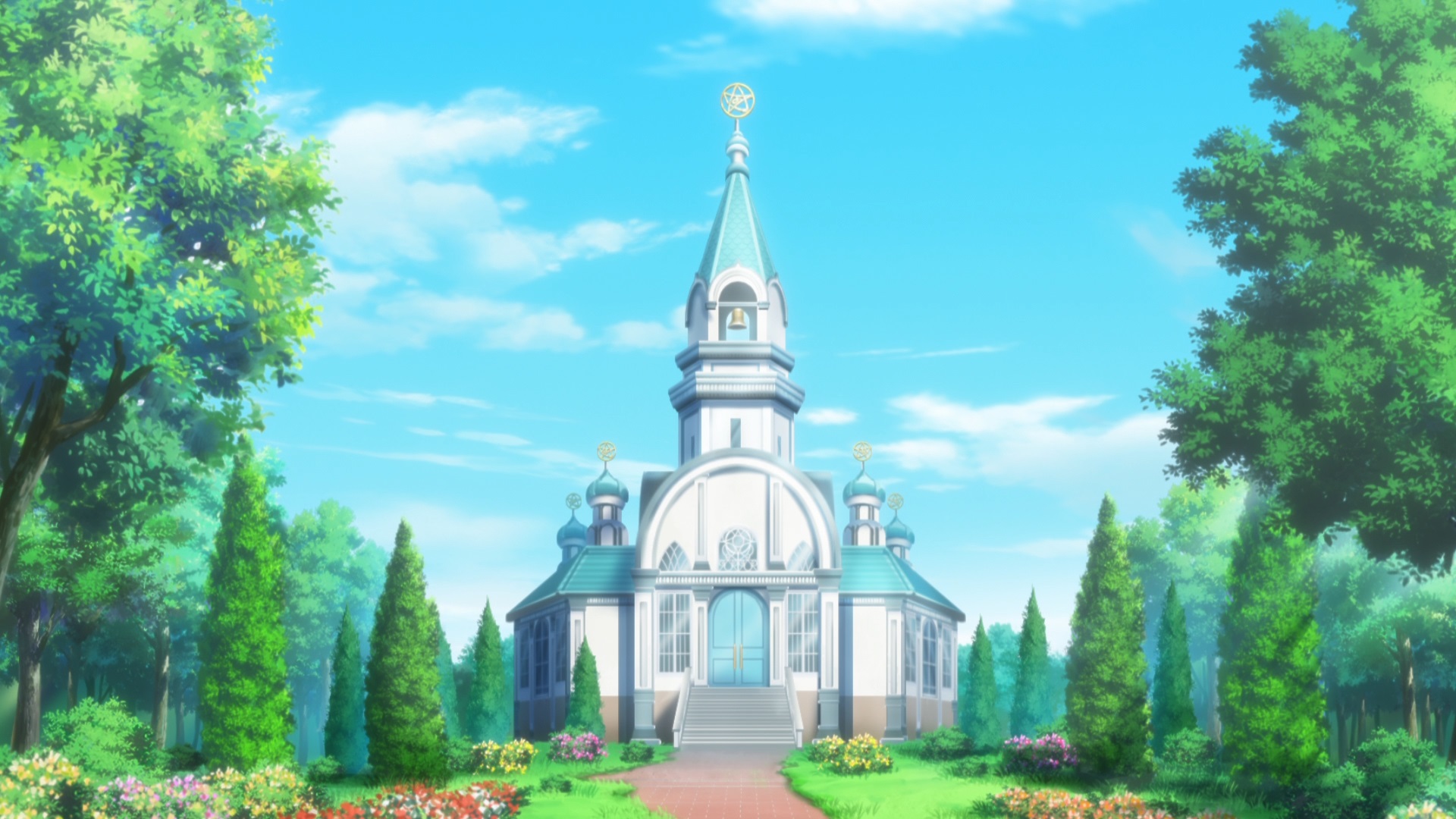
(0:03)
This is the ornament on top of the spire of the church:

The design of this ornament is referencing August Derleth's description the Elder Sign, a symbol that appears in the Cthulhu Mythos. Image from the 5th edition rule book for the "Call of Cthulhu" RPG for reference:

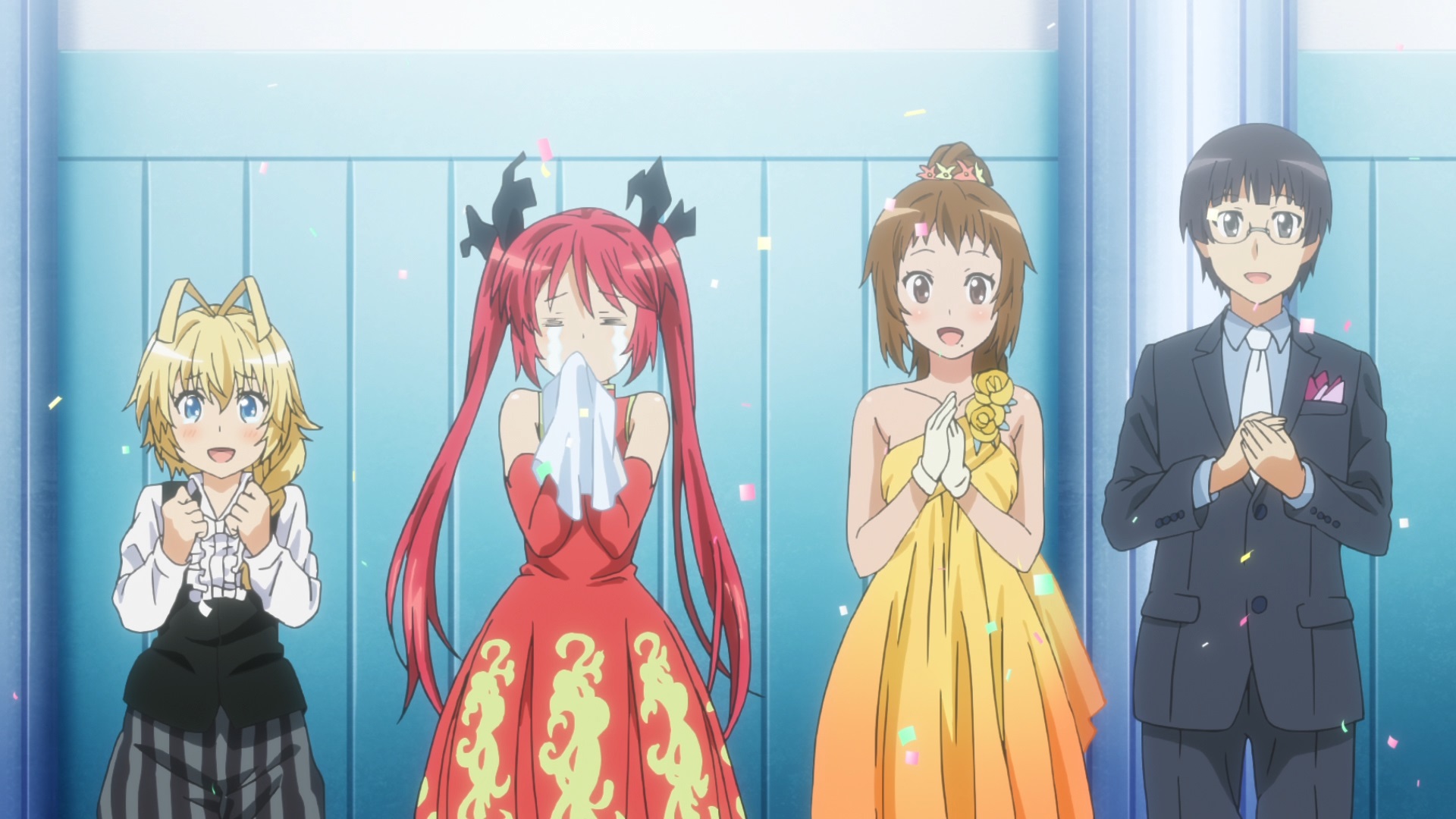
(0:12)
The outfits that Cthuko, Tamao, and Hasta are wearing are referencing the same outfits they are wearing in promotional artwork for "Saraba Nyaruko Fainaru Kauntodaun" (さらばニャル子 ファイナルカウントダウン), "Goodbye Nyaruko Final Countdown", a live event for "Haiyore! Nyaruko-san" that took place on August 17, 2014. Image for reference:
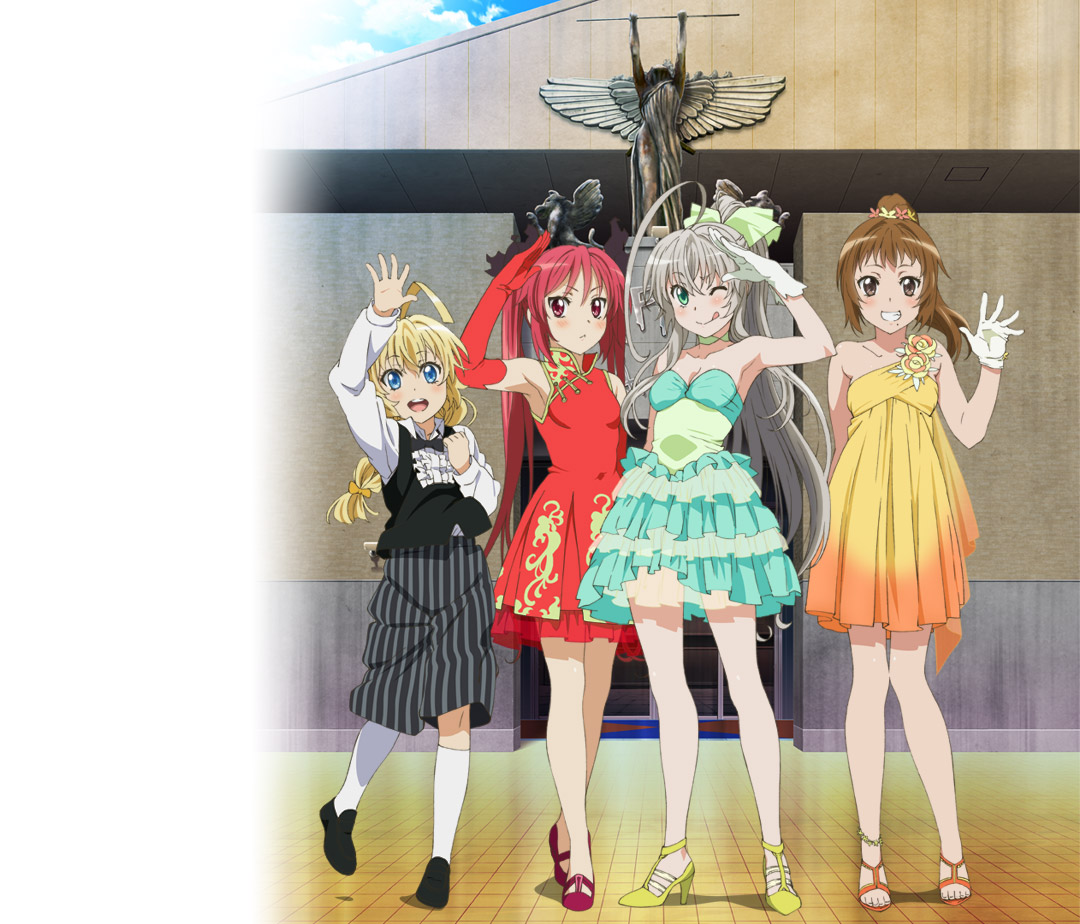
Source of image: http://nyaruko.com/sp_event/
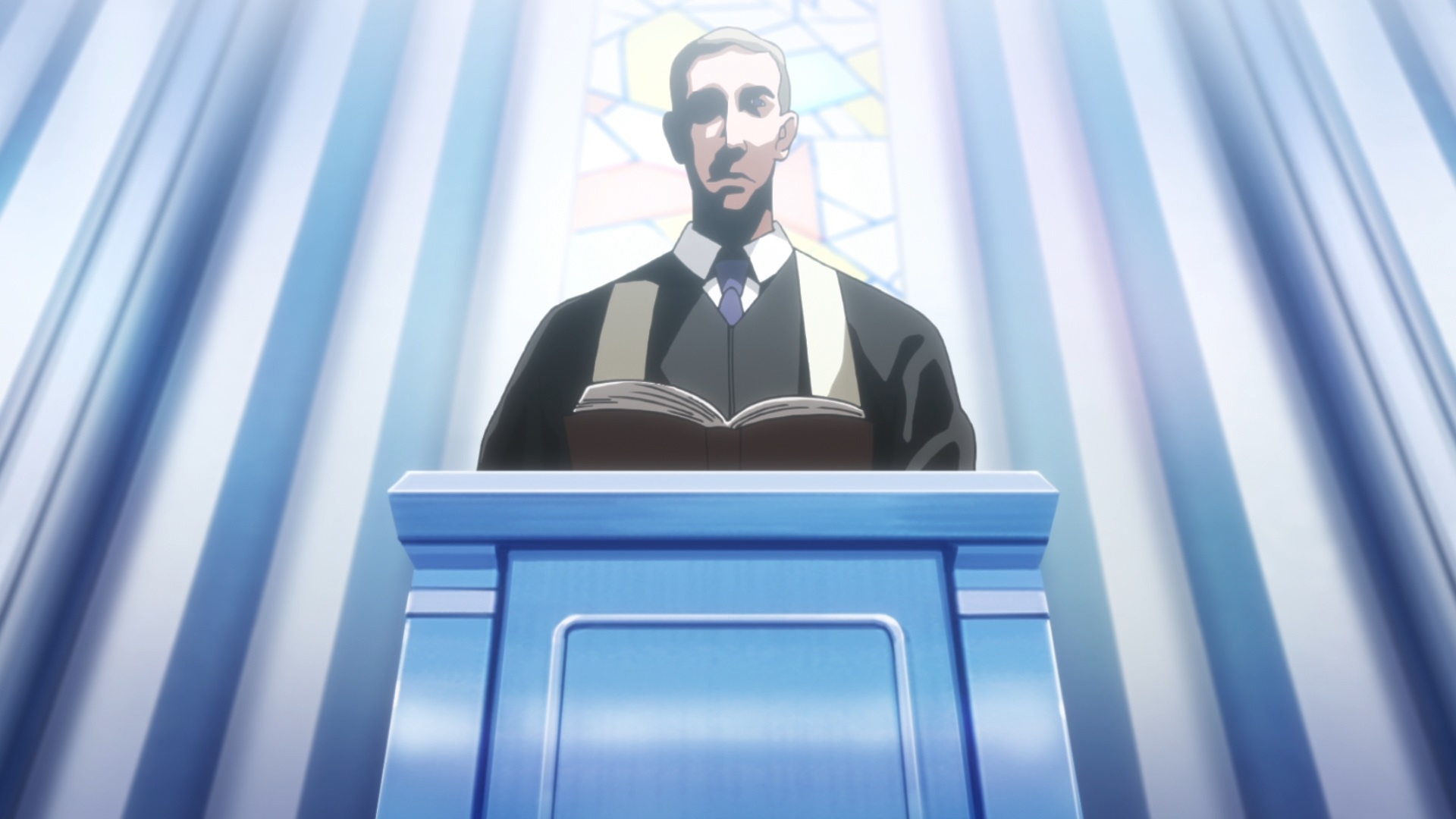
(0:48)
The appearance of the priest resembles H. P. Lovecraft, an American author of horror, fantasy, science fiction, and weird fiction. He is credited with writing stories that now serve as the basis for the Cthulhu Mythos. Image for reference:

Source of image: https://www.hplovecraft.com/life/gallery.aspx?PhotoID=61
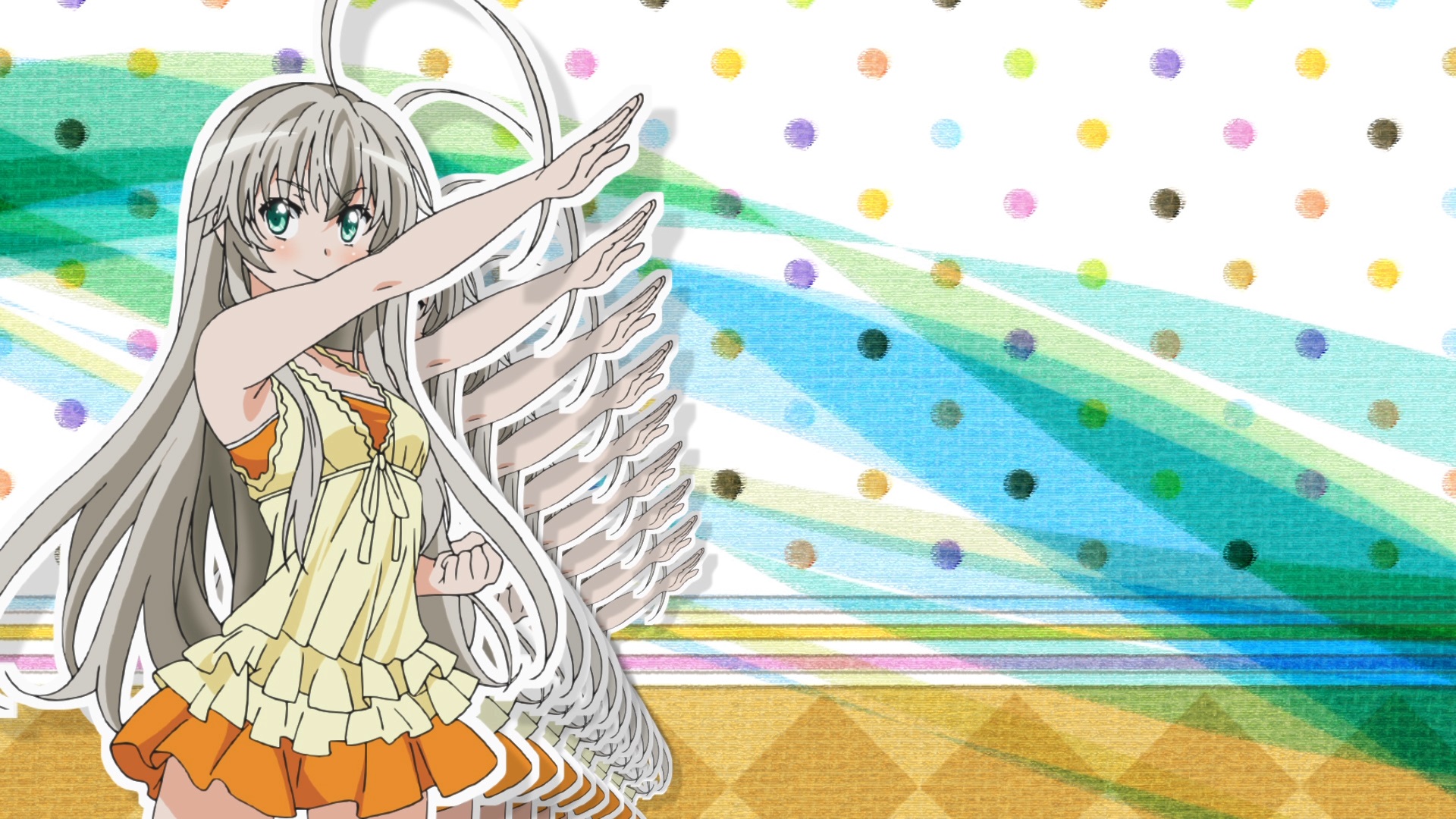
(1:32)
Nyaruko's pose is mimicking that of Kamen Rider 1 from "Kamen Rider" (仮面ライダー), a Japanese TV show about a masked super hero that aired from 1971 to 1973. Image for reference:
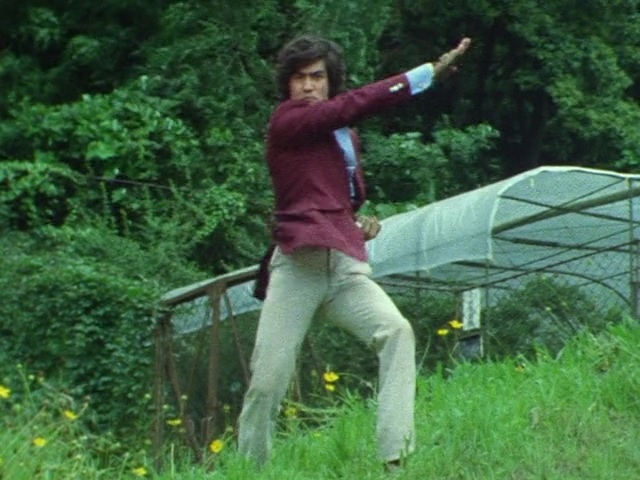
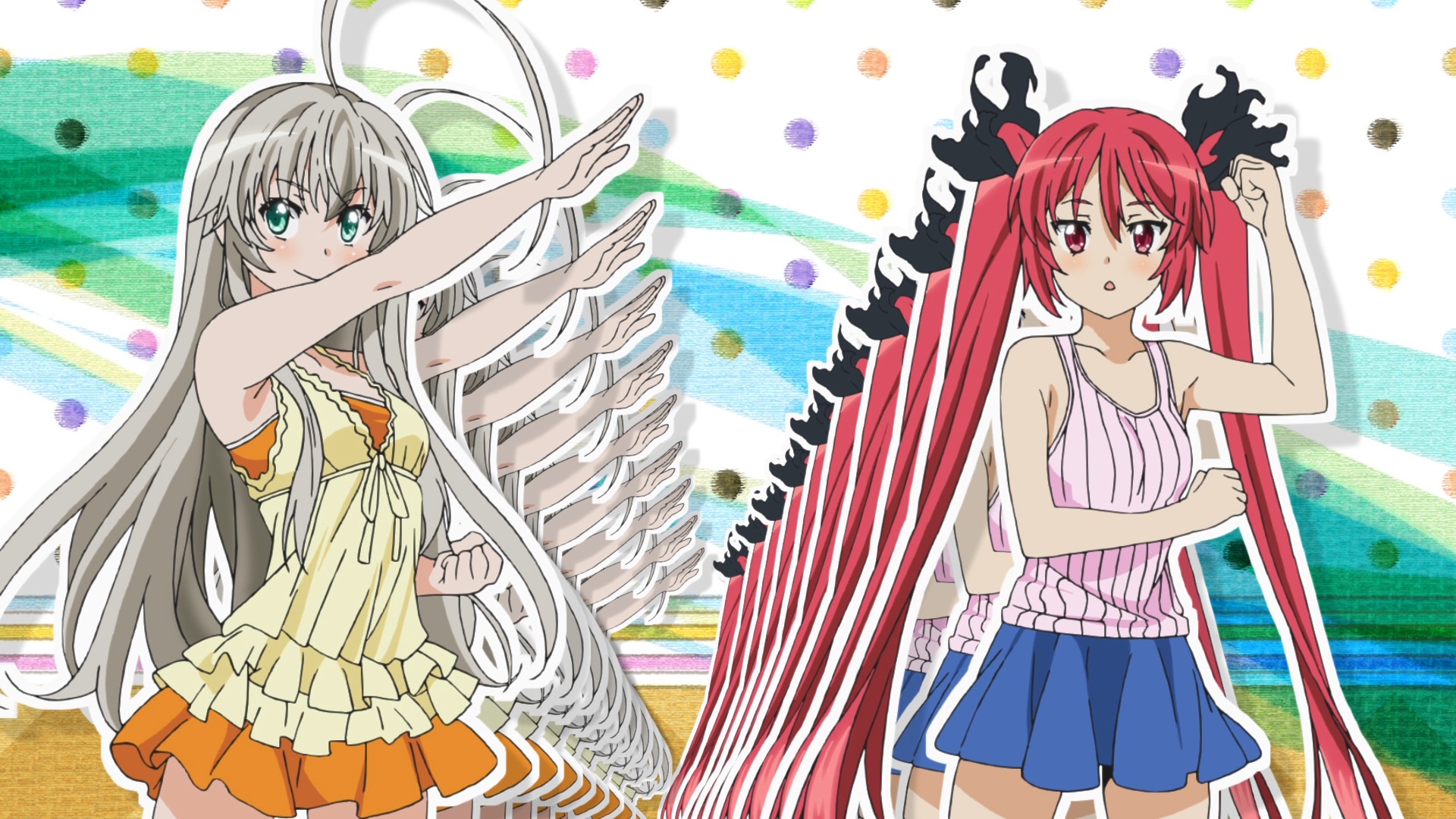
(1:34)
Cthuko is mimicking Kamen Rider 2, who is also from "Kamen Rider" (仮面ライダー). Image for reference:

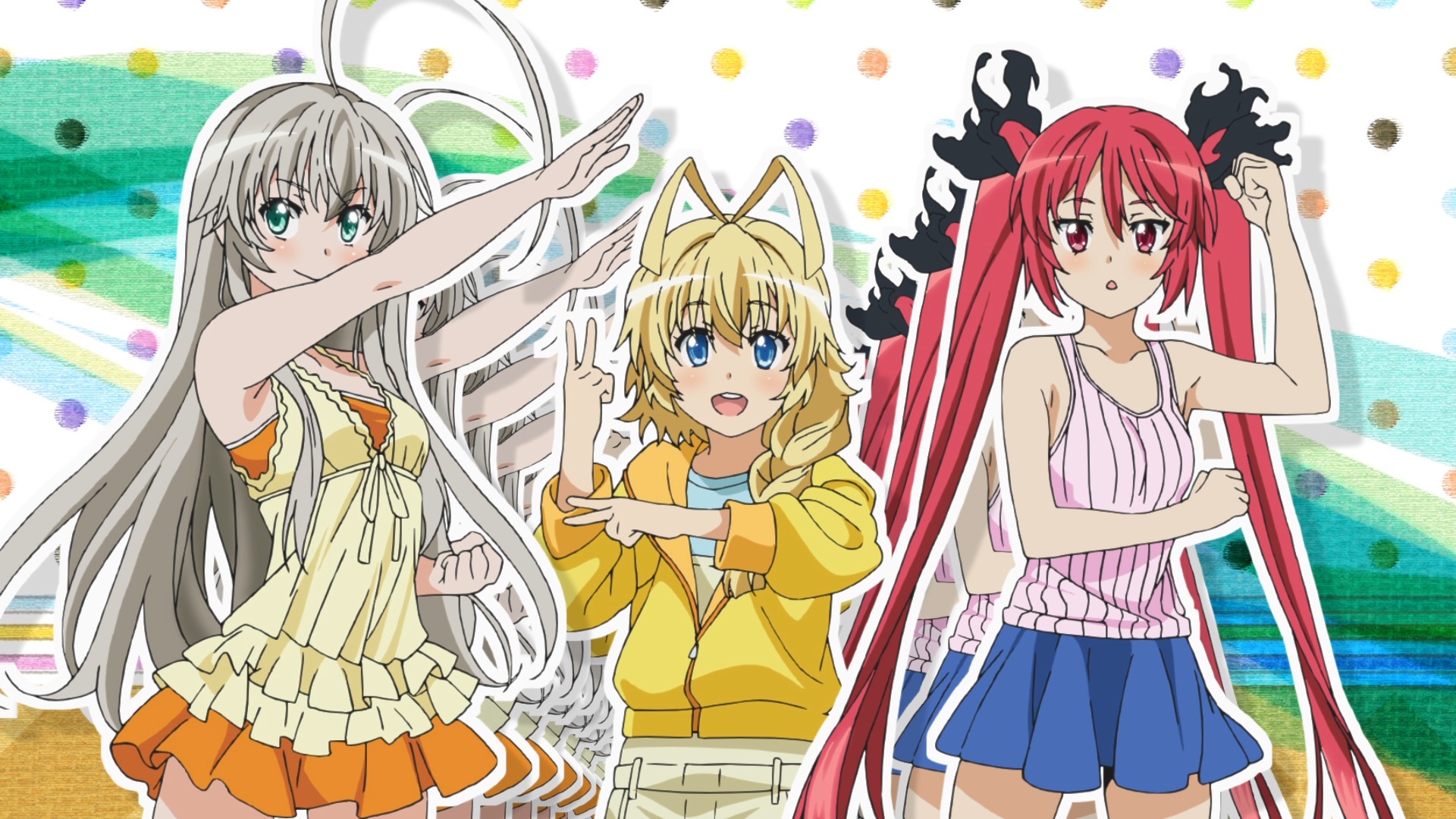
(1:36)
Hasta is mimicking Kamen Rider V3 from "Kamen Rider V3" (仮面ライダーV3), a Japanese TV show about a masked super hero that aired from 1973 to 1974. Image for reference:
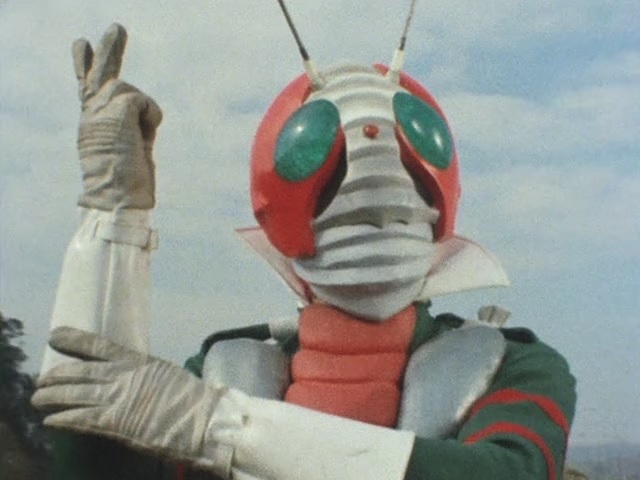


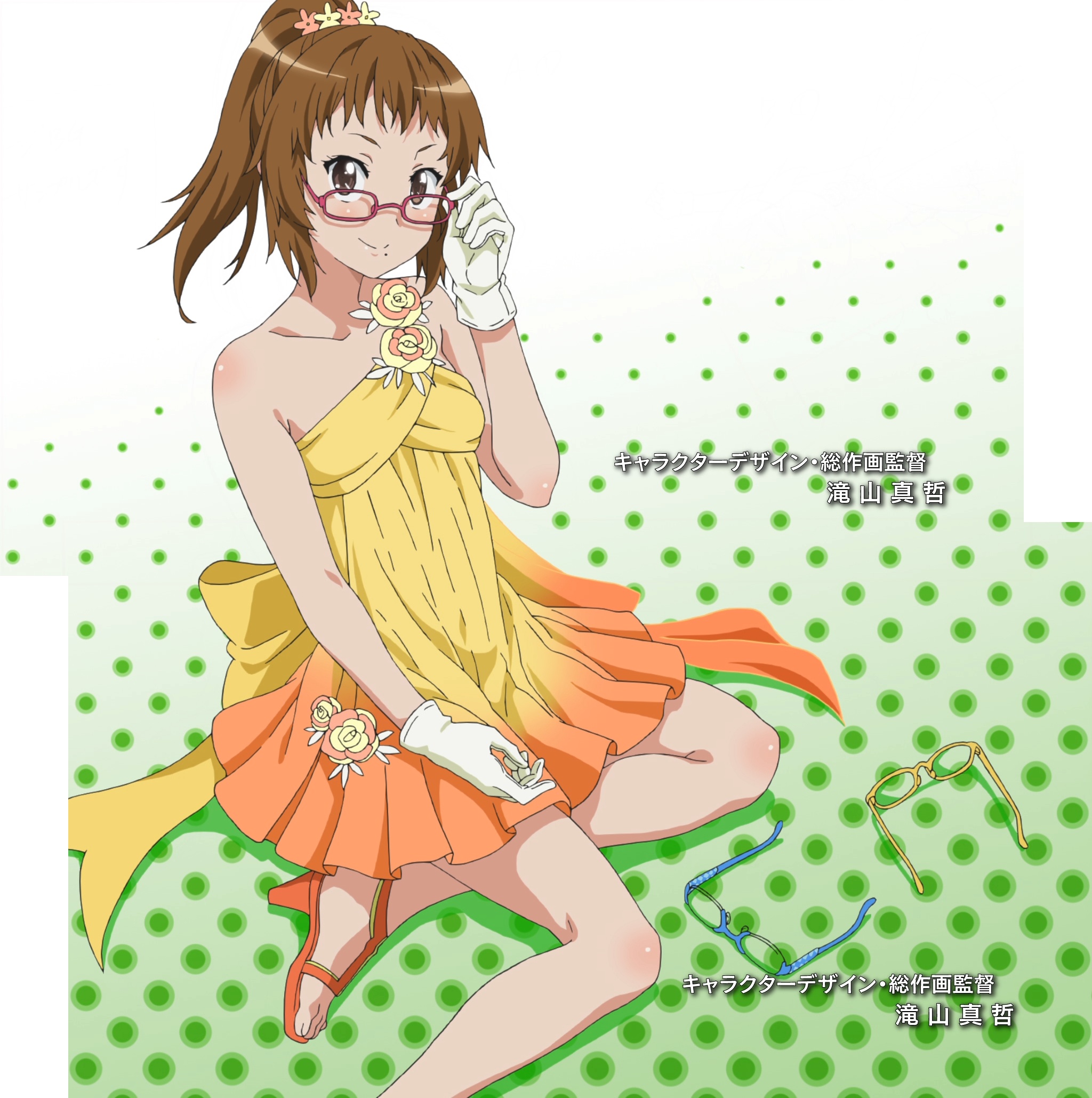
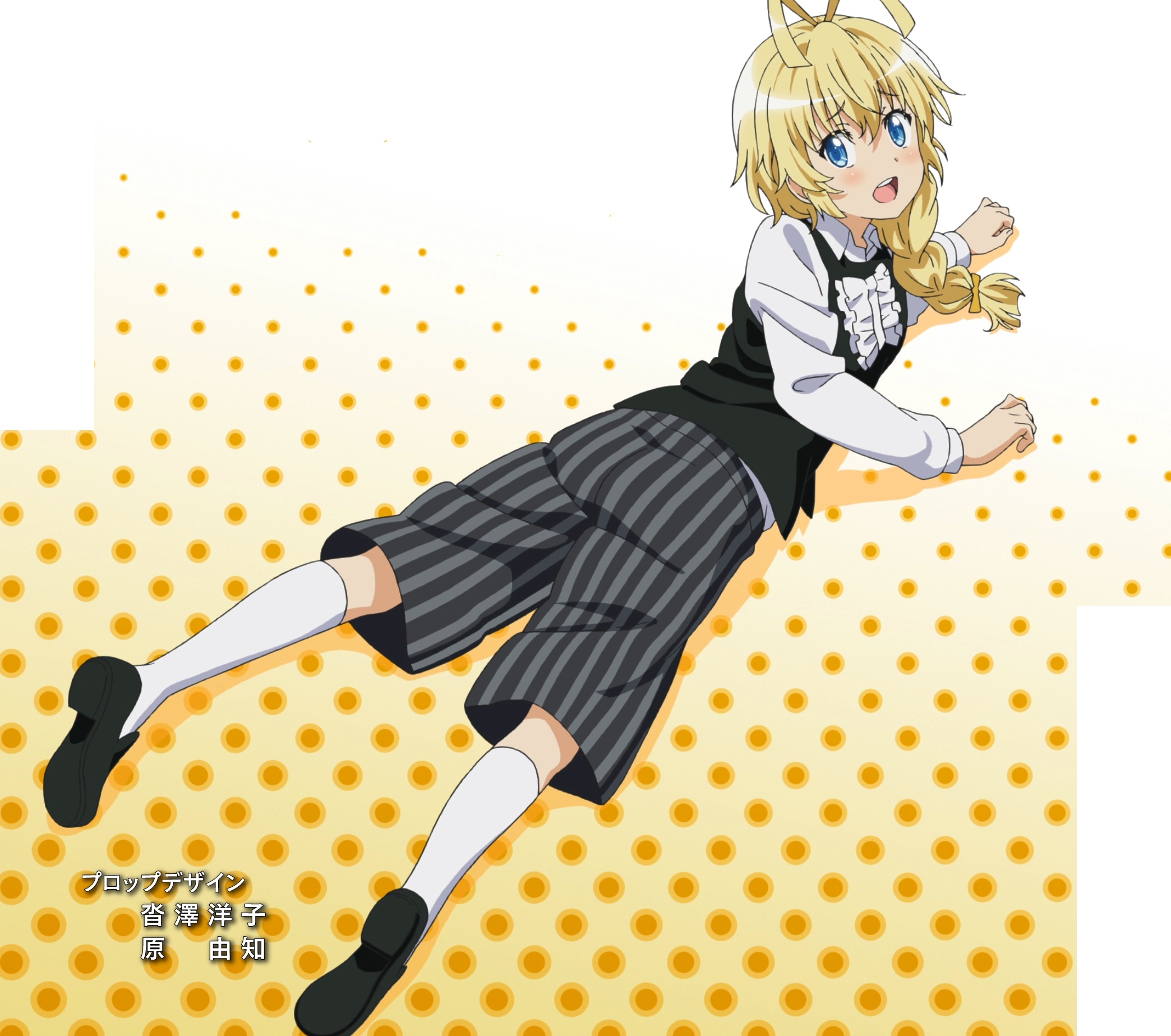
(1:44), (1:48), (1:55), (1:58)
Like at 0:12, the outfits that Nyaruko, Cthuko, Tamao, and Hasta are wearing are referencing the same outfits they are wearing in promotional artwork for "Saraba Nyaruko Fainaru Kauntodaun" (さらばニャル子 ファイナルカウントダウン), "Goodbye Nyaruko Final Countdown", a live event for "Haiyore! Nyaruko-san" that took place on August 17, 2014. Image for reference:

Source of image: http://nyaruko.com/sp_event/
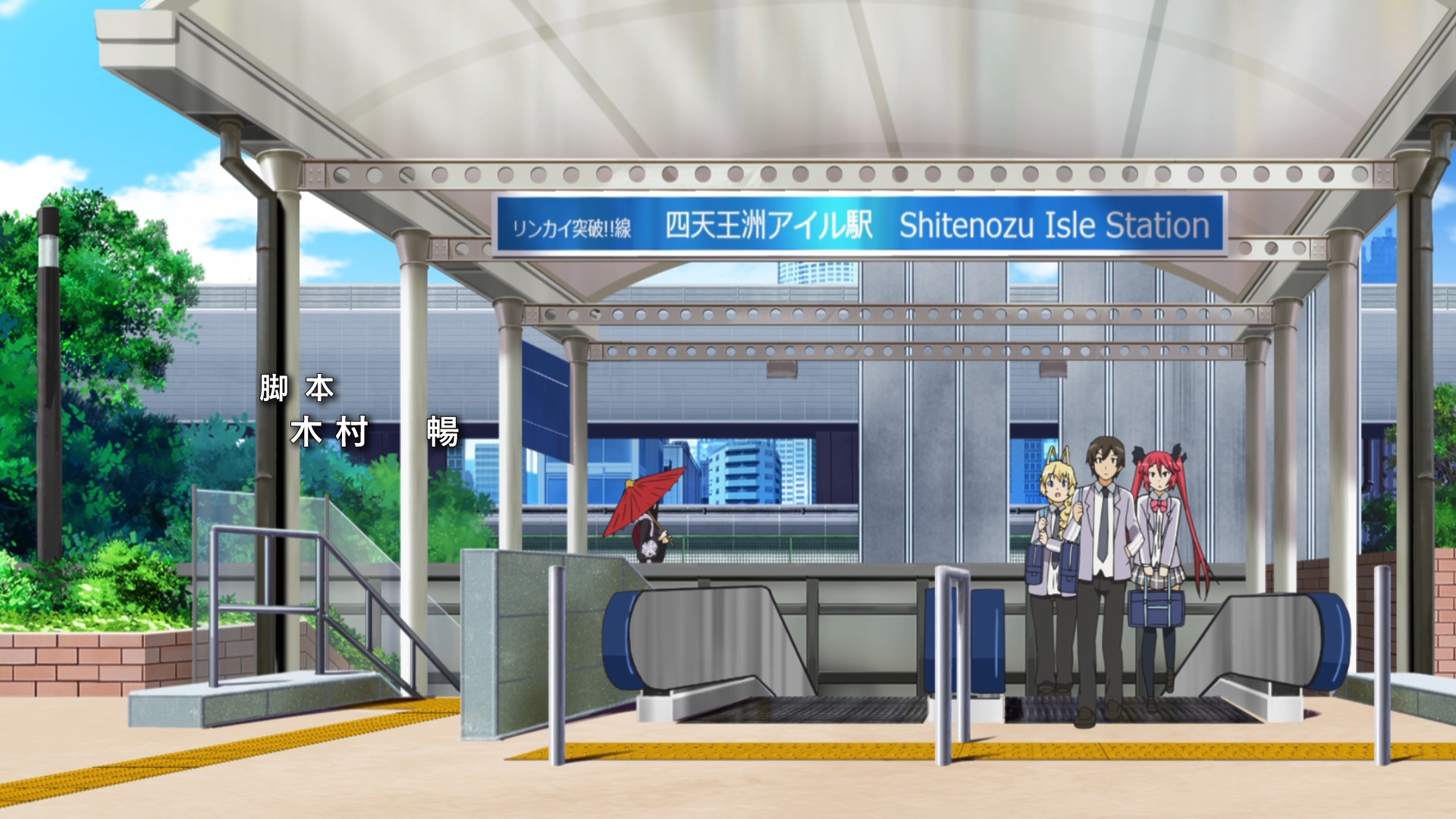
(1:51)
The following is written on the sign.
リンカイ突破!!線 四天王洲アイル駅 Shitenozu Isle StationThere are two references here:
Rinkai Toppa!! Sen Shitennouzu Airu Eki Shitenozu Isle Station
Rinkai Breakthrough!! Line Shitennouzu Isle Station Shitenozu Isle Station
* The sign and the appearance of the railway station are referencing "Tennouzu Airu Eki" (天王洲アイル駅), "Tennouzu Isle Station", a railway station in Shinagawa, Tokyo, Japan. The following is written on the actual sign at Tennouzu Isle Station.
りんかい線 天王洲アイル駅 Tennōzu Isle StationImage for reference:
Rinkai Sen Tennouzu Airu Eki Tennōzu Isle Station
Rinkai Line Tennōzu Isle Station Tennōzu Isle Station

Source of image: http://photozou.jp/photo/show/1477191/77465617
* In this episode, the name of the station 「四天王洲アイル駅」 (Shitennouzu Airu Eki) contains the characters 「四天王」 (Shitennou), which translates to "Four Heavenly Kings". "Four Heavenly Kings" refers to four Buddhist gods, each of whom is believed to watch over one cardinal direction of the world. Additionally, referring to a group of four notable figures as "Shitennou" is a popular practice both in real life and in fiction. For example:
* Tokugawa Shitennou (徳川四天王) refers to four notable generals who fought on behalf of Tokugawa Ieyasu (徳川家康), the founder and first Shogun of the Tokugawa Shogunate of Japan who lived from 1543 to 1616.
* Raikou Shitennou (頼光四天王) refers to four legendary retainers of Minamoto no Yorimitsu (源頼光), a Japanese military commander who lived from 948 to 1021 and also appeared in many Japanese legends and tales.
* Dark Kingdom Shitennou (ダーク・キングダム四天王) refers to four generals of the Dark Kingdom in "Bishoujo Senshi Seeraa Muun" (美少女戦士セーラームーン), "Pretty Guardian Sailor Moon", a manga series written by Takeuchi Naoko (武内直子) and published from 1991 to 1997.
* Pokemon Shitennou (ポケモン四天王) refers to a group of four powerful characters in "Pokemon Red and Blue" (ポケットモンスター 赤・緑), a set of games released by Nintendo (任天堂) in 1996. These four characters act collectively as one of the final challenges for the player before clearing the game. This concept has been used in many games in the "Pokemon" series.
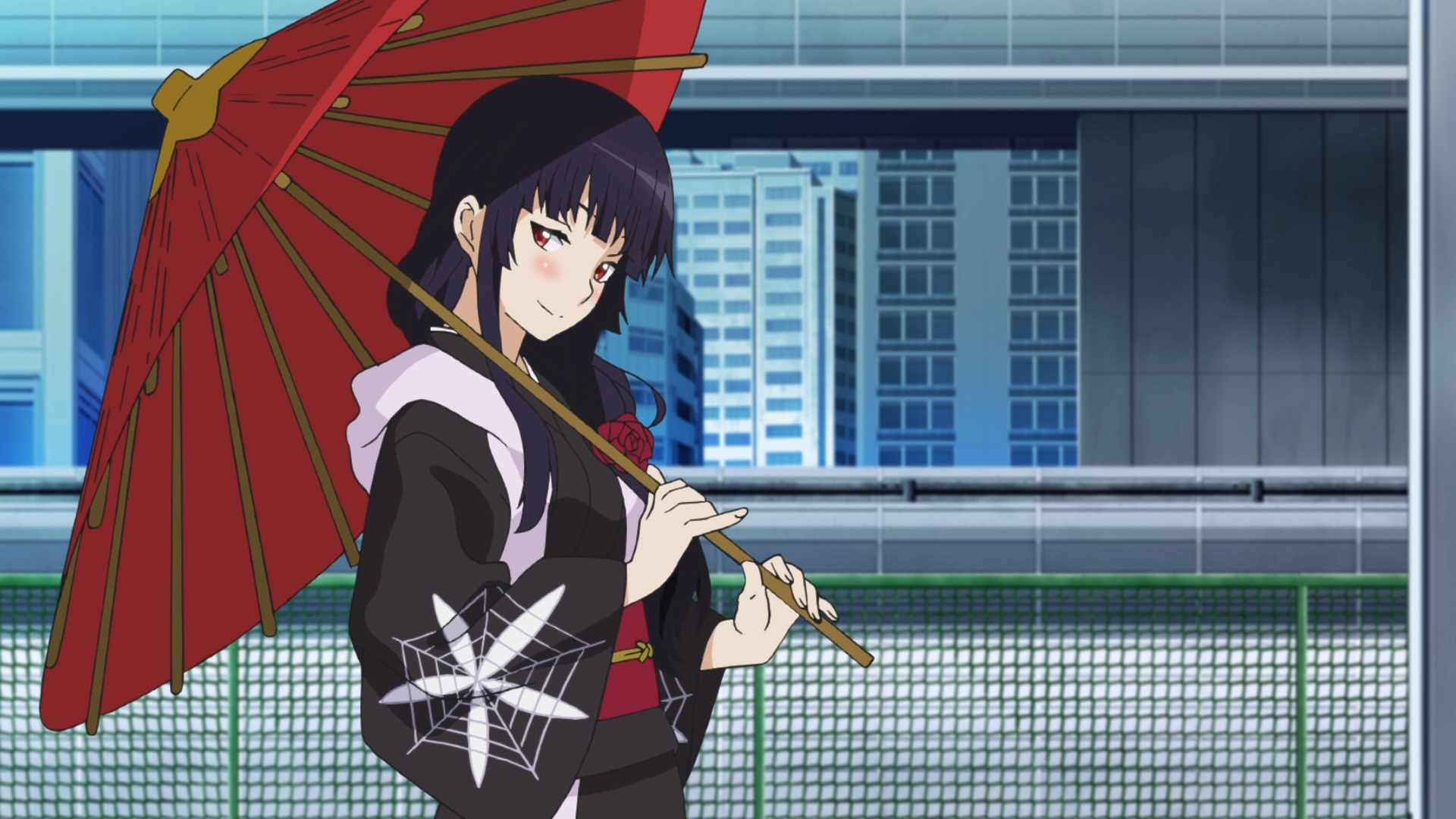
(1:54)
This is Shirogane Atoko (銀アト子). Atoko is based on Atlach-Nacha, a spider shaped creature classified as a Great Old One in the Cthulhu Mythos. She first appears in "Haiyoru! Nyaruani Rimenbaa Mai Rabu (Kurafuto Sensei)" (這いよる! ニャルアニ リメンバー・マイ・ラブ (クラフト先生)), "Crawling! Nyaruani: Remember My Love (Craft)", an anime adaptation of "Haiyore! Nyaruko-san" that aired from 2010 to 2011. Later, Atoko also appears in the "Haiyore! Nyaruko-san" light novel series starting in volume 10, which was released in 2012. Image of Atoko as she appears in "Haiyoru! Nyaruani" for reference:

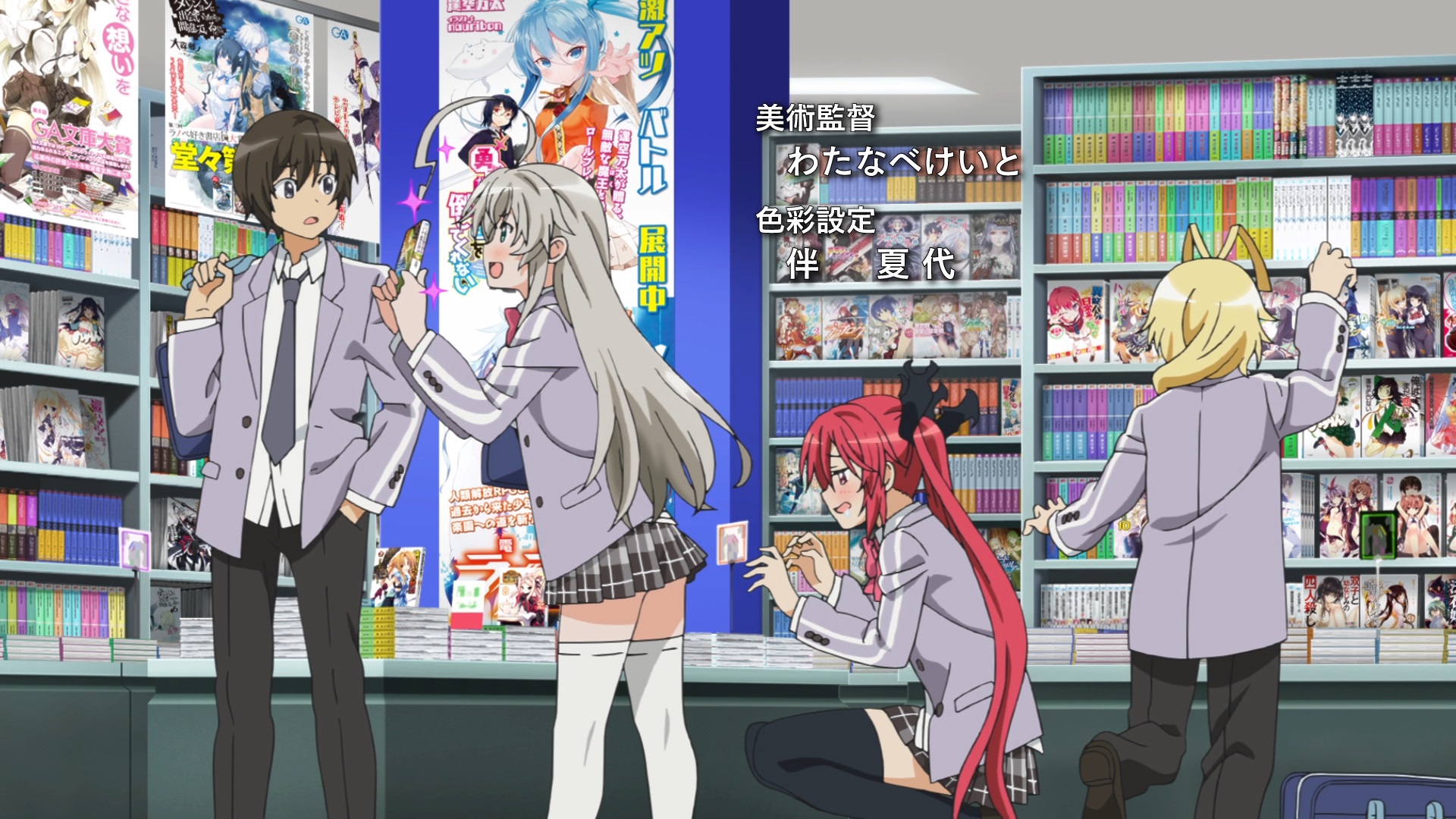
(2:01)
In this scene there are lots of images of light novels and posters for light novels shown. All the light novels that appear are published by the company GA Bunko (GA文庫), which also publishes the "Haiyore! Nyaruko-san" light novel series. In particular, the poster immediately behind Nyaruko features the cover art of "Kanojo ga Boku wo Taoshite Kurenai" (勇者が魔王を倒してくれない), "She Refuses to Defeat Me", a light novel written by Aisora Manta (逢空万太) and first published in 2014.S3 Image for reference:
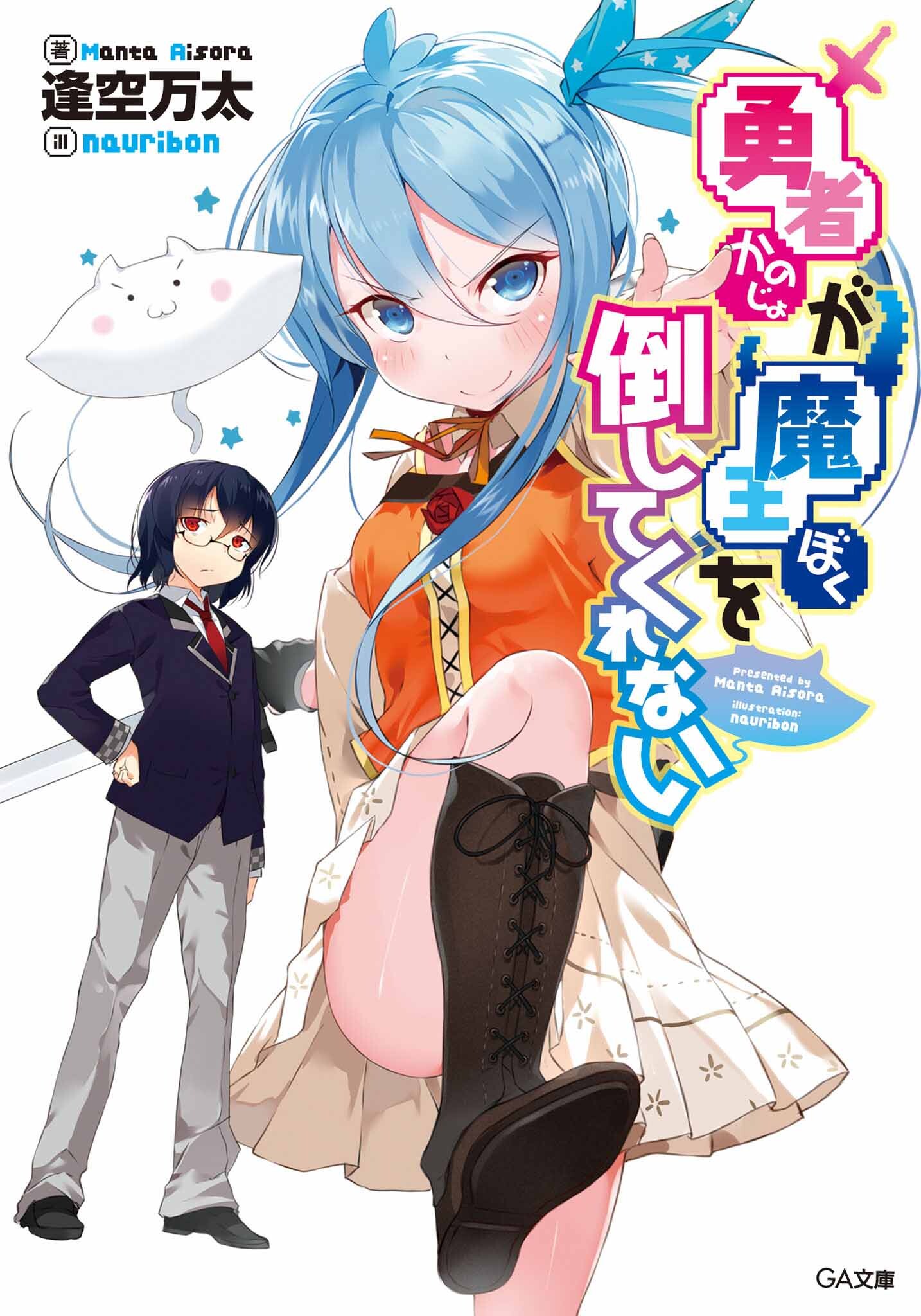
Source of image: https://bookwalker.jp/de11f28b59-3979-4af4-9de0-46b5fc8e8253/
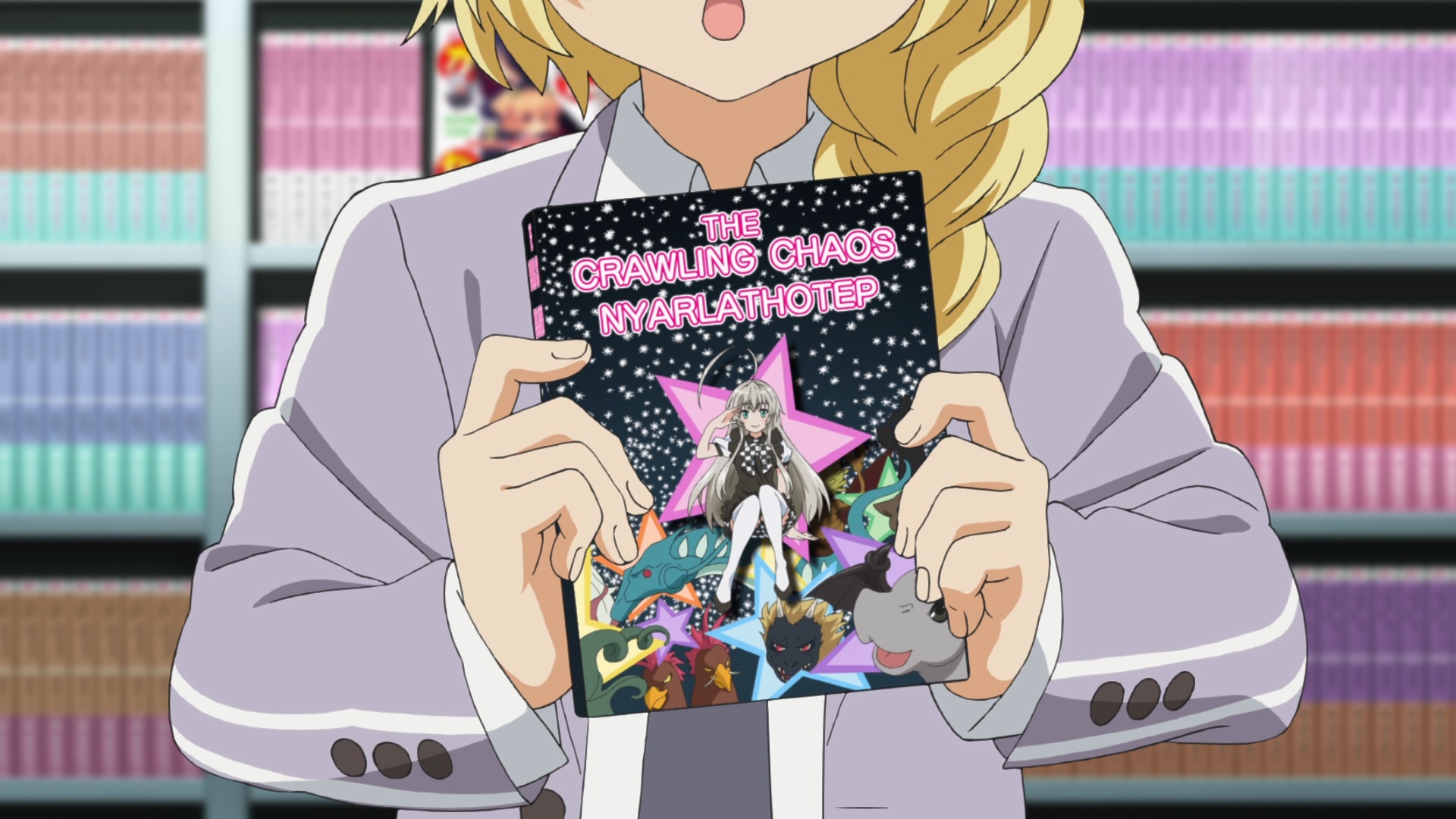
(2:04)
The book that Hasta shows to the screen has the title "The Crawling Chaos Nyarlathotep". Nyarlathotep is referred to as "the crawling chaos" in "Nyarlathotep", a short story written by H. P. Lovecraft and first published in 1920.
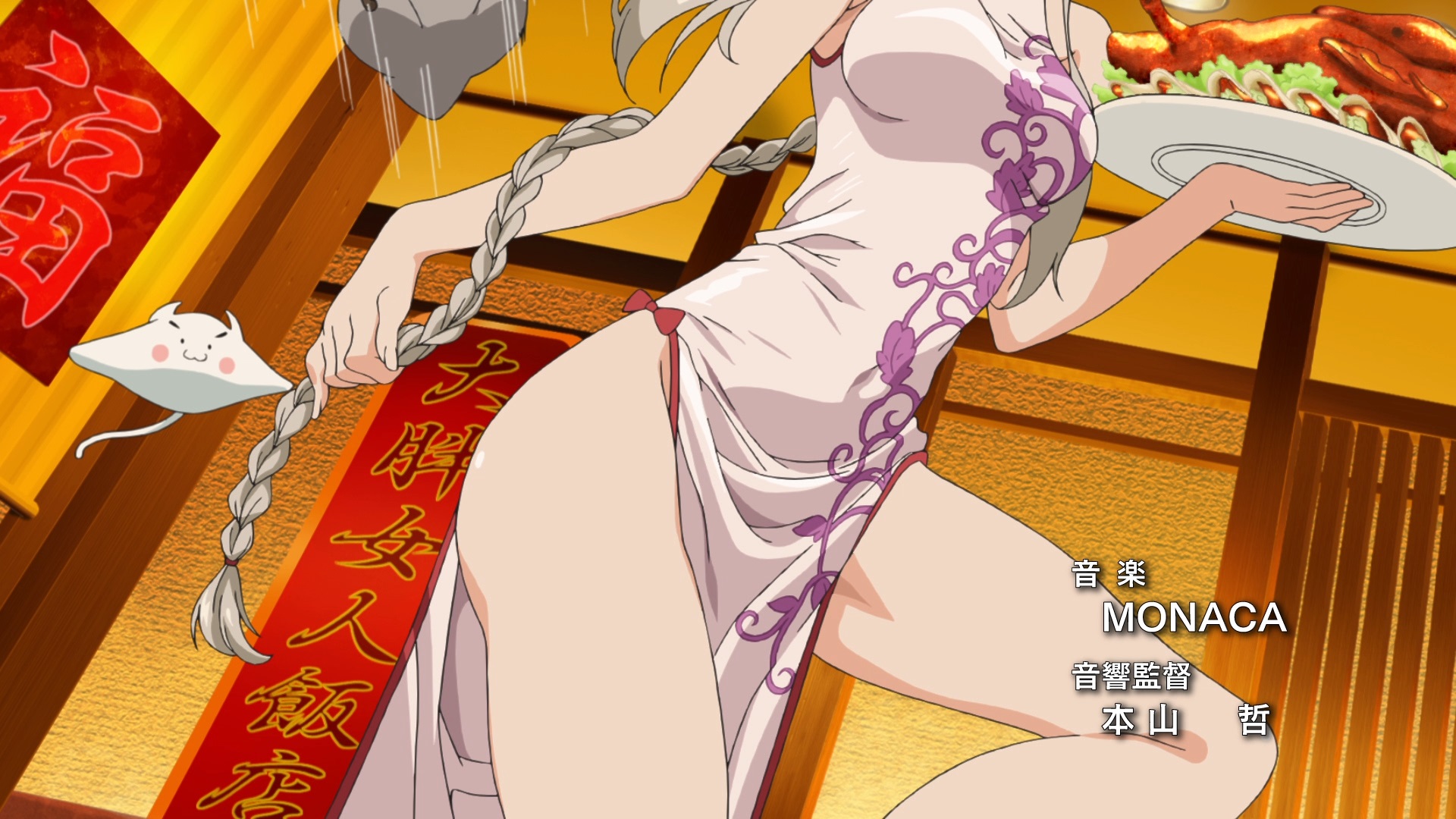
(2:08)
There are two references here:
* 「大胖女人飯店」 is written on the sign in the background. The text translates to "Bloated Woman Restaurant". 「大胖女人」 (Da Pang Nuren) means "big fat woman" in Chinese. This is referencing the Bloated Woman (膨れ女 fukure onna), an avatar of Nyarlathotep that appears as a 600-pound female humanoid equipped with numerous tentacles in addition to two arms and two legs. This avatar manifests in Shanghai, China and is worshipped by the Order of the Bloated Woman, a cult that is almost exclusively Chinese. All cultists have a tattoo of the text 「大胖女人」 in their left armpits. Here is an excerpt from "The Complete Masks of Nyarlathotep" for reference.
* The white creature that appears here is referencing the Twitter profile picture of Aisora Manta (逢空万太), the author of the "Haiyore! Nyaruko-san" light novel series. Screen capture for reference:

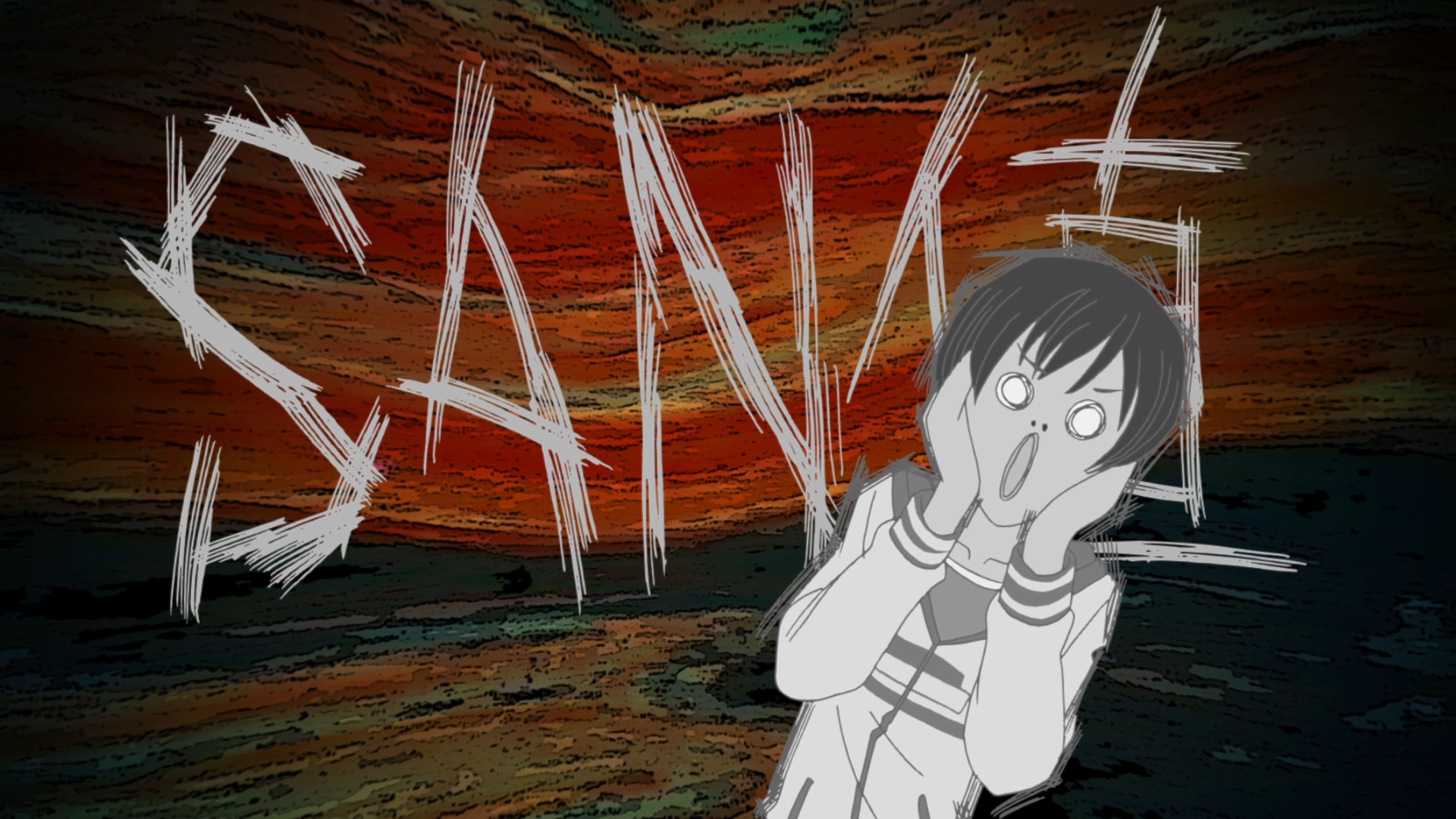
(2:38)
There are two references here:
* Mahiro's pose and expression and the background illustration are referencing "The Scream", a painting painted by Edvard Munch in 1893. Image for reference:
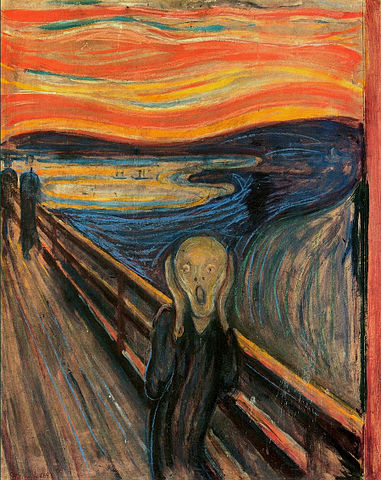
Source of image: https://en.wikipedia.org/wiki/File:The_Scream.jpg
* The text that appears in the background reads "SAN chi" (SAN値), which translates to "sanity points". This is a parameter that characters have in the "Call of Cthulhu" role playing game. If a character's sanity points drop to zero, the character is permanently insane and normally can no longer be played.
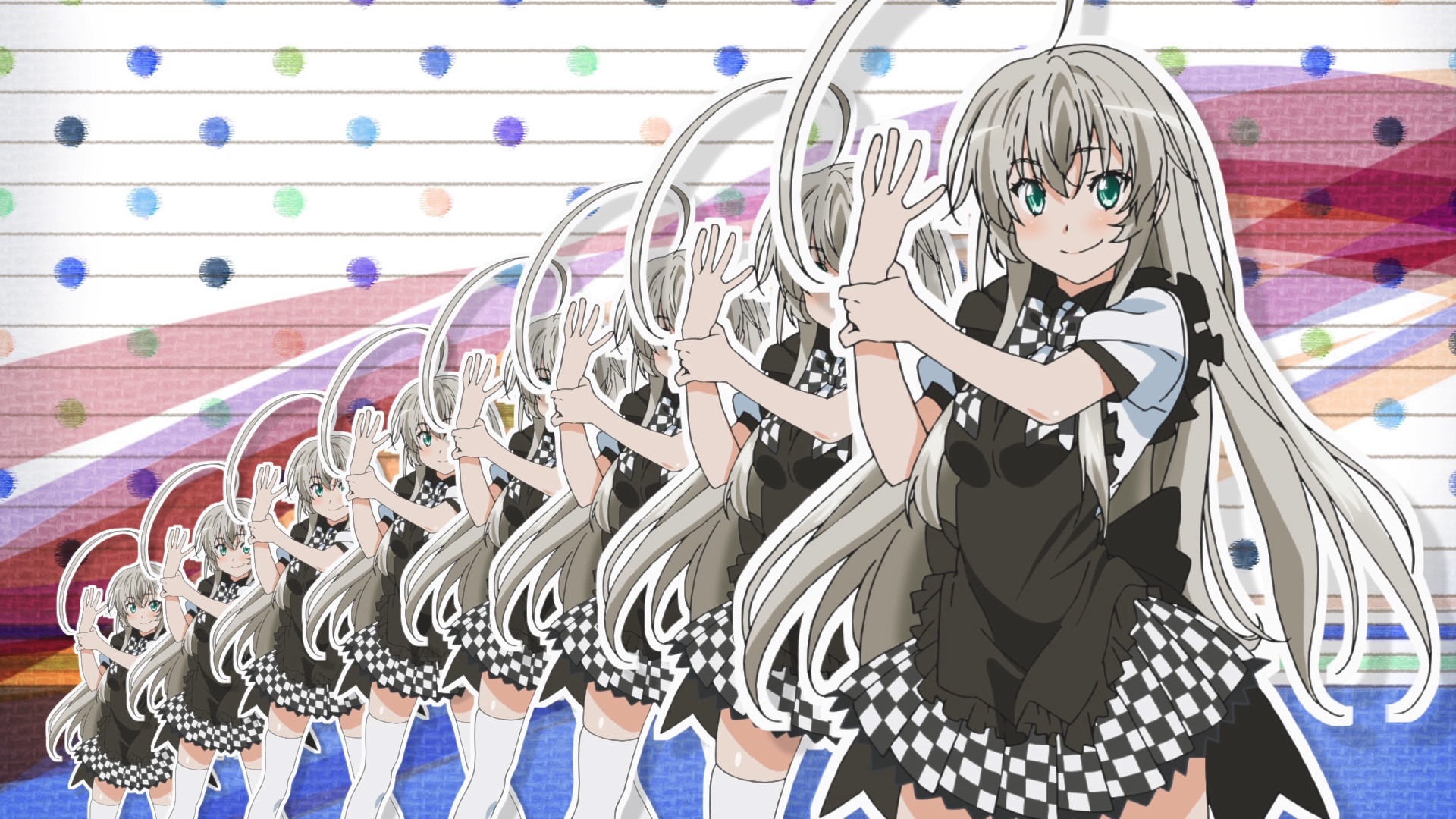
(2:53)
Nyaruko's pose is referencing a pose done by Kamen Rider Drive in "Kamen Rider Drive" (仮面ライダードライブ), a Japanese TV show about a masked super hero that aired from 2014 and is currently ongoing. Image for reference:
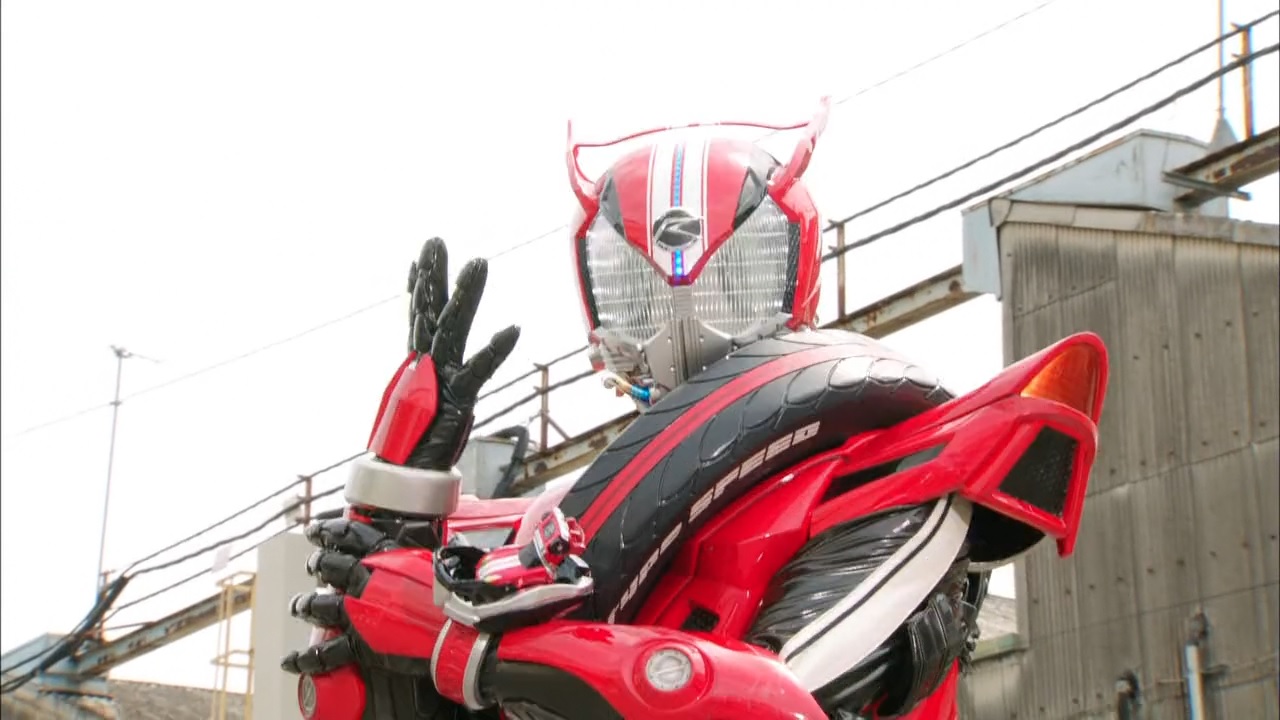
"Haiyore! Nyaruko-san! Three events so far!" (3:26)
The Japanese line is "Haiyore! Nyaruko-san! Kore made no mitsu no dekigoto!" (這いよれ!ニャル子さん!これまでの三つの出来事!). This is referencing "Kamen Rider OOO" (仮面ライダーオーズ), a Japanese TV show about a masked super hero that aired from 2010 to 2011. At the beginnings of many episodes, such as episode 2, the narrator says, "Kamen Raidaa Oozu! Zenkai no mitsu no dekigoto!" (仮面ライダーオーズ!前回の三つの出来事!), which translates to "Kamen Rider OOO! Three events from last time!".
"The rule breaking Cthulhu Mythos showdown, concluded!" (3:30)
The Japanese line is "Okite yaburi no kutouruu shinwa taiketsu, kecchaku!" (掟破りのクトゥルー神話対決、決着!). This is referencing an official tagline used for "Heisei Raidaa Tai Shouwa Raidaa Kamen Raidaa Taisen Fiicharingu Suupaa Sentai" (平成ライダー対昭和ライダー 仮面ライダー大戦 feat.スーパー戦隊), "Heisei Rider vs Shouwa Rider Kamen Rider War feat. Super Sentai", a movie released in 2014.S1 The original line goes, "Okite yaburi no raidaa taiketsu, kecchaku." (掟破りのライダー対決、決着。), which translates to "The rule breaking Rider showdown, concluded.".
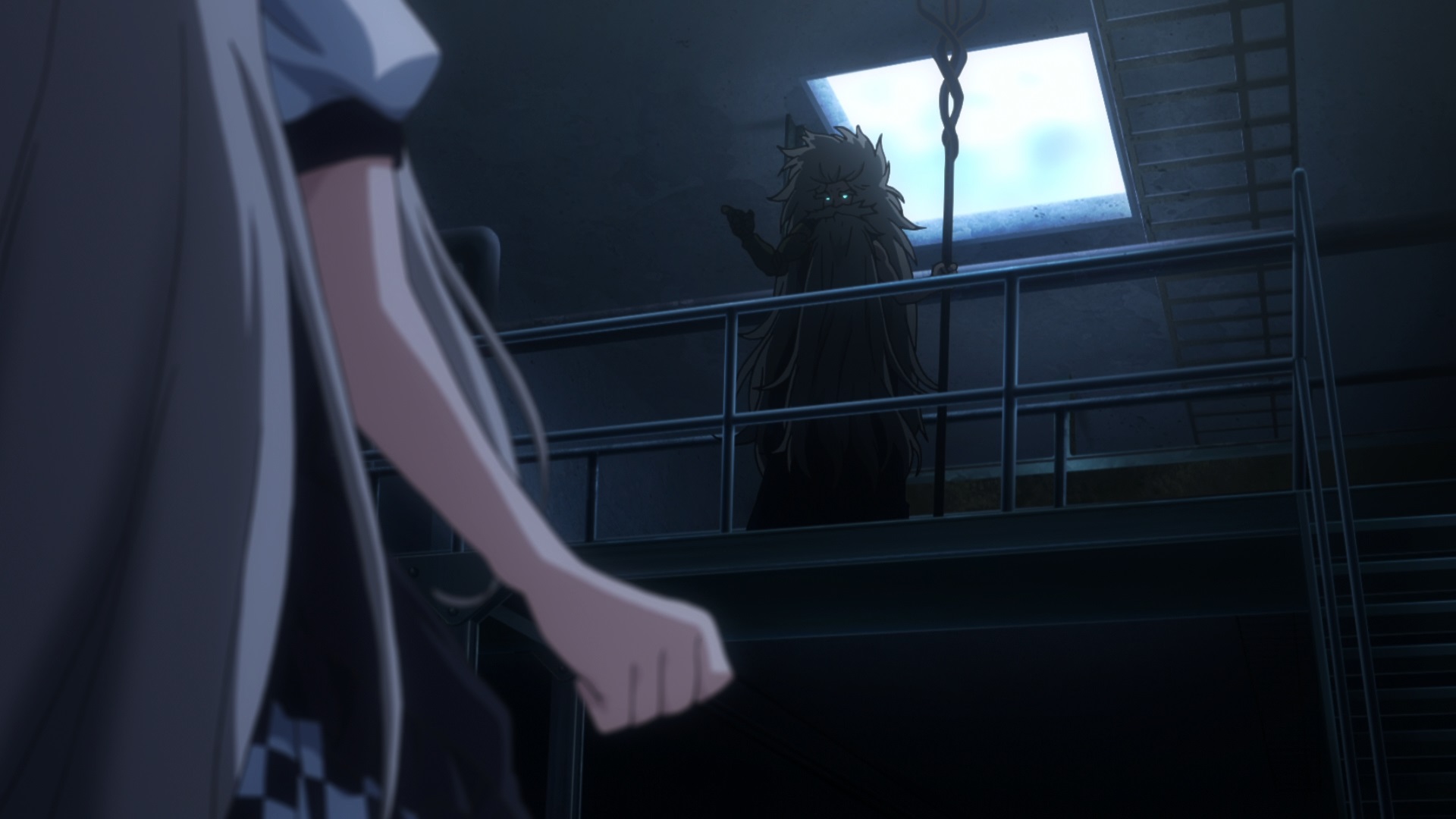
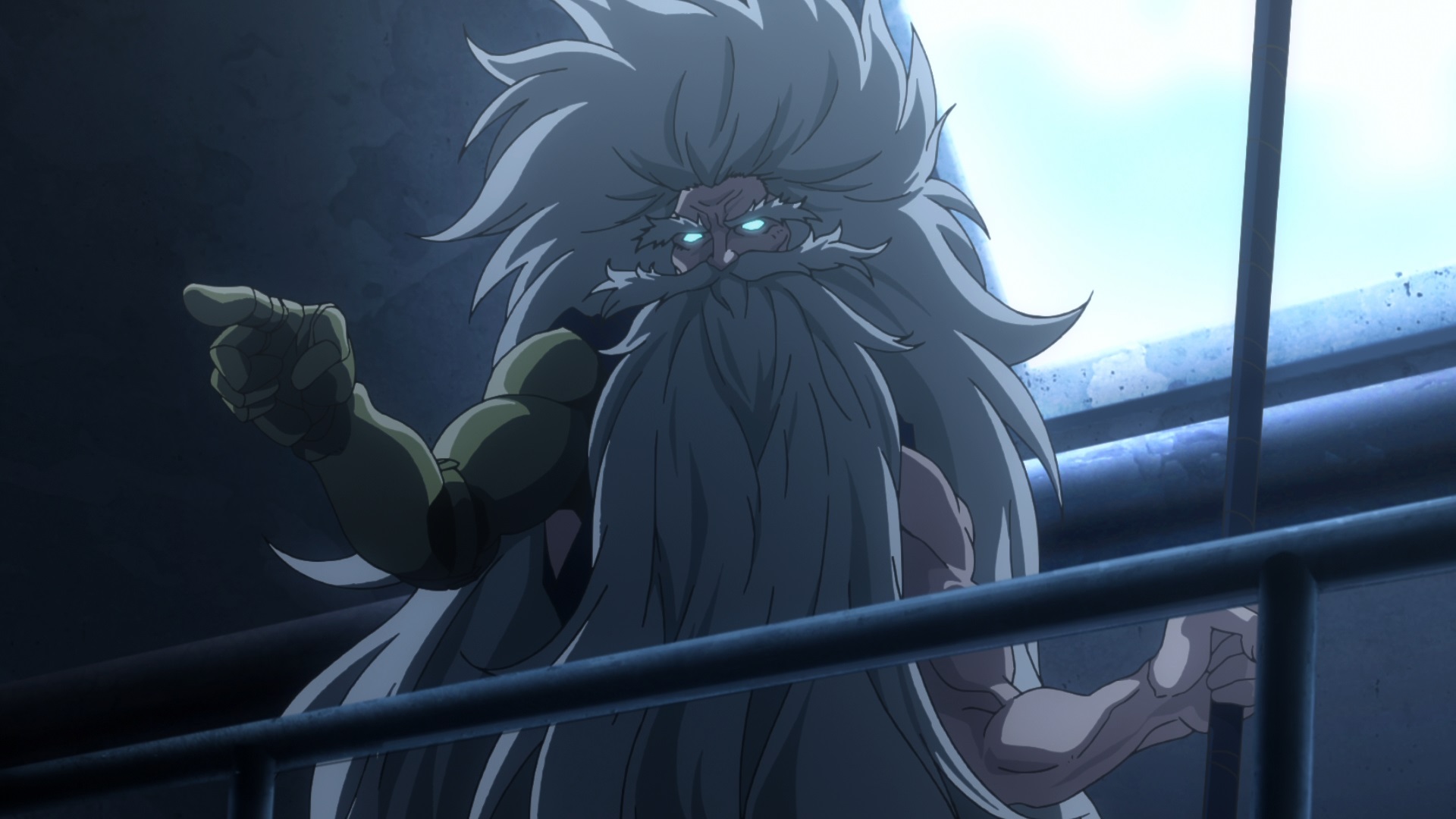
"I cannot recognize fledglings like yourselves as Cthulhu Mythos!" (3:34)
The Japanese line is "Omae tachi no you na hyokko wo Kutouruu Shinwa to mitomeru wake ni ha ikan!" (お前達のようなひょっこをクトゥルー神話と認める訳にはいかん!). This is referencing a line said by Hongou Takeshi (本郷猛) in "Heisei Raidaa Tai Shouwa Raidaa Kamen Raidaa Taisen Fiicharingu Suupaa Sentai" (平成ライダー対昭和ライダー 仮面ライダー大戦 feat.スーパー戦隊), "Heisei Rider vs Shouwa Rider Kamen Rider War feat. Super Sentai", a movie released in 2014.S1 The original line goes, "Omae no you na hiyokko wo Raidaa to mitomeru wake ni ha ikan!" (お前のようなひよっこをライダーと認めるわけにはいかん!), which translates to "I cannot recognize a fledgling like you as a Rider!". In addition, the setting of the scene and Nodens's pose are referencing the setting of the movie and Hongou Takeshi's pose when he says this line. Image for reference:
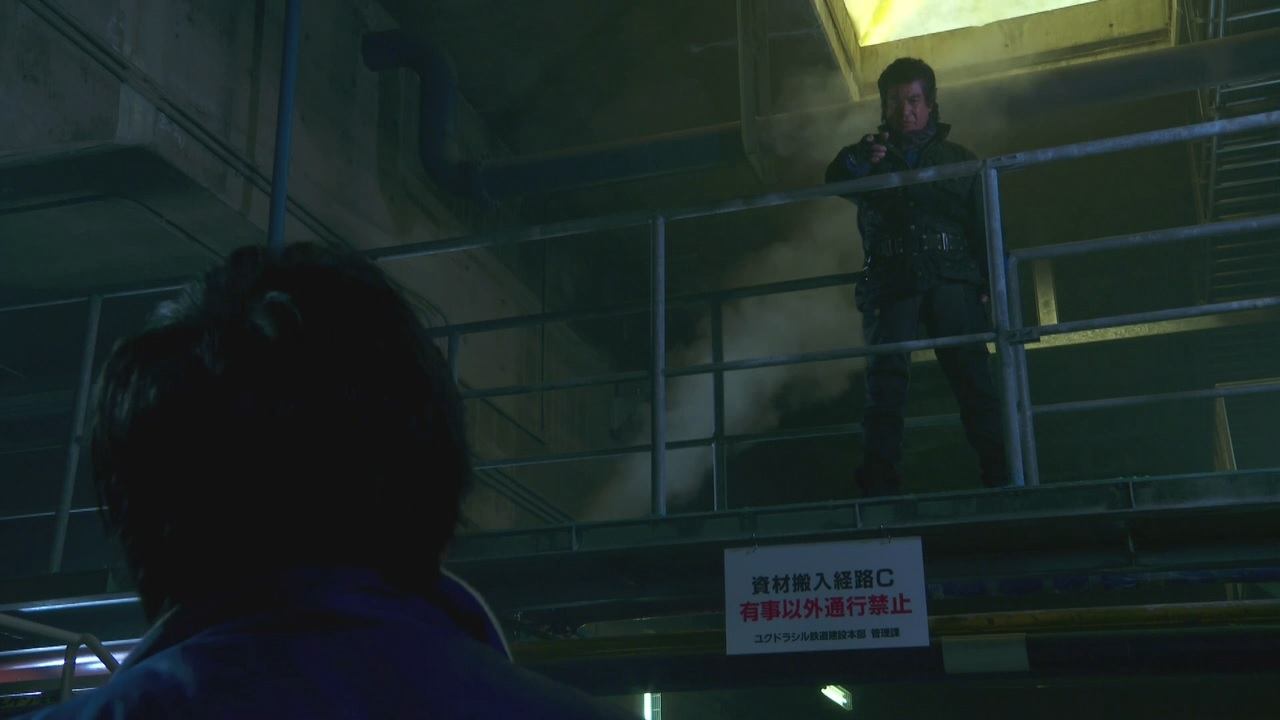
(3:43)
The line at this time goes as follows:
「銀河の窮極の混沌の中心を目指す移民船団に敵が襲いかかる!」There are two references here:
"Ginga no kyuukyoku no konton no chuushin wo mezasu imin sendan ni teki ga osoikakaru!"
"An immigration fleet heading for the center of ultimate chaos of the galaxy is attacked by enemies!"
* This line is referencing the plot of "Macross Frontier" (マクロスF), an anime series that aired in 2008. In the series, "imin sendan" (移民船団), "immigration fleet", is a term used to refer to a fleet of space ships populated by civilians. The series is centered around an immigration fleet known as Macross Frontier that is heading for the center of the galaxy when it is attacked by enemies.
* "Kyuukyoku no konton no chuushin" (窮極の混沌の中心), "center of ultimate chaos", is referencing Azathoth, an entity classified as an Outer God in the Cthulhu Mythos. In "The Dreams in the Witch House", a short story written by H. P. Lovecraft and first published in 1933, Azathoth is said to be located "at the centre of ultimate Chaos".

(3:46)
This scene is referencing a scene from "Gekijouban Makurosu Furontia Sayonara no Tsubasa" (劇場版 マクロスF 恋離飛翼 ~サヨナラノツバサ~), "Macross Frontier The Movie Wings of Goodbye", an anime movie that was released in 2011. Image for reference:
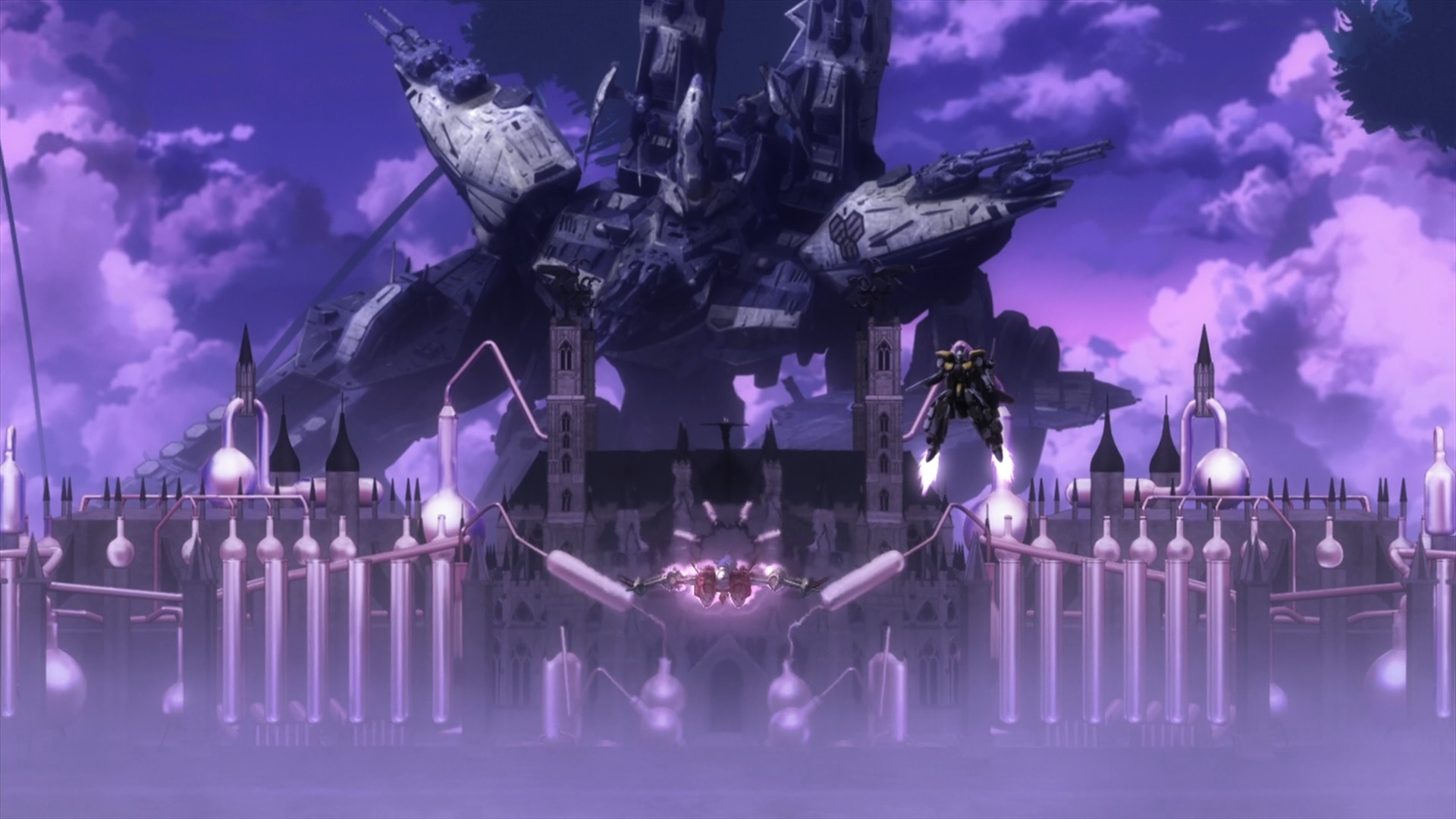
"Listen to our song!" (3:59)
The Japanese line is "Watashi tachi no uta wo kike!" (私たちの歌を聴け!). This is referencing a line said by Sheryl Nome (シェリル・ノーム) in "Macross Frontier" (マクロスF), an anime series that aired in 2008. Her line goes, "Atashi no uta wo kike!" (あたしの歌を聴け!), which translates to "Listen to my song!".
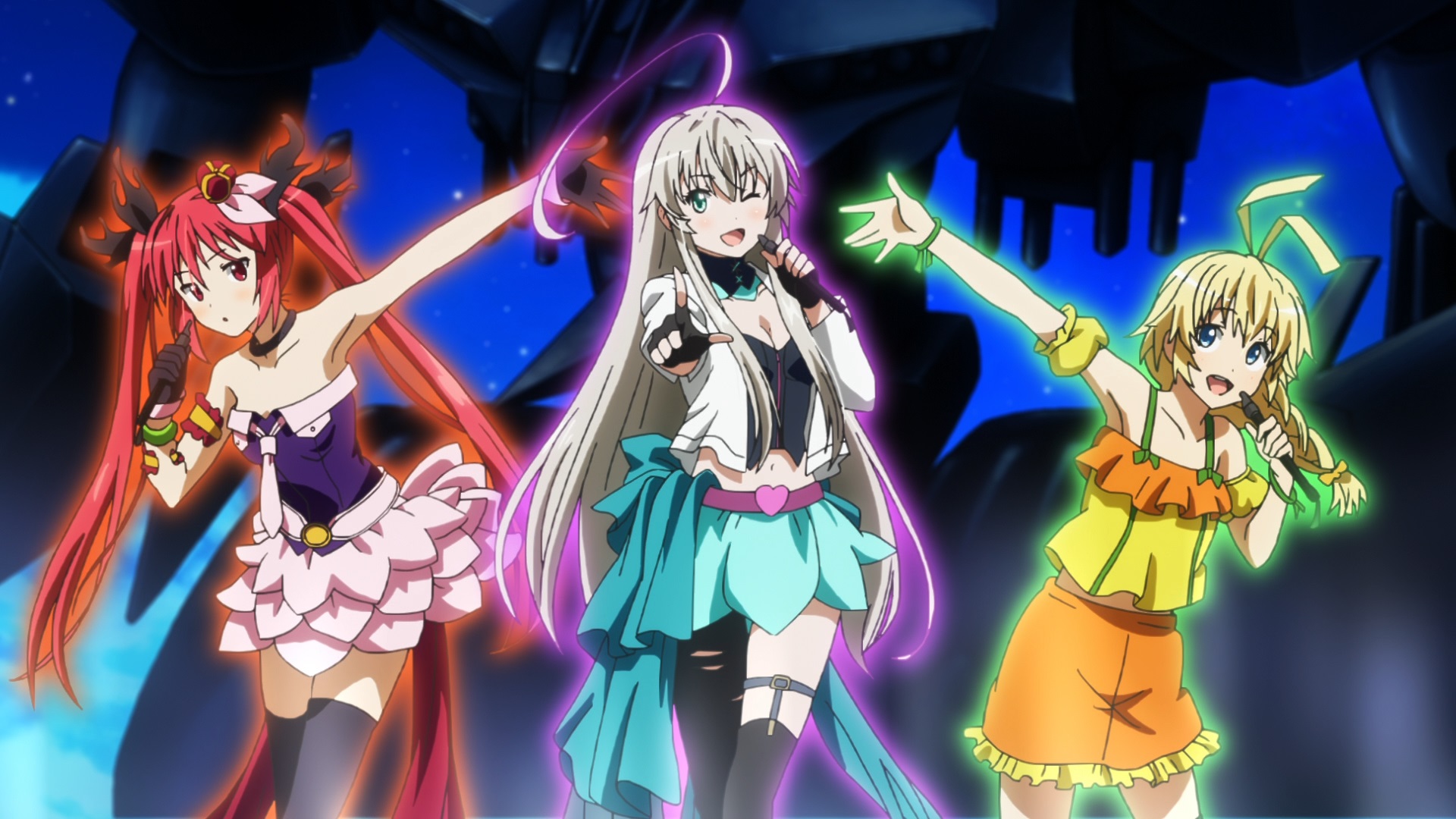
(4:02)
The outfits of Nyaruko and Cthuko are based on outfits worn by Sheryl Nome (シェリル・ノーム) and Ranka Lee (ランカ・リー) in "Gekijouban Makurosu Furontia Sayonara no Tsubasa" (劇場版 マクロスF 恋離飛翼 ~サヨナラノツバサ~), "Macross Frontier The Movie Wings of Goodbye", an anime movie that was released in 2011. The outfit Hasta is wearing is based on an outfit worn by Ranka Lee in the anime series of "Macross Frontier" (マクロスF) and also in "Macross Frontier The Movie Wings of Goodbye". Images for reference:
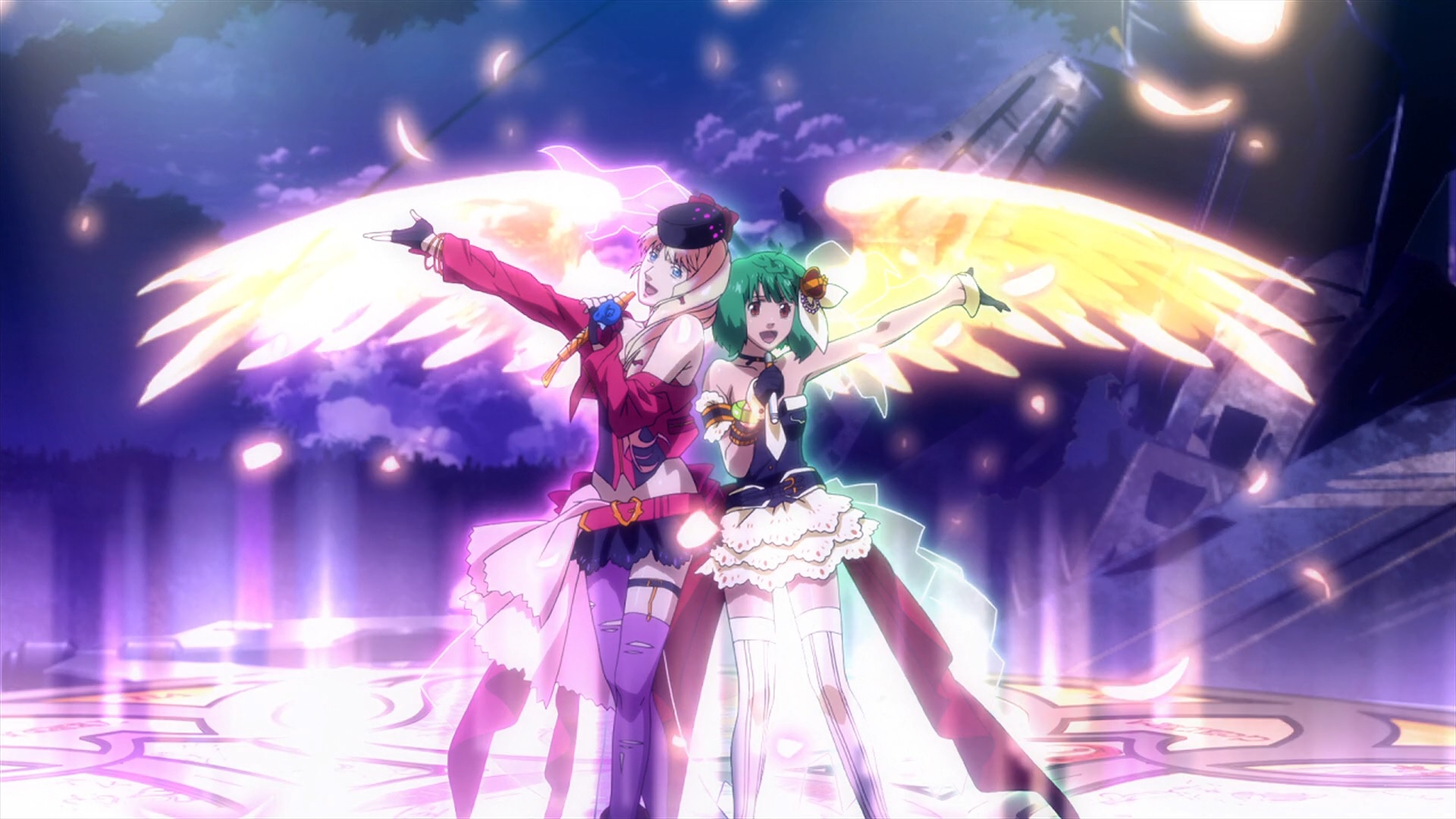
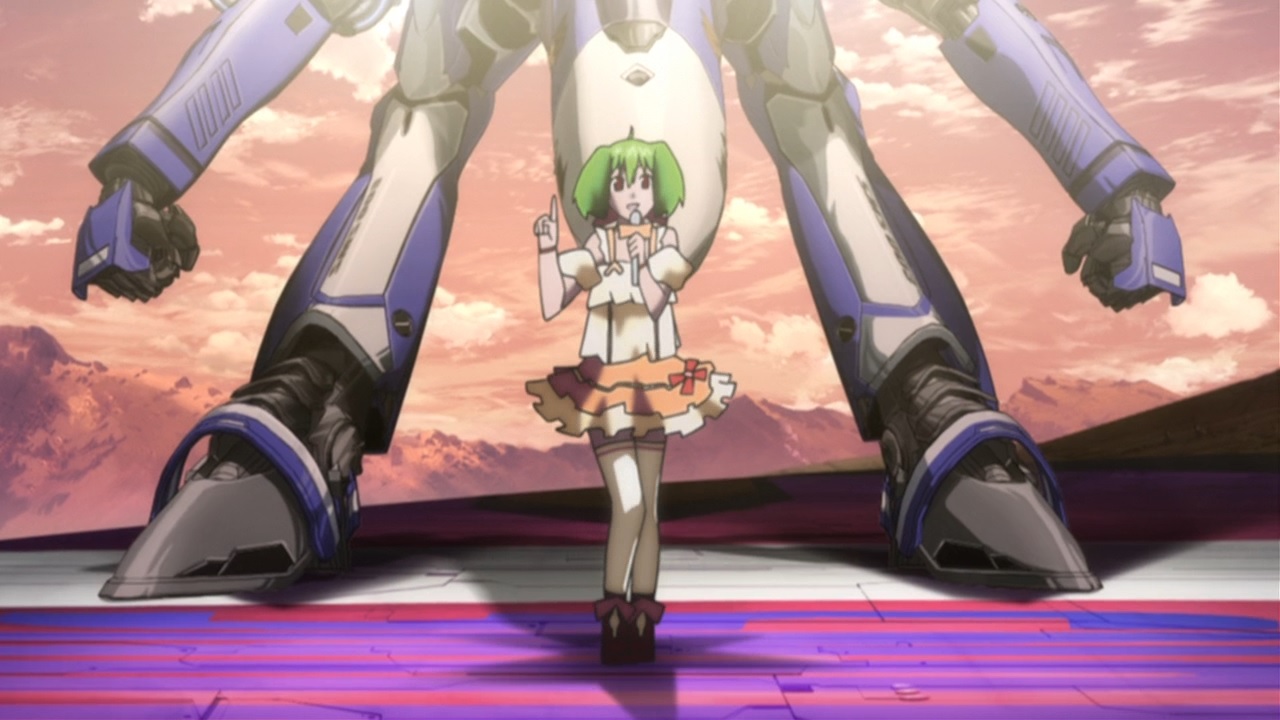
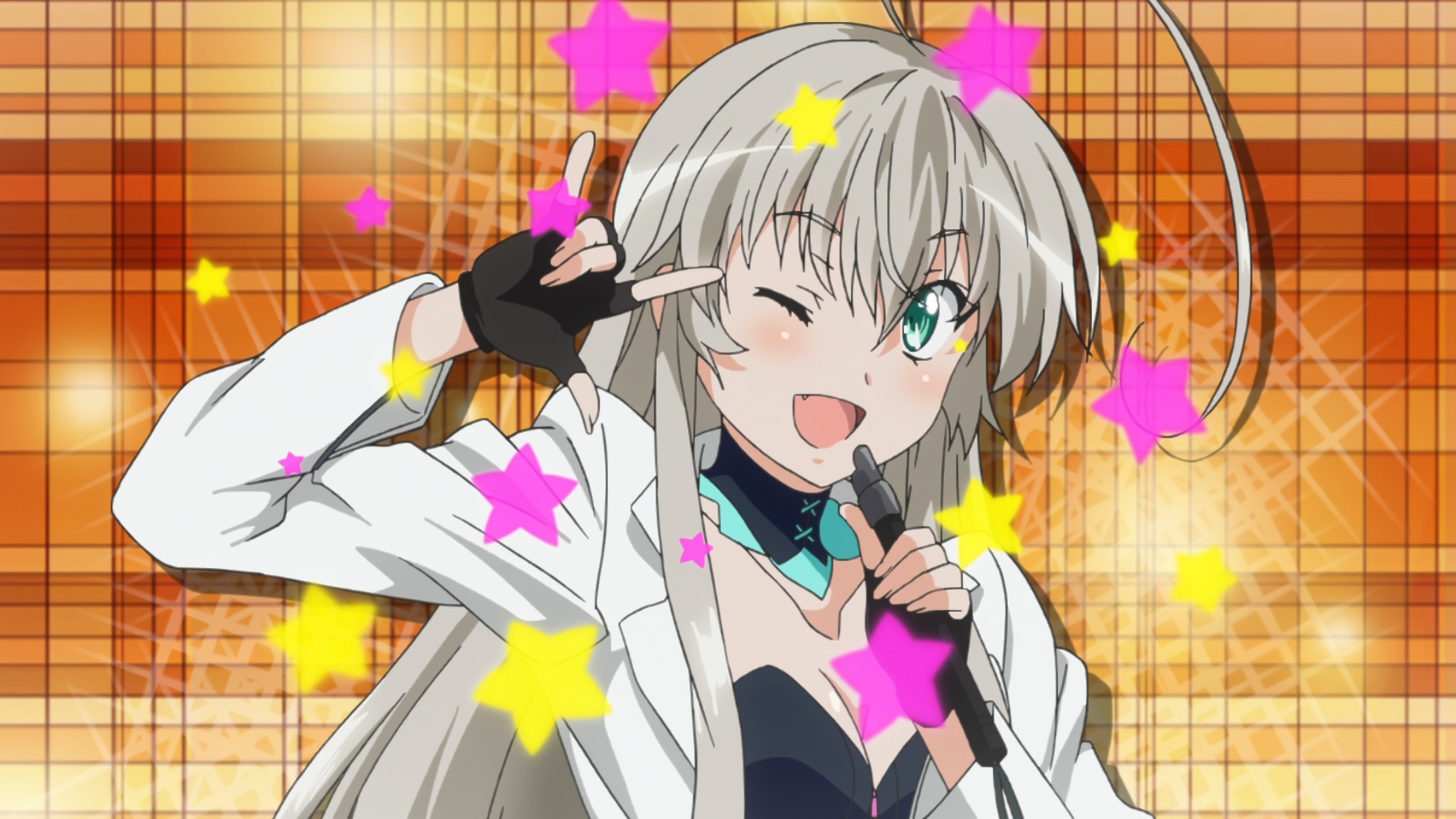
"Kira!" (4:03)
The Japanese line is "Kira!" (キラッ!). This is an onomatopoeia for something sparkling or glittering. This line and Nyaruko's pose are referencing Ranka Lee (ランカ・リー) from "Macross Frontier" (マクロスF), an anime series that aired in 2008. In episode 12, Ranka says this line while making this pose. Image for reference:

(4:06)
The lines at this time go as follows:
「私たちの高校を救うため、スクール這いよるプロジェクト開始!私たちのラブクラフトライブ!」This is referencing "Raburaibu! School idol project" (ラブライブ! School idol project), "Love Live! School idol project", a Japanese multimedia project that began in 2010. In "Love Live", the main characters form an idol group in order to save their high school from closing down.
"Watashi tachi no koukou wo sukuu tame, sukuuru haiyoru purojekuto kaishin! Watashi tachi no rabukurafuto raibu!"
"In order to save our high school, School Crawling Project begin! Our Lovecraft Live!"

(4:11)
Nyaruko, Cthuko, and Hasta wore these same outfits in episode 1 of "Haiyore! Nyaruko-san W". Image for reference:
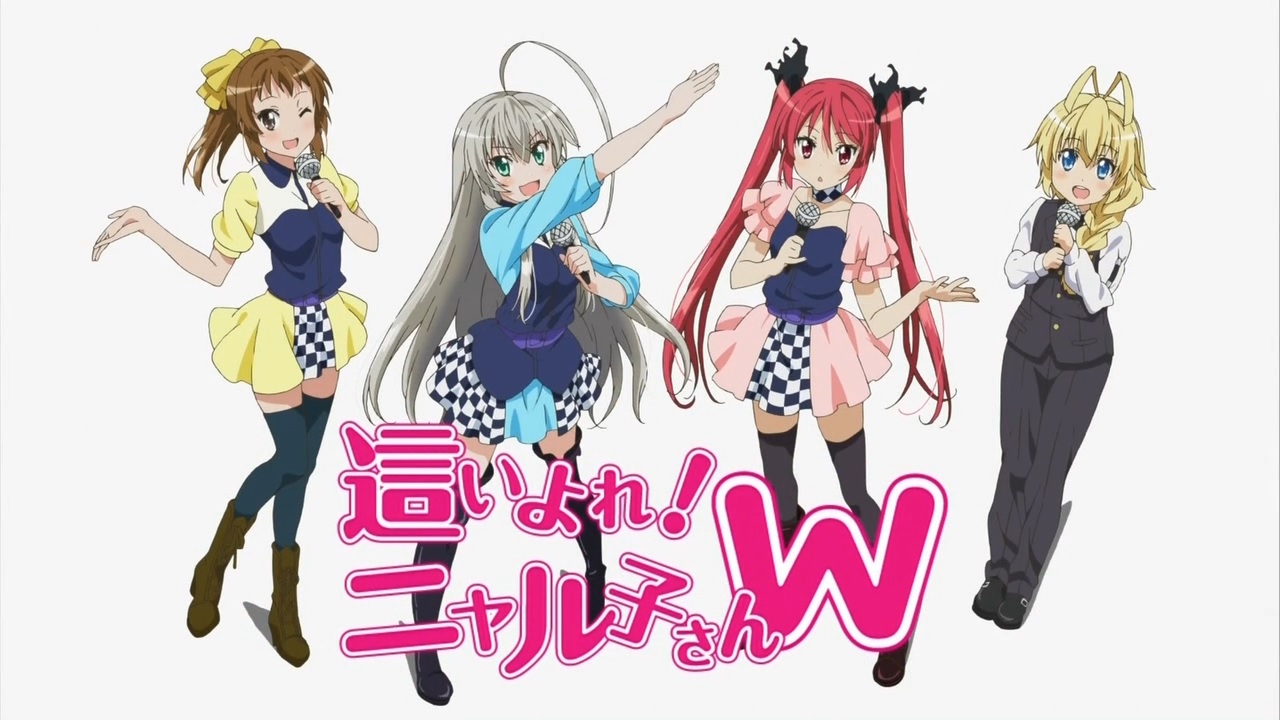
The outfits that Nyaruko, Cthuko, and Tamao are wearing are based on the outfits that their respective voice actors wore at "Jashin Seitansai" (邪神生誕祭), "Evil God Birth Festival", a live event for "Haiyore! Nyaruko-san" held on August 5, 2012. Nyaruko's voice actor, Asumi Kana (阿澄佳奈), was wearing blue. Cthuko's voice actor, Matsuki Miyu (松来未祐), was wearing pink. Tamao's voice actor, Ootsubo Yuka (大坪由佳), was wearing yellow. Image for reference (from left to right, Ootsubo Yuka, Asumi Kana, Matsuki Miyu):
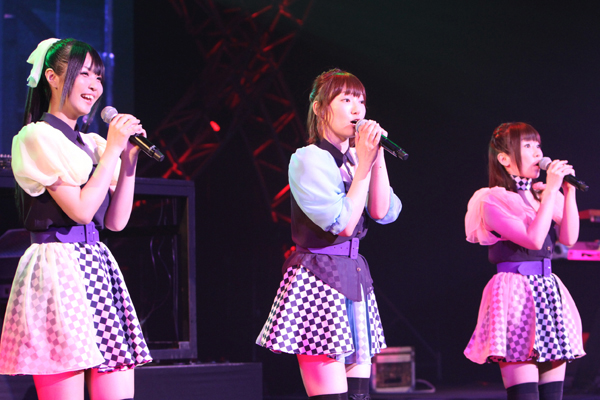
Source of image: http://moca-news.net/article/20120805/201208052326a/01/
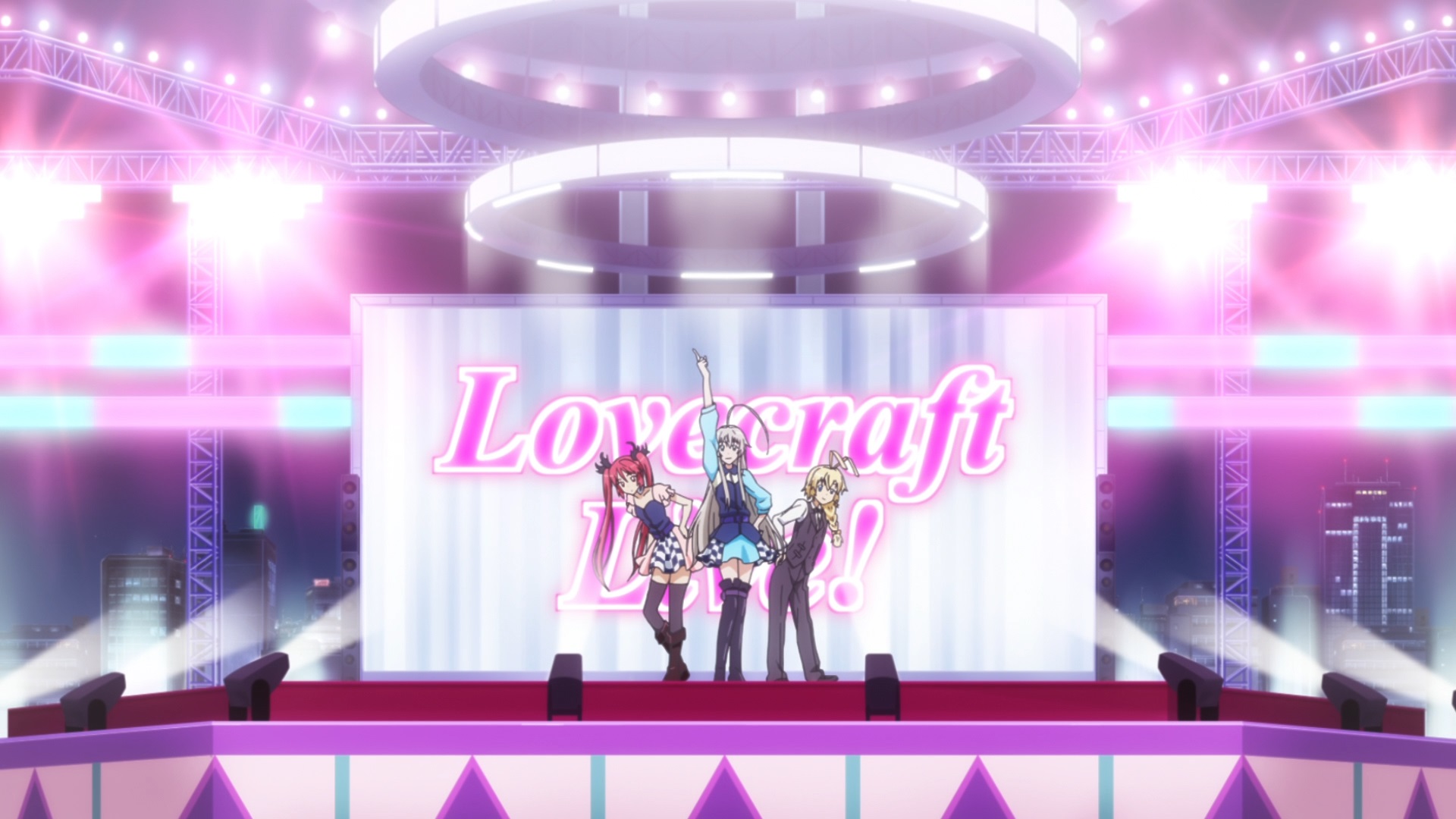
(4:14)
This scene is referencing the opening animation sequence for "Love Live! School idol project" (ラブライブ! School idol project), an anime series that aired in 2013. Image for reference:
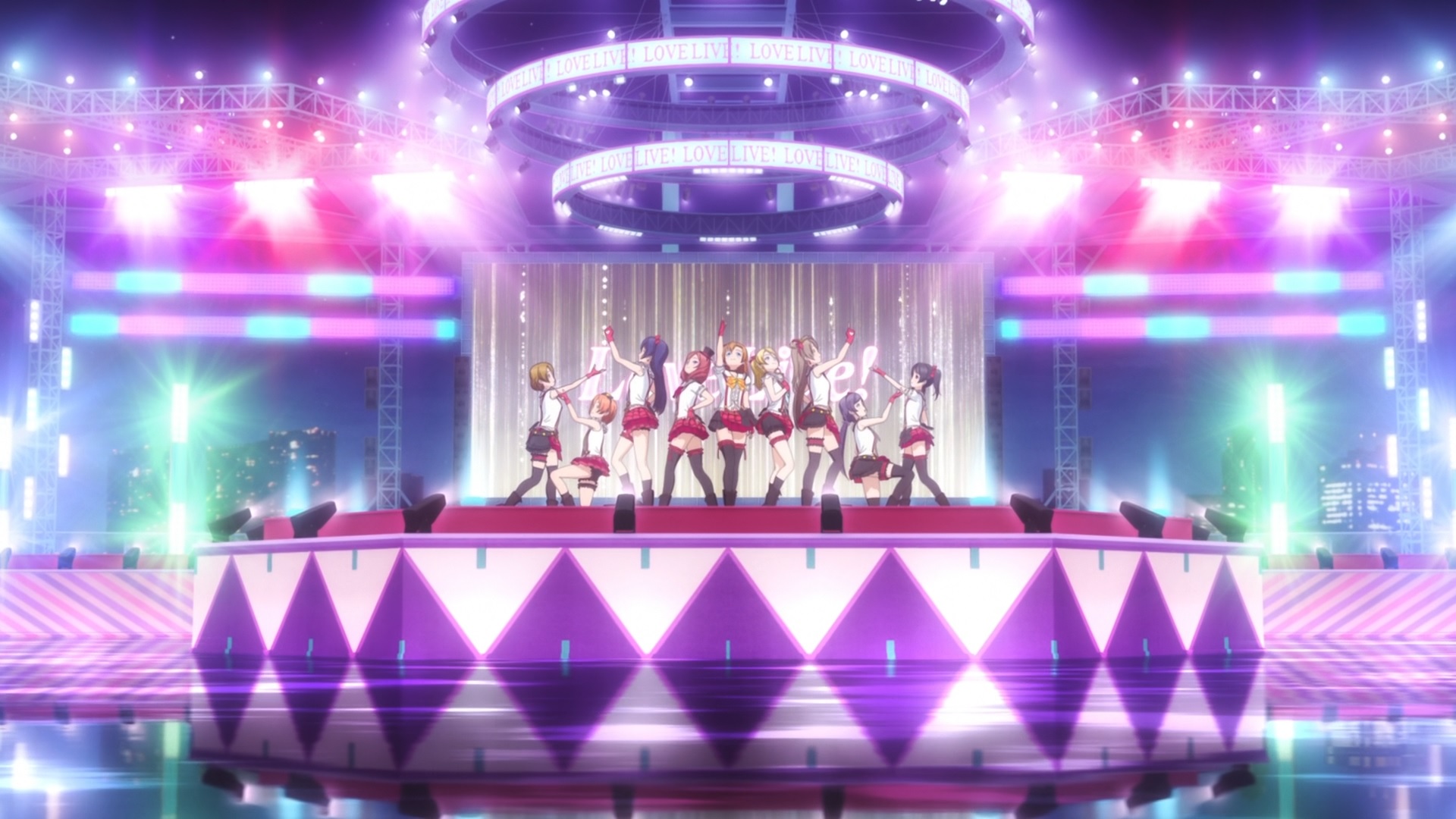
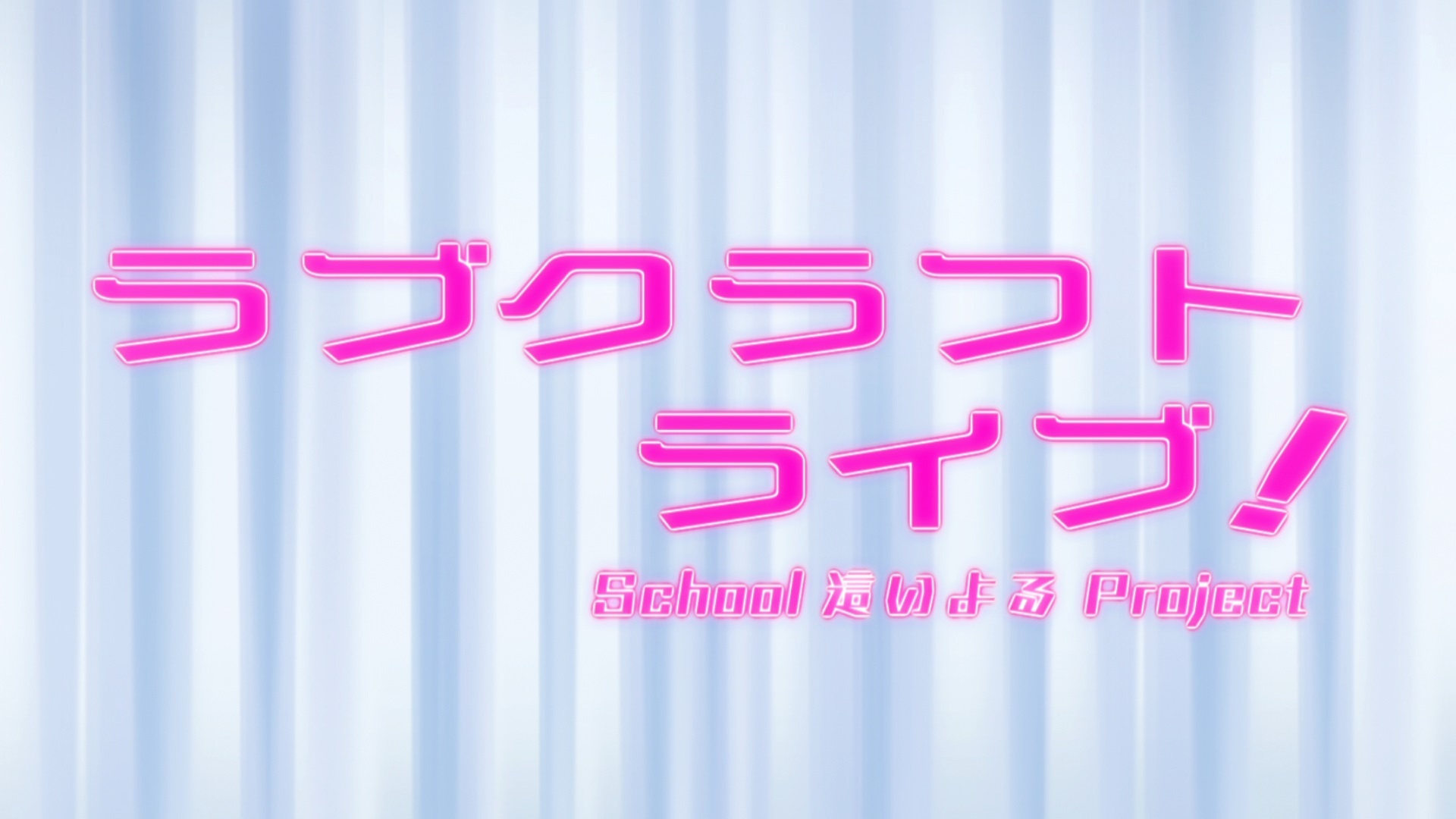
(4:17)
The text reads "Rabukurafuto Raibu! School Haiyoru Project" (ラブクラフト ライブ! School 這いよる Project), "Lovecraft Live! School Crawling Project". This is referencing the logo for "Love Live! School idol project" (ラブライブ! School idol project) as it appears in the opening animation sequence for the series. Image for reference:
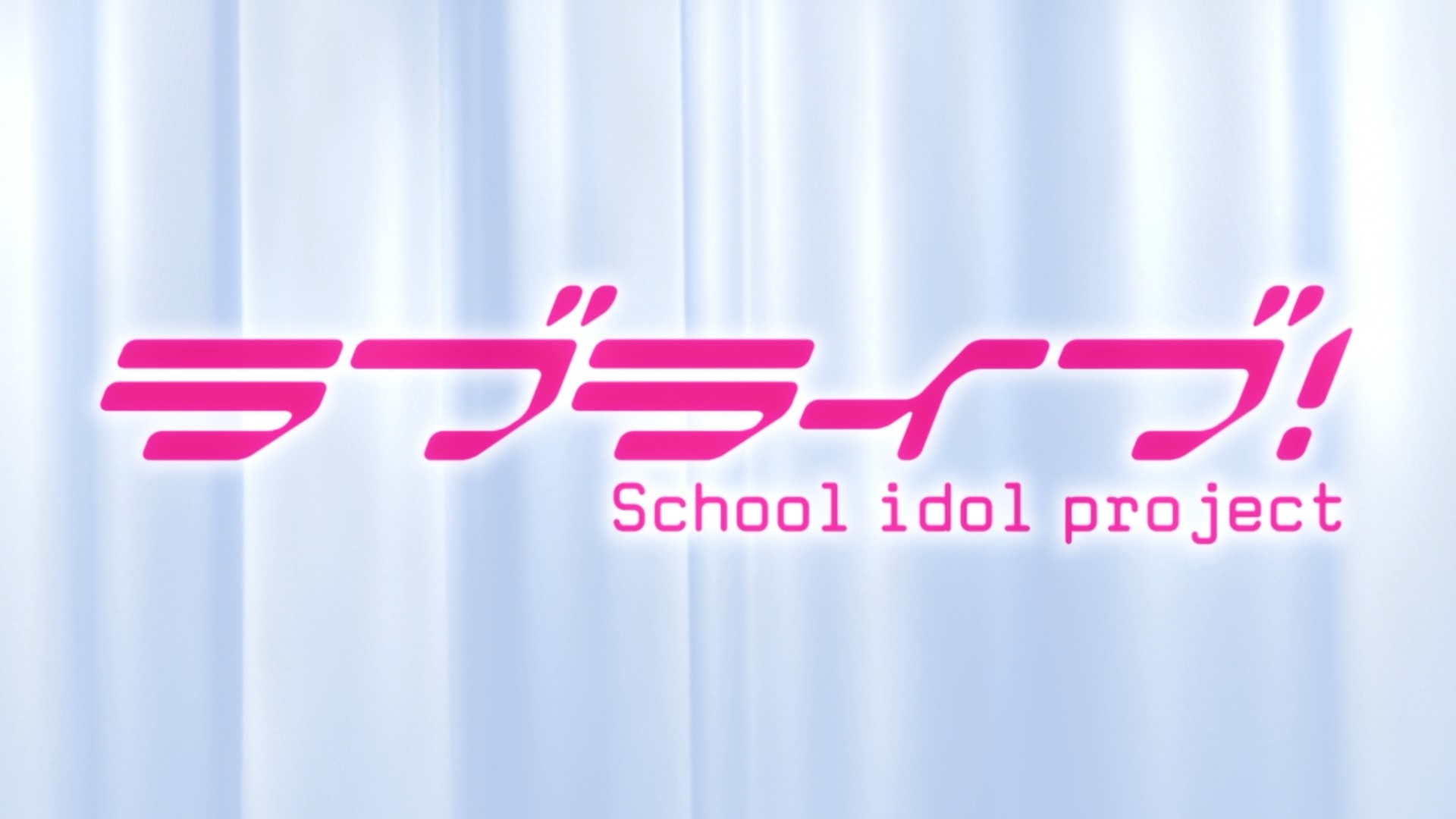
"We're going to upload this to Migo Migo Video." (4:29)
There are two references here:
* "Migo Migo Douga" (ミゴミゴ動画), "Migo Migo Video", is referencing "Nico Nico Douga" (ニコニコ動画), "Nico Nico Video", a Japanese video sharing website.
* "Migo Migo Douga" is also referencing Mi-Go (ミ=ゴ), a species of creature in the Cthulhu Mythos.
"Is the order Nyaruko?" (4:41)
The Japanese line is "Gochuumon ha Nyaruko desu ka?" (ご注文はニャル子ですか?). This is referencing "Gochuumon ha Usagi desu ka?" (ご注文はうさぎですか?), "Is the order a rabbit?", a manga series written by Koi and published from 2011 and is currently ongoing.
"I see!" (5:14)
The Japanese line is "Nyaruhodo!" (にゃるほど!). This is using the Japanese term "naruhodo" (なるほど), which generally means "I understand", and changing the sound of the first syllable to "nya" to make it sound Nyaruko-like. "Nyaruhodo" is an often used word on "Nyaruraji" (にゃるラジ), a web radio show about "Haiyore! Nyaruko-san" that is hosted by Asumi Kana (阿澄佳奈) and Matsuki Miyu (松来未祐), the voice actors of Nyaruko and Cthuko respectively. For example, the word was mentioned in episodes 3, 4, and 6 of "Haiyoru Nyaruraji -OMEGA-" (這いよるにゃるラジ-OMEGA-), the second season of the web radio series that aired in 2010.
"Mahiro also has the daily life of a high school boy." (5:16)
The Japanese line is "Mahiro-san mo danshi koukousei no nichijou desu kara ne" (真尋さんも男子高校生の日常ですからね). This is referencing "Danshi Koukousei no Nichijou" (男子高校生の日常), "Daily Lives of high school boys", a manga series written by Yamauchi Yasunobu (山内 泰延) and published from 2009 to 2012.

"Within a sound and very improper dream" (5:20)
The Japanese line is "Kenzen de daibu midaraa na yume no naka de" (健全で大分淫らーな夢の中で). This line is referencing "Kenzen Robo Daimidaraa" (健全ロボ ダイミダラー), "Daimidaler the Sound Robot", an anime series that aired in 2014.S1
* "Kenzen" (健全) translates to "sound" or "wholesome" in reference to health. This is the same word used in the title of the series.
* "Daibu midaraa" (大分淫らー) translates to "very improper" and is a pun referencing "Daimidaraa" (ダイミダラー), "Daimidaler".
* Nyaruko's pose and hair are referencing Daimidaler. Image for reference:
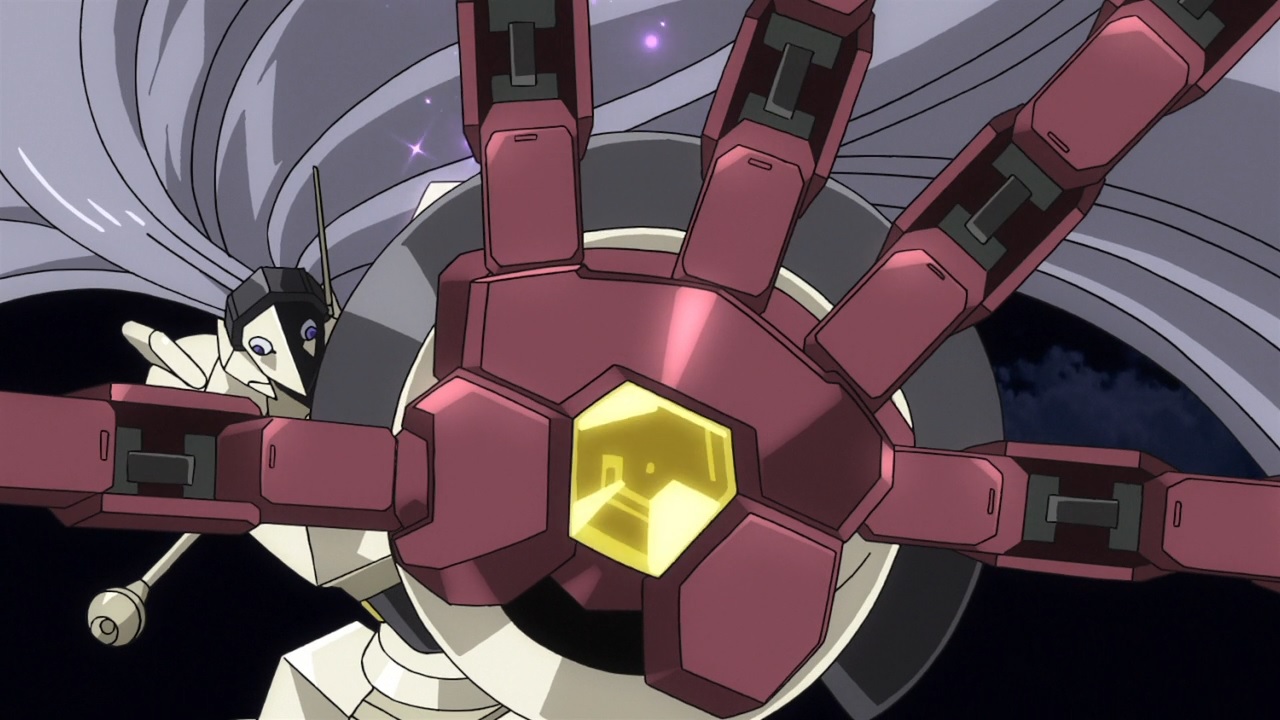
(5:23)
The Japanese line goes as follows:
「ほとばしる熱いパトスで、この宇宙と私を抱いて、神話になったんですね!」This is referencing lines in the lyrics to "Zankoku na Tenshi no Teeze" (残酷な天使のテーゼ), "A Cruel Angel's Thesis", a song sung by Takahashi Youko (高橋 洋子) and released in 1995. This song is the opening theme song to "Shinseiki Evangerion" (新世紀エヴァンゲリオン), "Neon Genesis Evangelion", an anime series that aired from 1995 to 1996. The original lines go as follows:
"Hotobashiru atsui patosu de, kono sora to watashi wo daite, shinwa ni natta n desu ne!"
"With overflowing burning pathos, you embraced this sky and me, and became a legend!"
「ほとばしる熱いパトスで 思い出を裏切るなら」
「この宇宙 (そら) を抱いて輝く」
「少年よ 神話になれ」
"Hotobashiru atsui patosu de omoide wo uragiru nara"
"Kono sora wo daite kagayaku"
"Shounen yo shinwa ni nare"
"If you will betray you memories with overflowing burning pathos"
"Embrace this sky and shine"
"Young boy become a legend"
"With a universal scale love, if you wanted me" (5:32)
The Japanese line is "Uchuu teki kibo no rabu de I want you saretara" (宇宙的規模のラブでI want youされたら). This is referencing a line in the lyrics to "Zutto Be with you" (ずっと Be with you), "Always Be with you", the ending theme song to "Haiyore! Nyaruko-san" that aired in 2012. This song is sung by Asumi Kana (阿澄佳奈), Nyaruko's voice actor. The original line of the song goes, "Uchuu teki kibo no rabu de I want you" (宇宙的規模のラブでI want you), which translates to "with a universal scale love, I want you".
"Speaking of uu, there's nyaa!" (5:39)
The Japanese line is "Uu to ieba nyaa!" (うーと言えばにゃー!). The phrases "uu!" (うー!) and "nyaa!" (にゃー!) are referencing the same lines contained in the lyrics to "Taiyou Iwaku Moeyo Kaosu" (太陽曰く燃えよカオス), the opening theme song to "Haiyore! Nyaruko-san" that aired in 2012. This song is sung by Asumi Kana (阿澄佳奈), Matsuki Miyu (松来未祐), and Ootsubo Yuka (大坪由佳), the voice actors of Nyaruko, Cthuko, and Kurei Tamao respectively.
"Speaking of SAN points, there's pinch!" (5:40)
There are two sets of references here:
* The Japanese line is "SAN chi to ieba pinchi!" (SAN値と言えばピンチ!). The phrases "SAN chi!" (SAN値!) and "pinchi!" (ピンチ!) are referencing the same lines contained in the lyrics to "Koi ha Kaosu no Shimobe Nari" (恋は渾沌の隷也), "Love is a Servant of Chaos", the opening theme song to "Haiyore! Nyaruko-san W" that aired in 2013. This song is sung by Asumi Kana (阿澄佳奈), Matsuki Miyu (松来未祐), and Ootsubo Yuka (大坪由佳), the voice actors of Nyaruko, Cthuko, and Kurei Tamao respectively.
* Nyaruko's poses are referencing those of Kamen Rider 1 and Kamen Rider 2 from "Kamen Rider" (仮面ライダー), a Japanese TV show about a masked super hero that aired from 1971 to 1973. Images for reference:

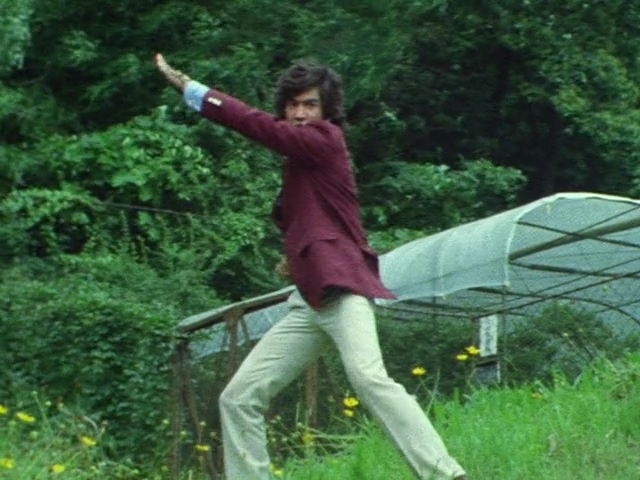
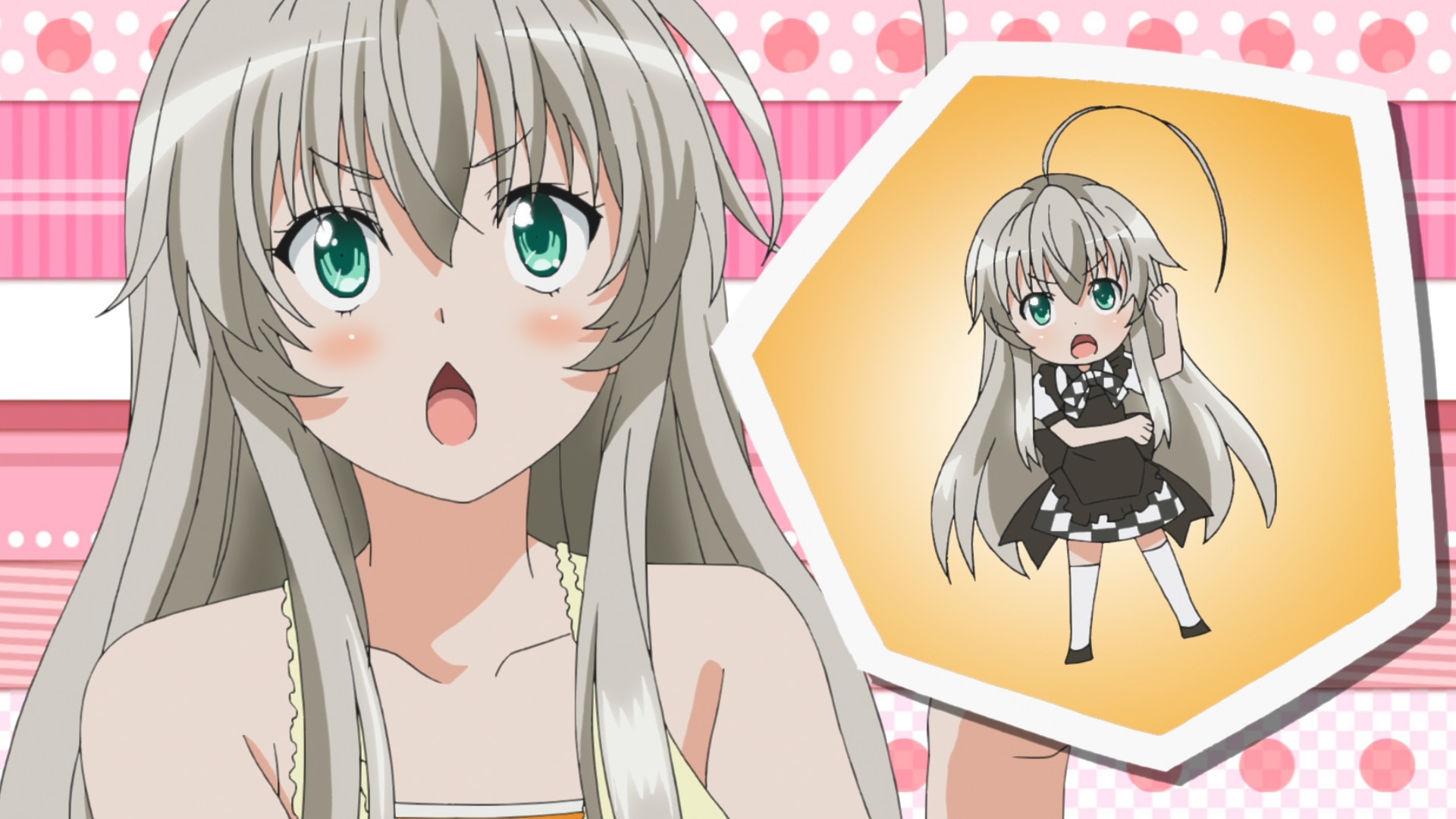

"Being in flirty love come home with Nyaruko in a dream without my permission deserves certain death." (5:59)
"Icharabu come home!" (イチャラブCome Home!), "Flirty love come home!", is the name of a song sung by Itou Kanae (伊藤かな恵), Iguchi Yuka (井口裕香), and Taketatsu Ayana (竹達彩奈) and released in 2010. This song is the first ending theme song for "Mayoi Neko Oobaaran!" (迷い猫オーバーラン!), "Stray Cat Overrun!", an anime series that aired in 2010.S1
"Shut up! Shut up! Shut up!" (6:54)
The Japanese line is "Urusai! Urusai! Urusai!" (うるさい!うるさい!うるさい!). This is a catch phrase said by Shana (シャナ) in "Shakugan no Shana" (灼眼のシャナ), a light novel series written by Takahashi Yashichirou (高橋弥七郎) and published from 2002 to 2012. On a related note, in the anime adaptation of this series, Shana is voiced by Kugimiya Rie (釘宮理恵), who also voices Hasta.
"Gyaosu! Region! Irisu!" (6:56)
There are three references here:
* Gyaosu (ギャオス) is the name of a monster that appears in "Gamera Daikaijuu Kuuchuu Kessen" (ガメラ 大怪獣空中決戦), "Gamera Giant Monster Midair Battle", a movie released in 1995.S1
* Region (レギオン) is the name of a monster that appears in "Gamera 2 Region Shuurai" (ガメラ2 レギオン襲来), "Gamera 2 Attack of Region", a movie released in 1996.S1
* Irisu (イリス) is the name of a monster that appears in "Gamera 3 Irisu Kakusei" (ガメラ3 邪神〈イリス〉覚醒), "Gamera 3 Awakening of Irisu", a movie released in 1999.S1
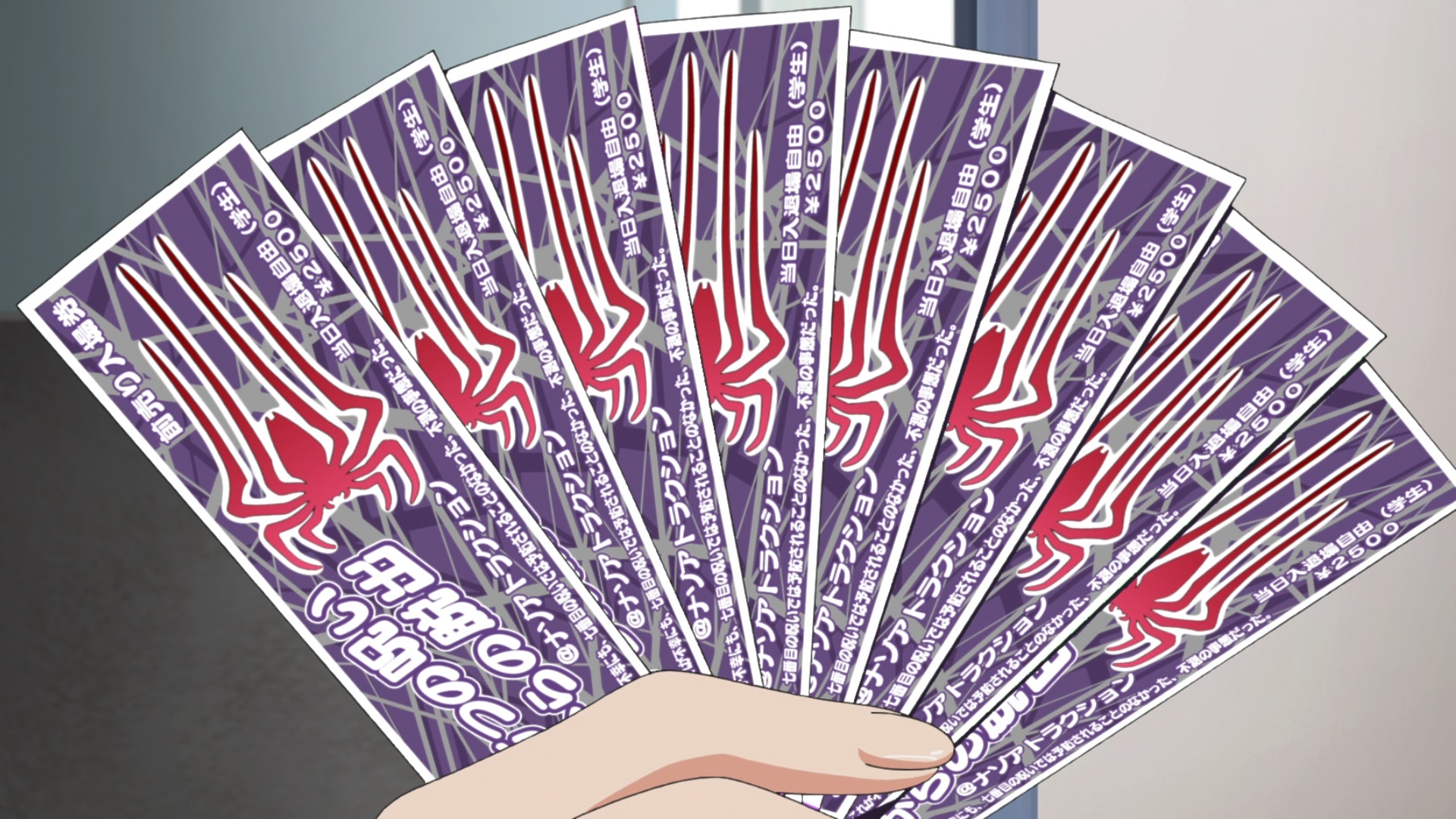
(7:24)
There are three references here:
* The symbol that appears on the tickets is referencing the symbol for Spider-Man used in "The Amazing Spider-Man 2" (アメイジング・スパイダーマン2), a movie released in 2014. Images for reference:


* The large Japanese text reads "Nanatsu no noroi kara no dasshutsu" (七つの呪いからの脱出), which translates to "Escape From The Seven Geases". This is referencing "The Seven Geases", a short story written by Clark Ashton Smith and first published in 1934. The title of the Japanese translation of this story is "Nanatsu no Noroi" (七つの呪い). In addition, Atlach-Nacha, a spider shaped creature that was created by Clark Ashton Smith, appears in this short story.
* The small Japanese text that is partially obscured by Tamao's hand goes as follows:
「これが不幸にも、七番目の呪いでは予防されることのなかった、不測の事態だった。」This is the final line of text in "The Seven Geases", a short story written by Clark Ashton Smith and first published in 1934.
"This, unfortunately, was a contingency that had not been provided against by the terms of the seventh geas."
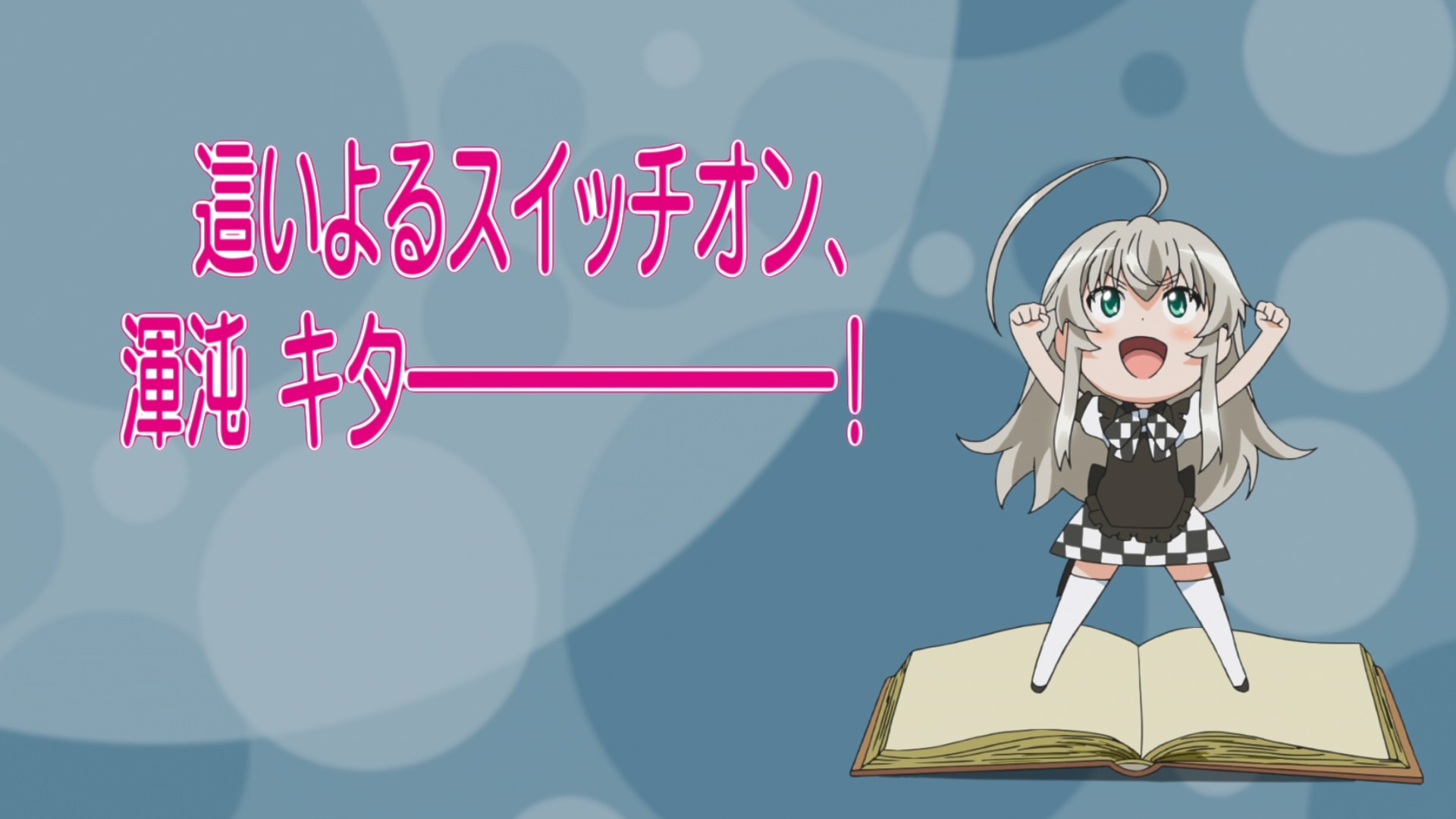
(7:33)
There are two references here:
* The title of this episode is "Haiyoru Suicchi On, Konton Kitaa!" (這いよるスイッチオン、渾沌キター!), which translates to "Crawling Switch On, Chaos is Here!". This is referencing the official catch phrases for "Kamen Rider Fourze" (仮面ライダーフォーゼ), a Japanese TV show about a masked super hero that aired from 2011 to 2012. The original catch phrases are "Seishun Suicchi On!" (青春スイッチオン!), which translates to "Youth Switch On!", and "Uchuu Kitaa!" (宇宙キター!), which translates to "Space is here!".
* In addition, Nyaruko's poses at this time are referencing those of Kamen Rider Fourze from "Kamen Rider Fourze". Images for reference:
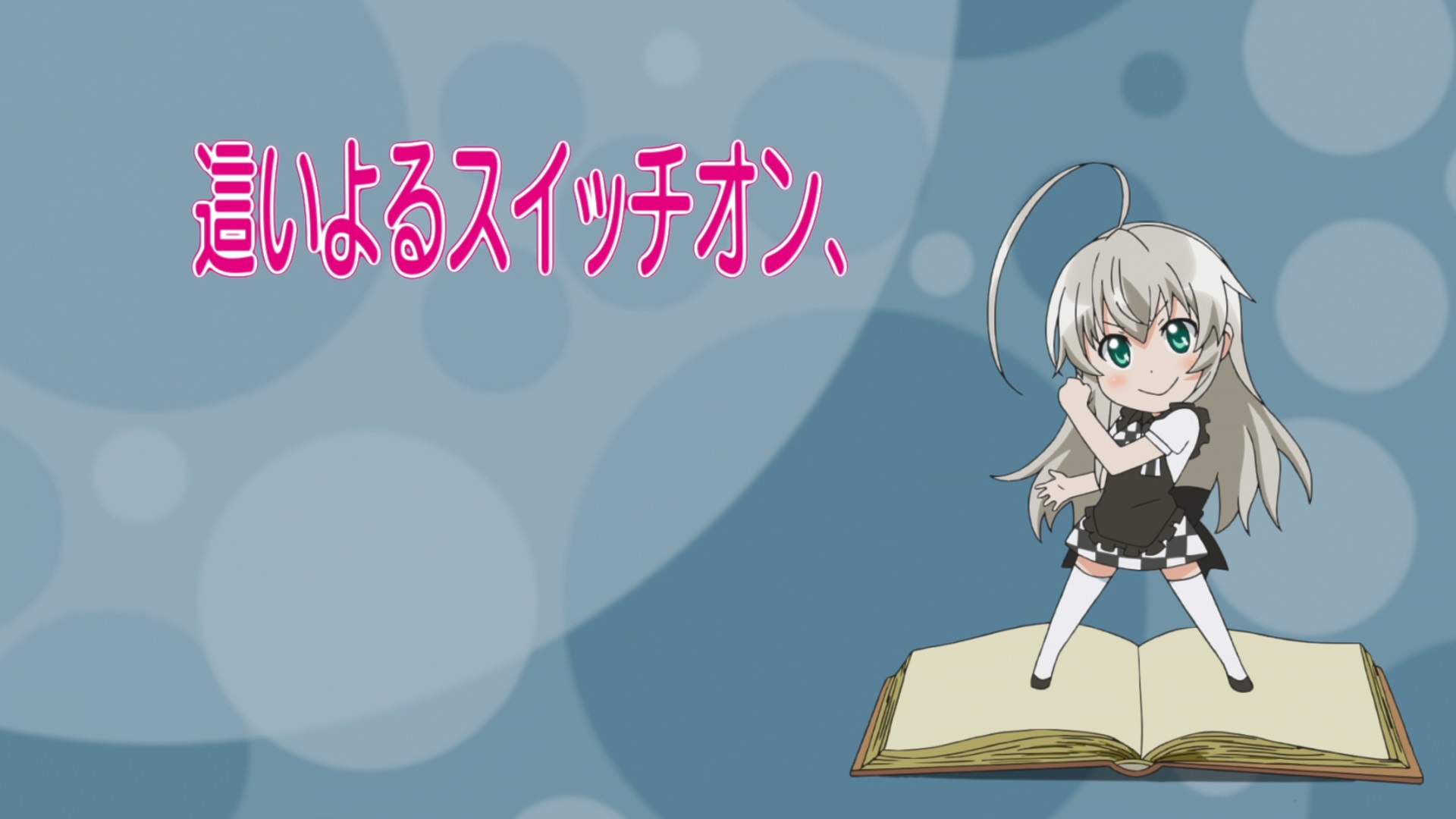

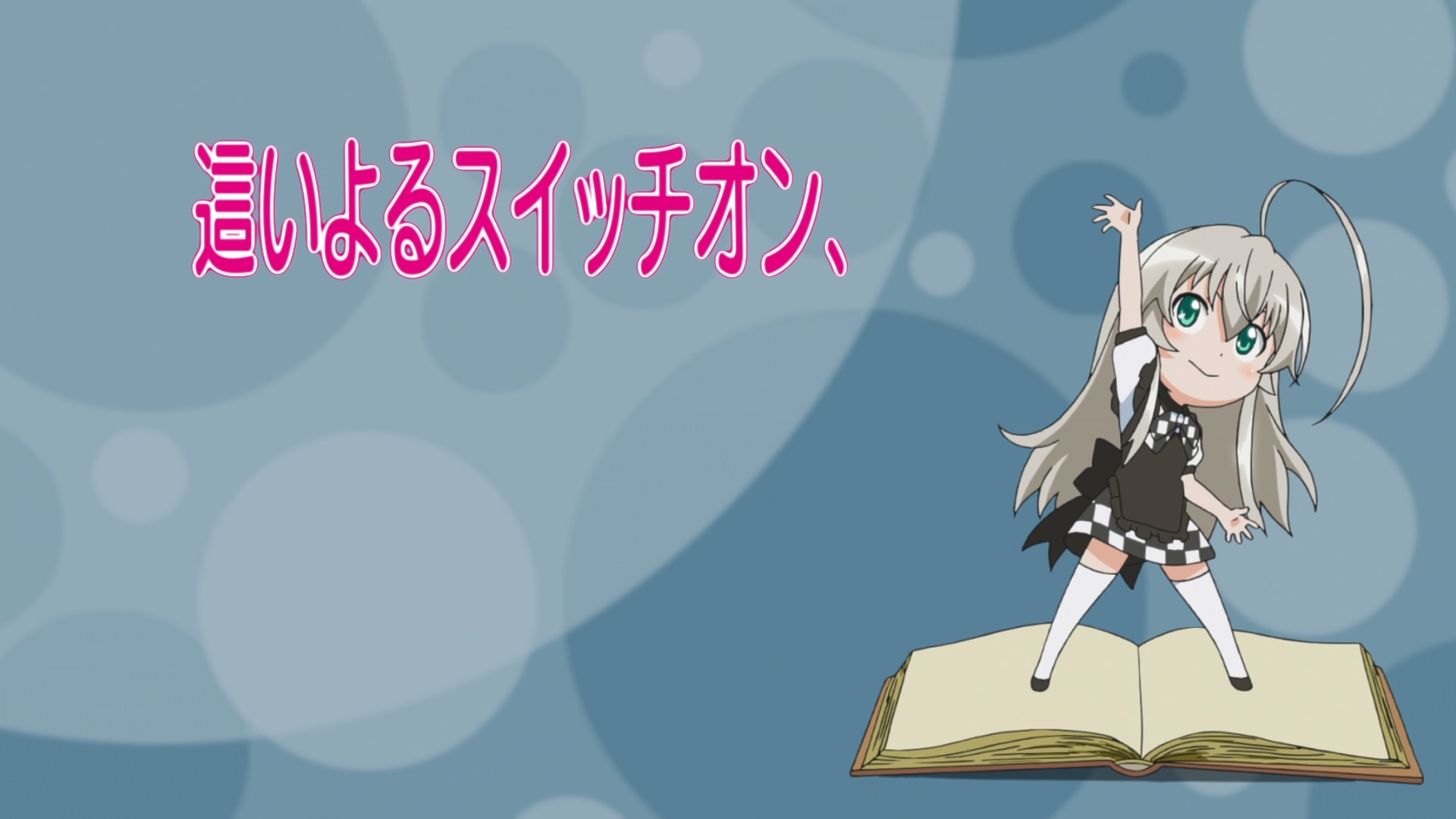
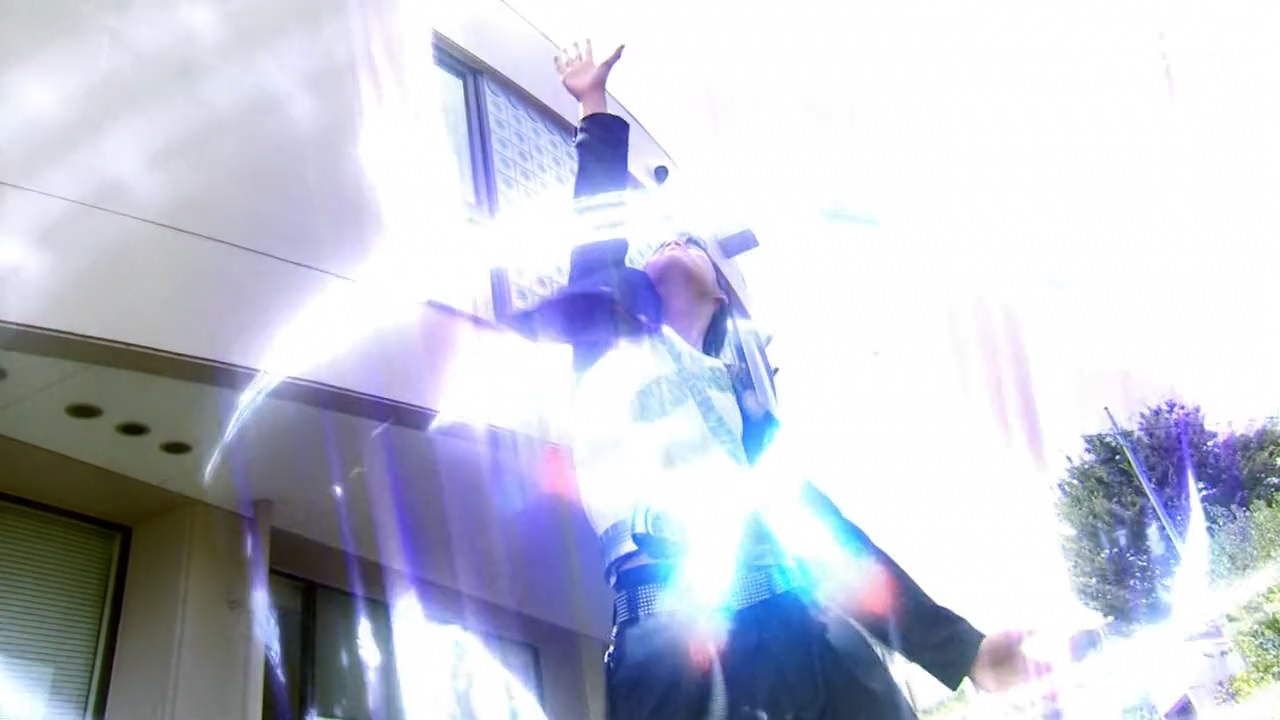
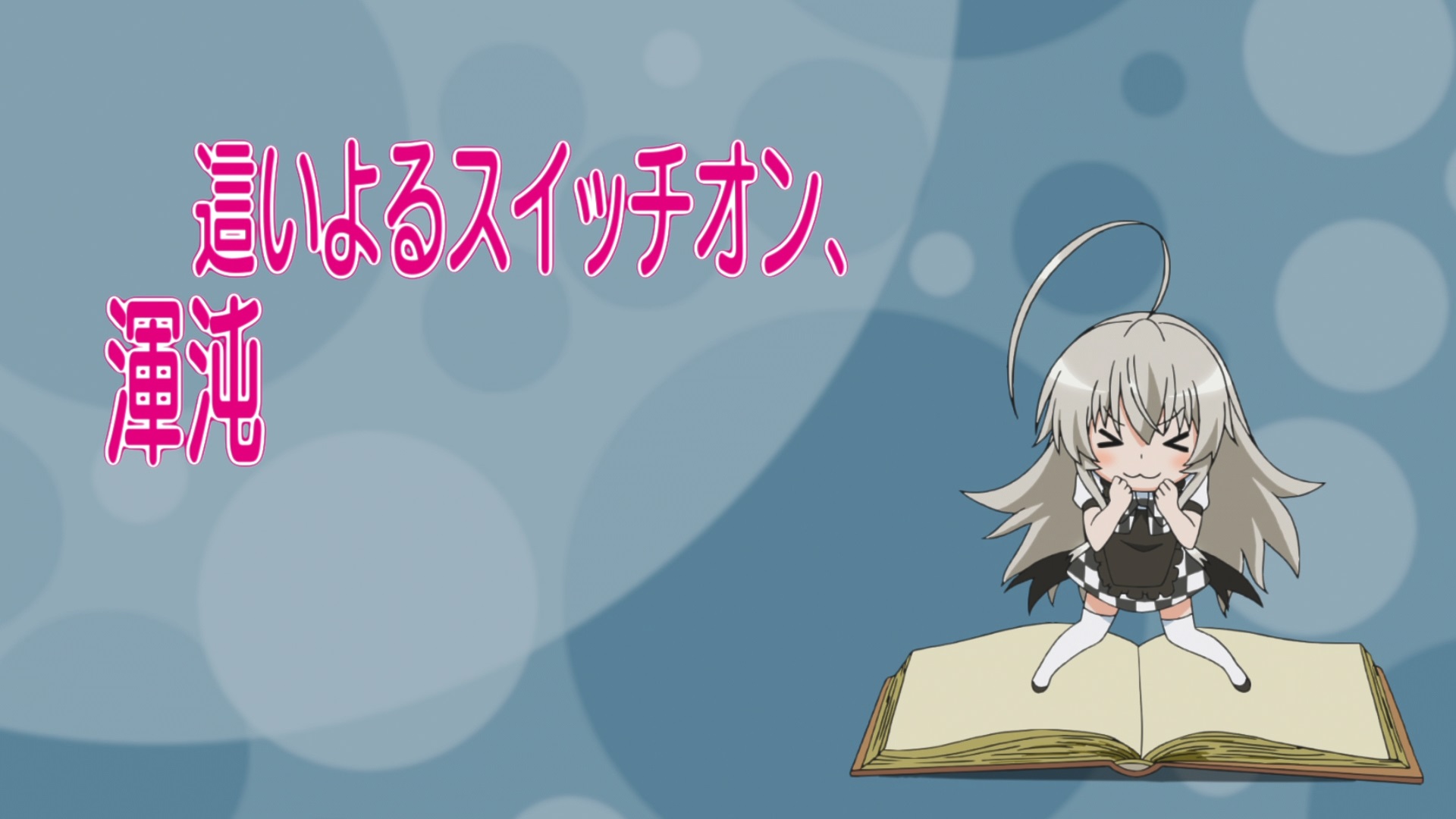
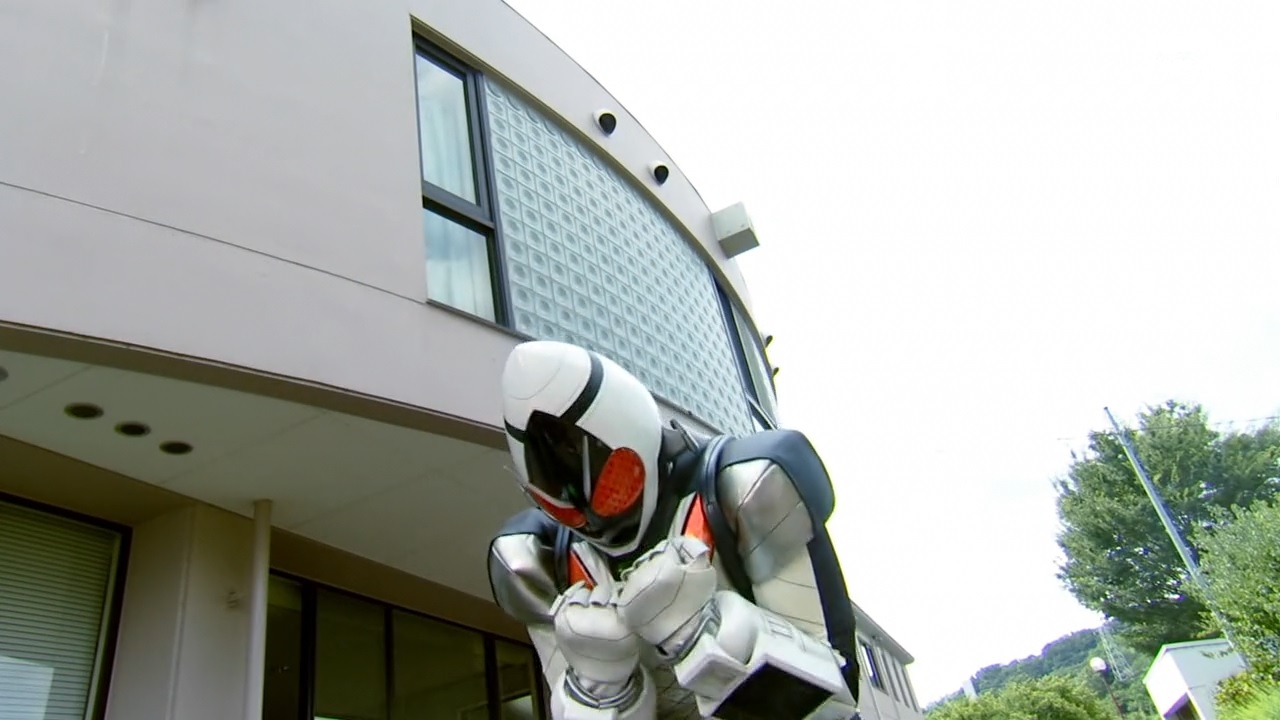

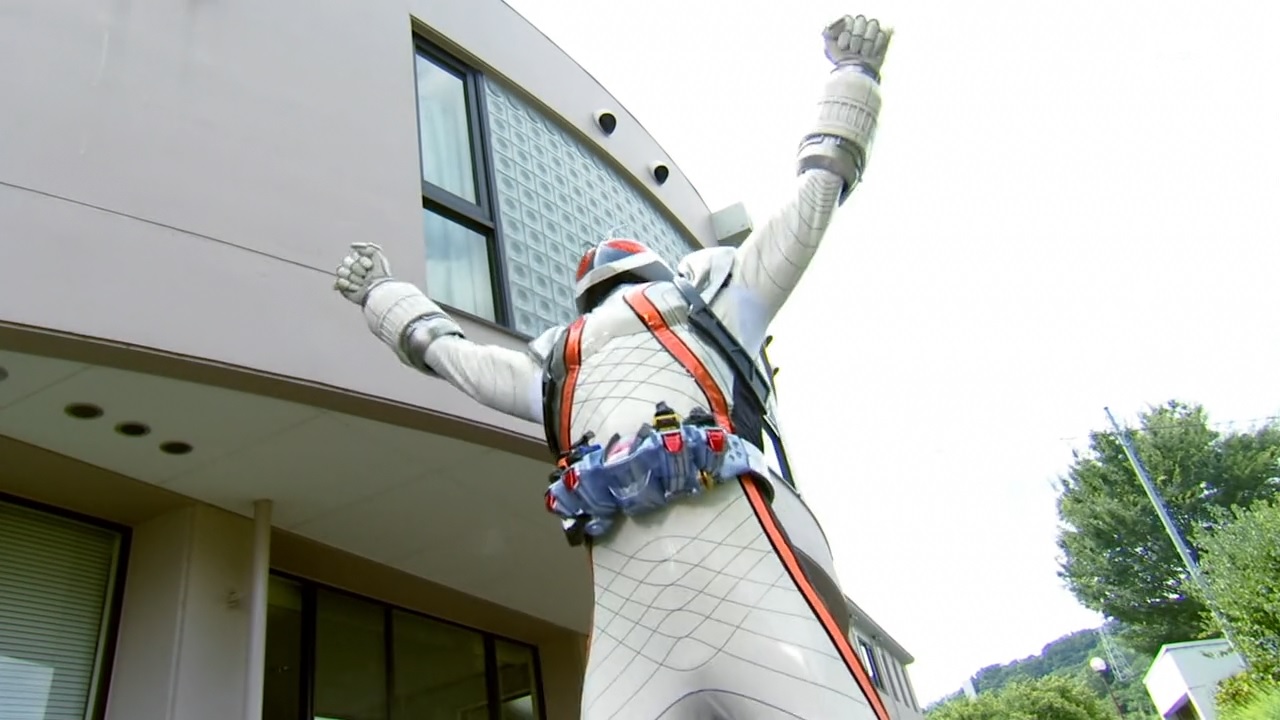
"Day by day if I increase her good will towards me like this, from Girlfriend BETA the BETA will be removed, and publically we'll become a formal married couple!" (7:51)
"Gaarufurendo kakko kari" (ガールフレンド(仮)), "Girlfriend BETA", is referencing a smartphone game by that name that was released in 2012. On a related note, in "Girlfriend BETA",
Nyaruko's voice actor, Asumi Kana (阿澄佳奈), also voices Tomura Michiru (戸村美知留),
Mahiro's voice actor, Kitamura Eri (喜多村英梨), also voices Shinonome Rei (東雲レイ),
Hasta's voice actor, Kugimiya Rie (釘宮理恵), also voices Kagami Matsuri (加賀美茉莉),
Tamao's voice actor, Ootsubo Yuka (大坪由佳), also voices Kakei Sonomi (掛井園美).
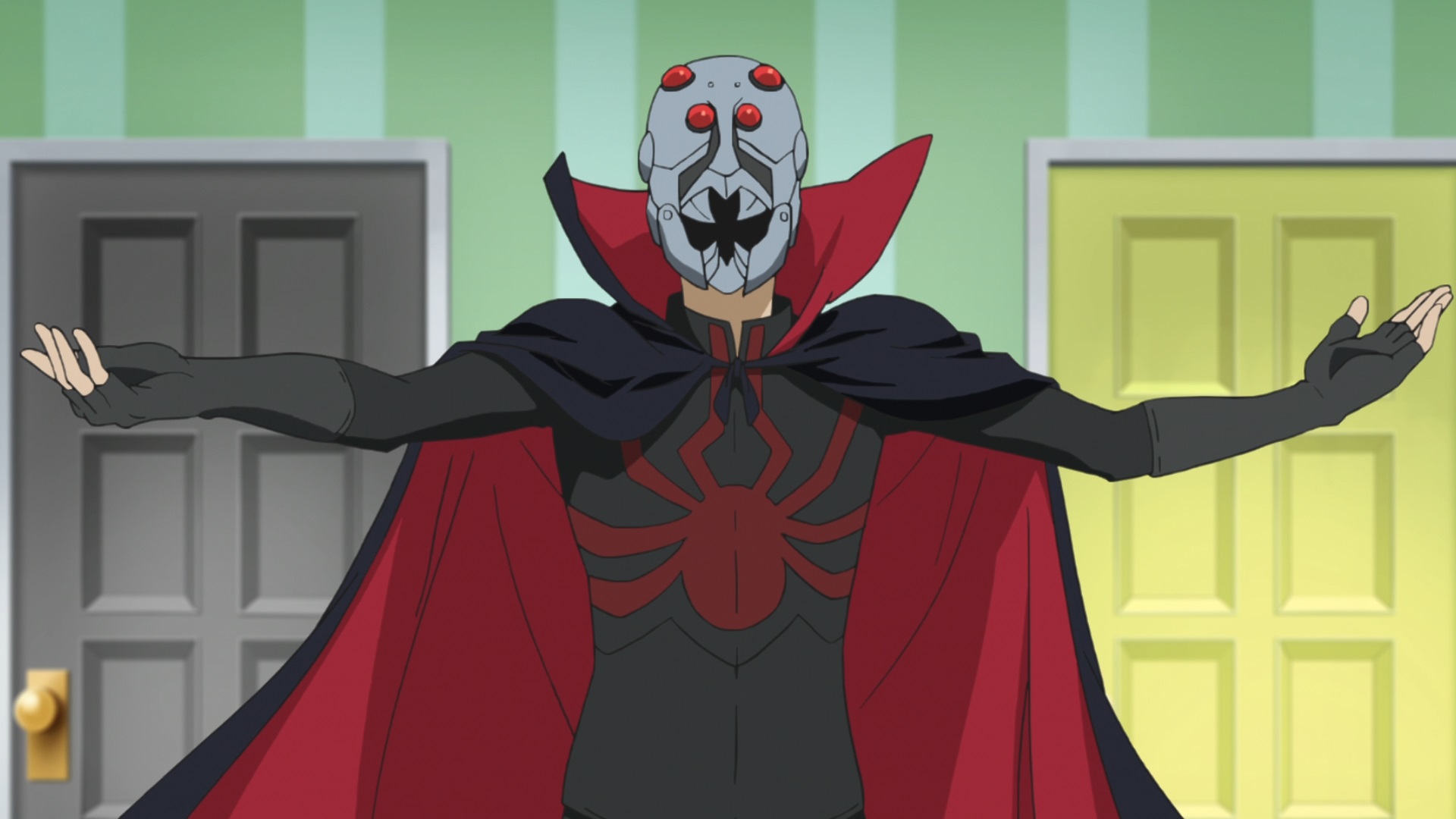
(8:29)
The appearance of the guide is based on that of Spider (スパイダー) from "Kamen Rider THE FIRST" (仮面ライダー THE FIRST), a movie released in 2005.S1 Image for reference:

Source of image: http://www.toei-video.co.jp/archive/rider1st/character.html
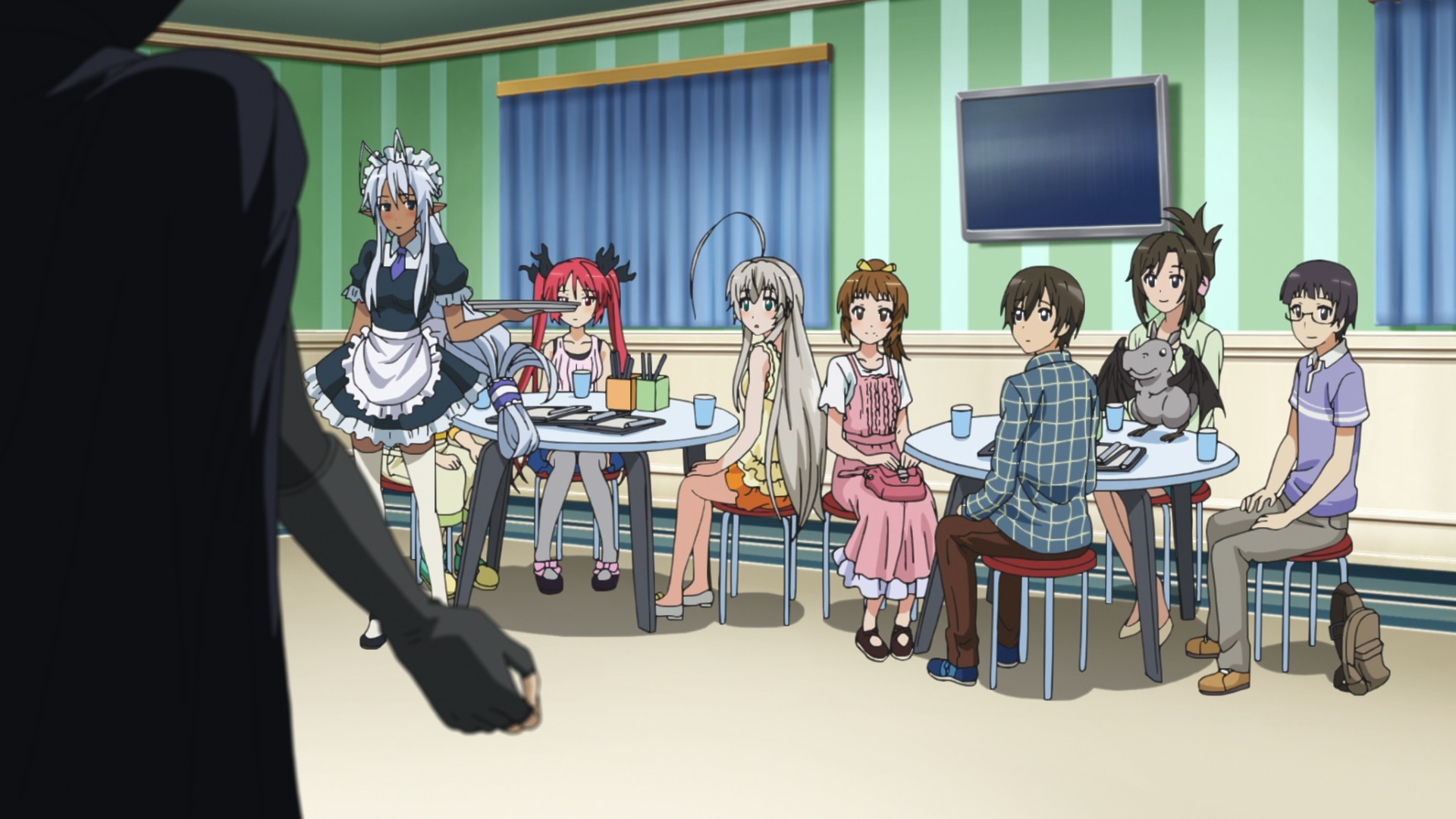
(8:35)
The appearance of the maid is based on the human appearance of Muramasa (村正) from "Soukou Akki Muramasa" (装甲悪鬼村正), "FullMetalDaemon MURAMASA", a visual novel released by Nitroplus (ニトロプラス) in 2009. Image for reference:
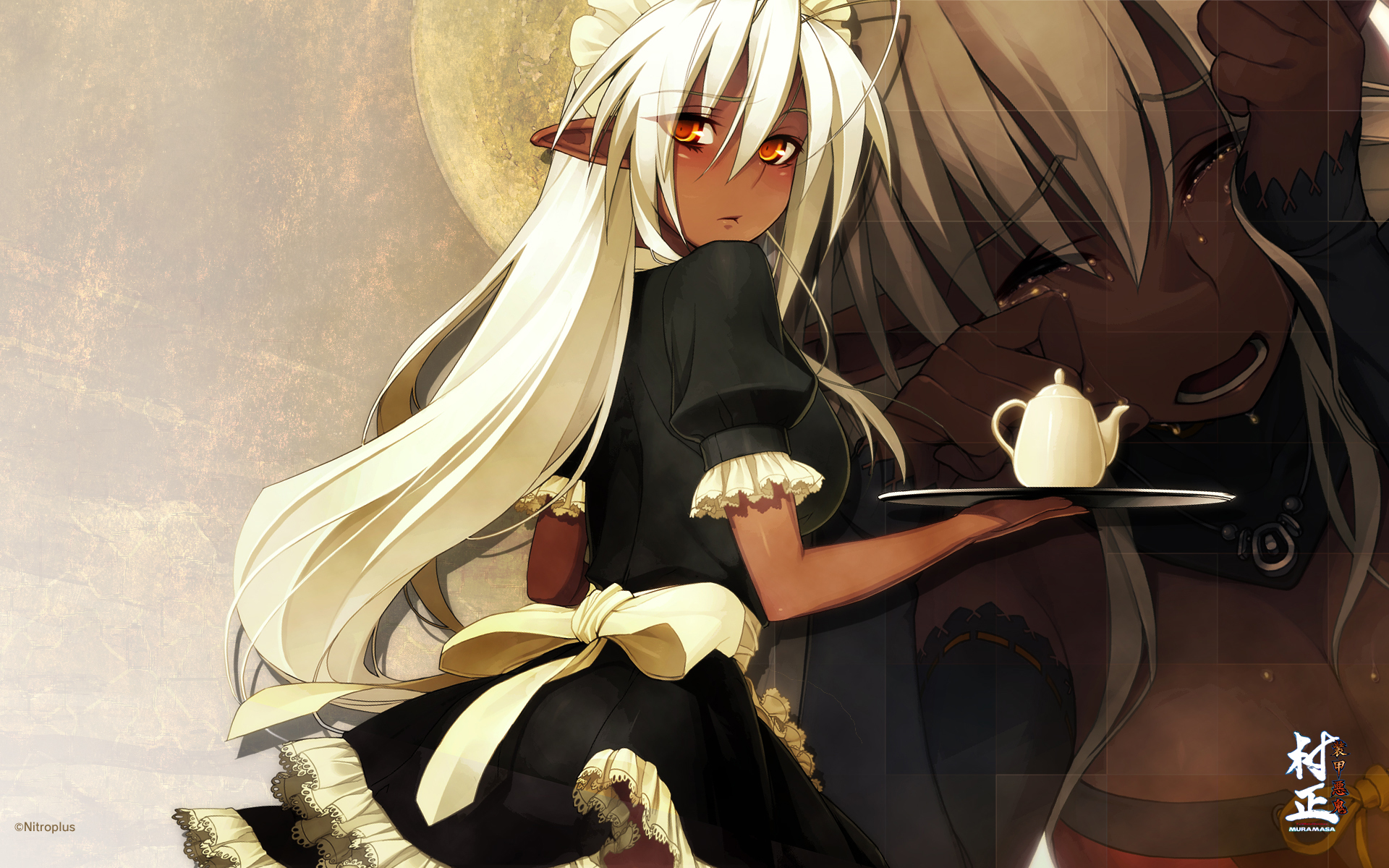
The reason why this maid appears here is likely because Muramasa's usual appearance is that of a mechanical spider. Image for reference:

Source of images: http://www.fmd-muramasa.com/wp.php
(9:28)
Nyaruko's pose is mimicking that of Kamen Rider 1 from "Kamen Rider" (仮面ライダー), a Japanese TV show about a masked super hero that aired from 1971 to 1973. Images for reference:
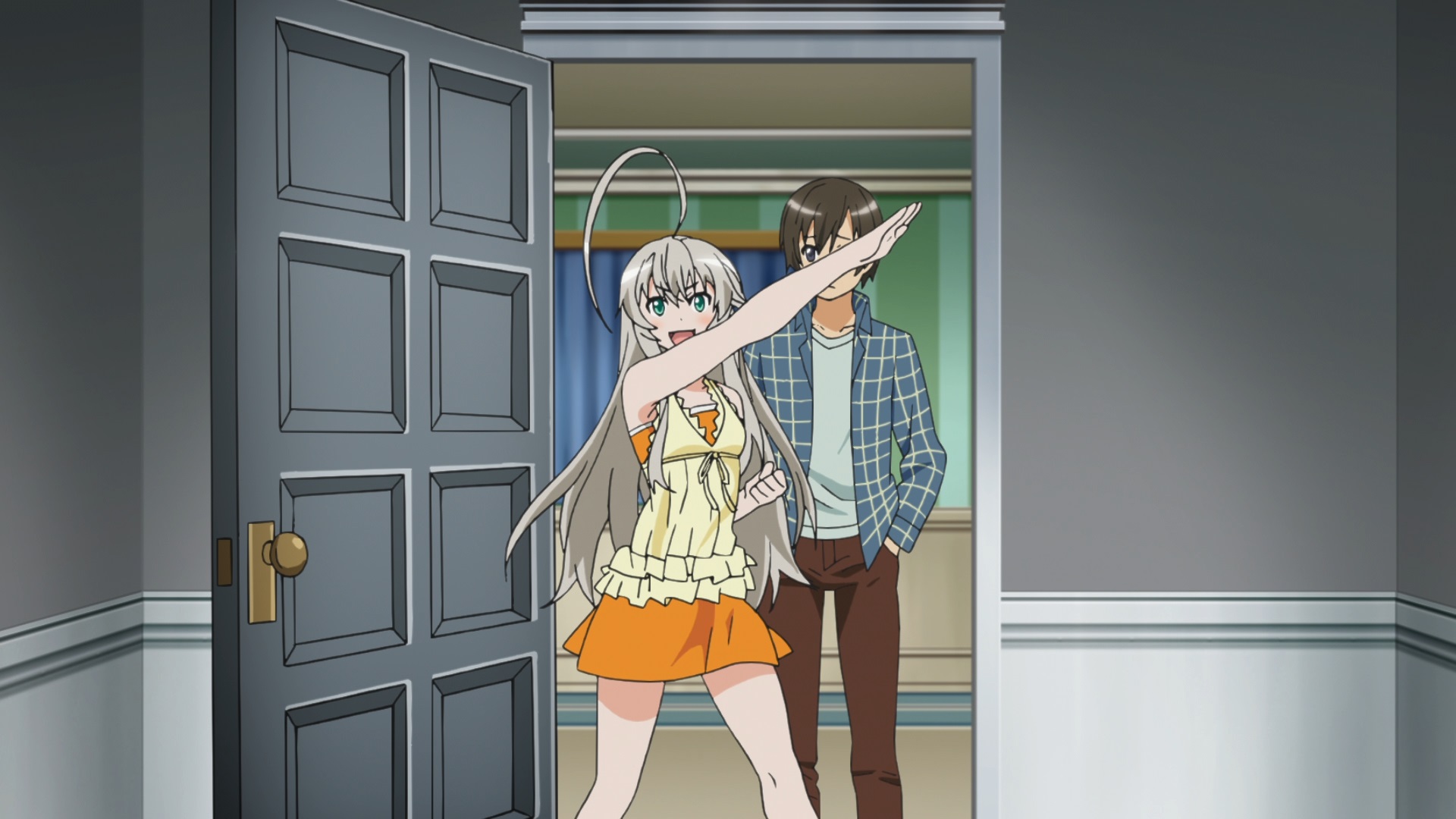

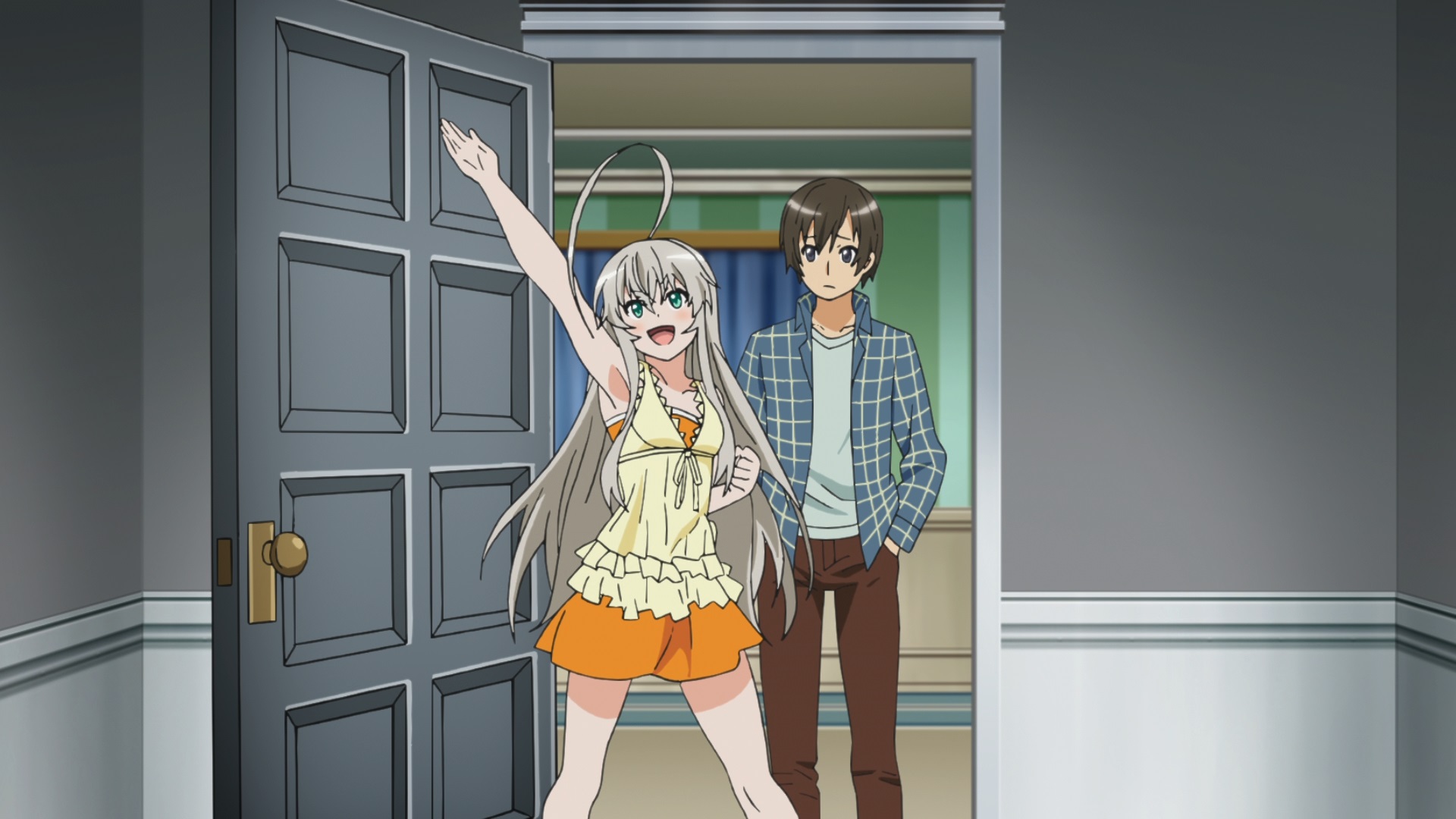
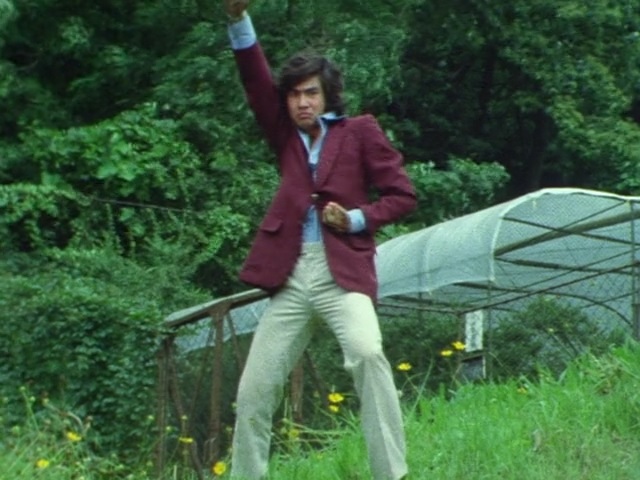
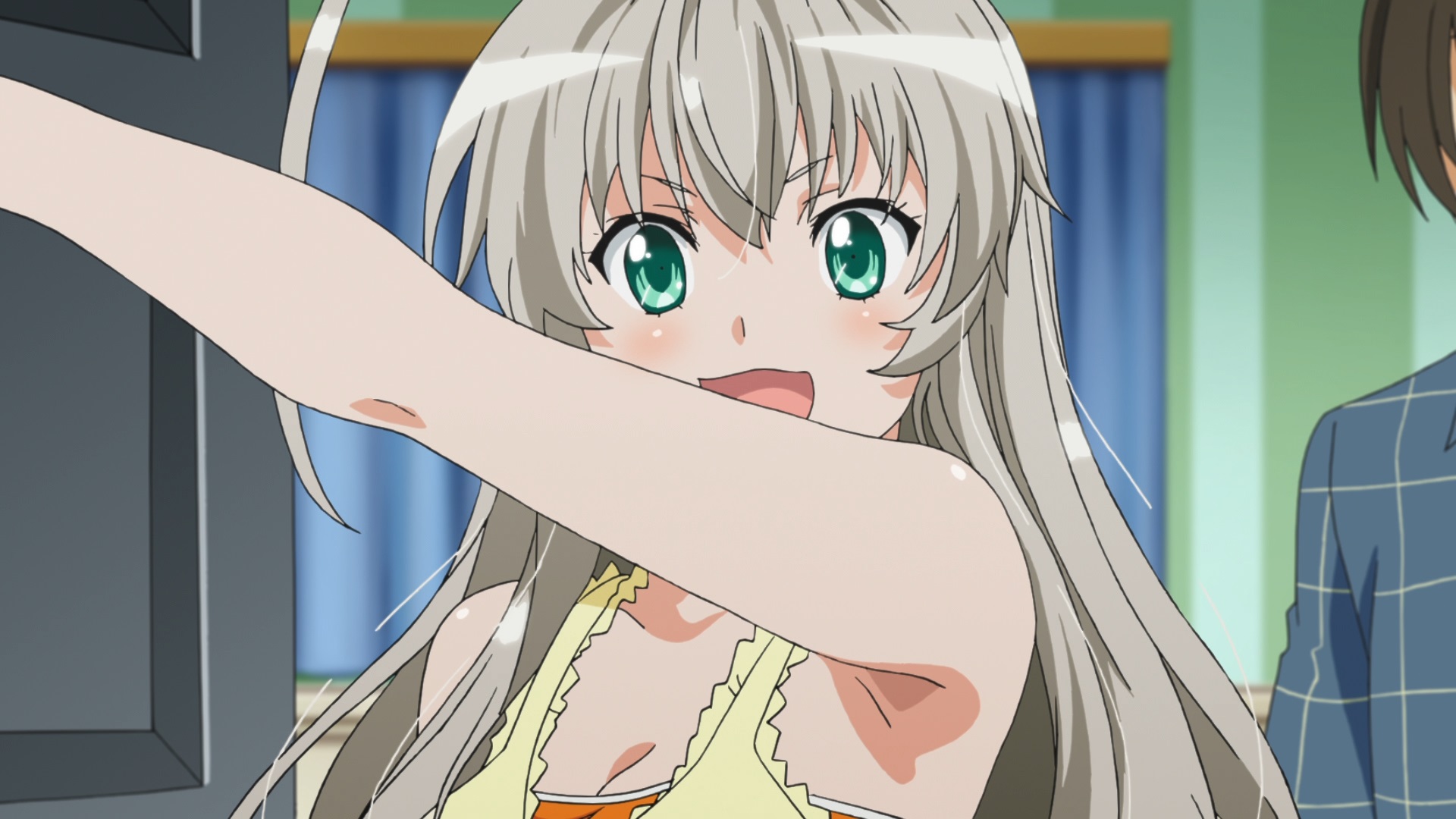

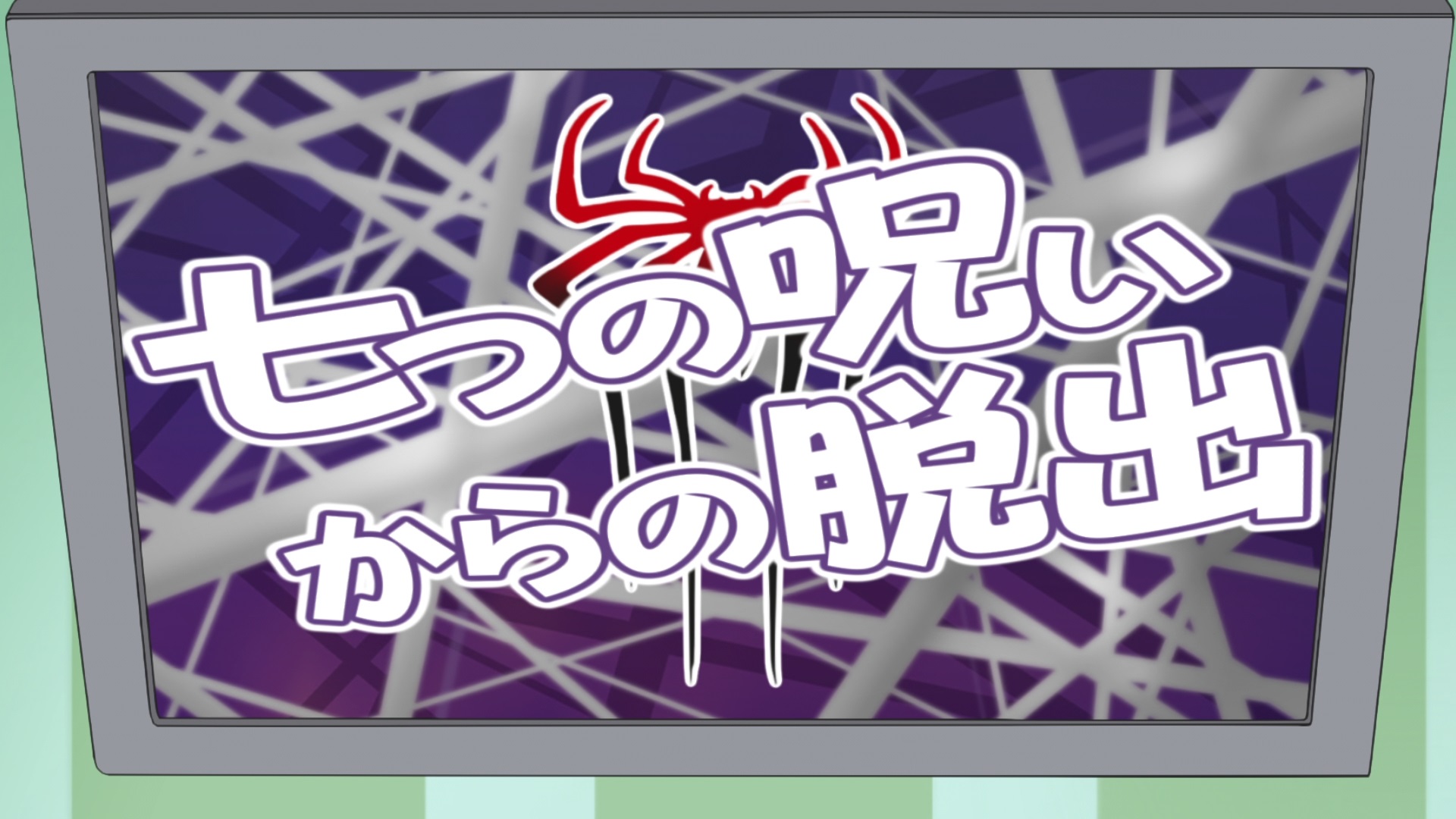
(9:58)
The Japanese text reads "Nanatsu no noroi kara no dasshutsu" (七つの呪いからの脱出), which translates to "Escape From The Seven Geases". This is referencing "The Seven Geases", a short story written by Clark Ashton Smith and first published in 1934. The title of the Japanese translation of this story is "Nanatsu no Noroi" (七つの呪い). In addition, Atlach-Nacha, a spider shaped creature that was created by Clark Ashton Smith, appears in this short story.
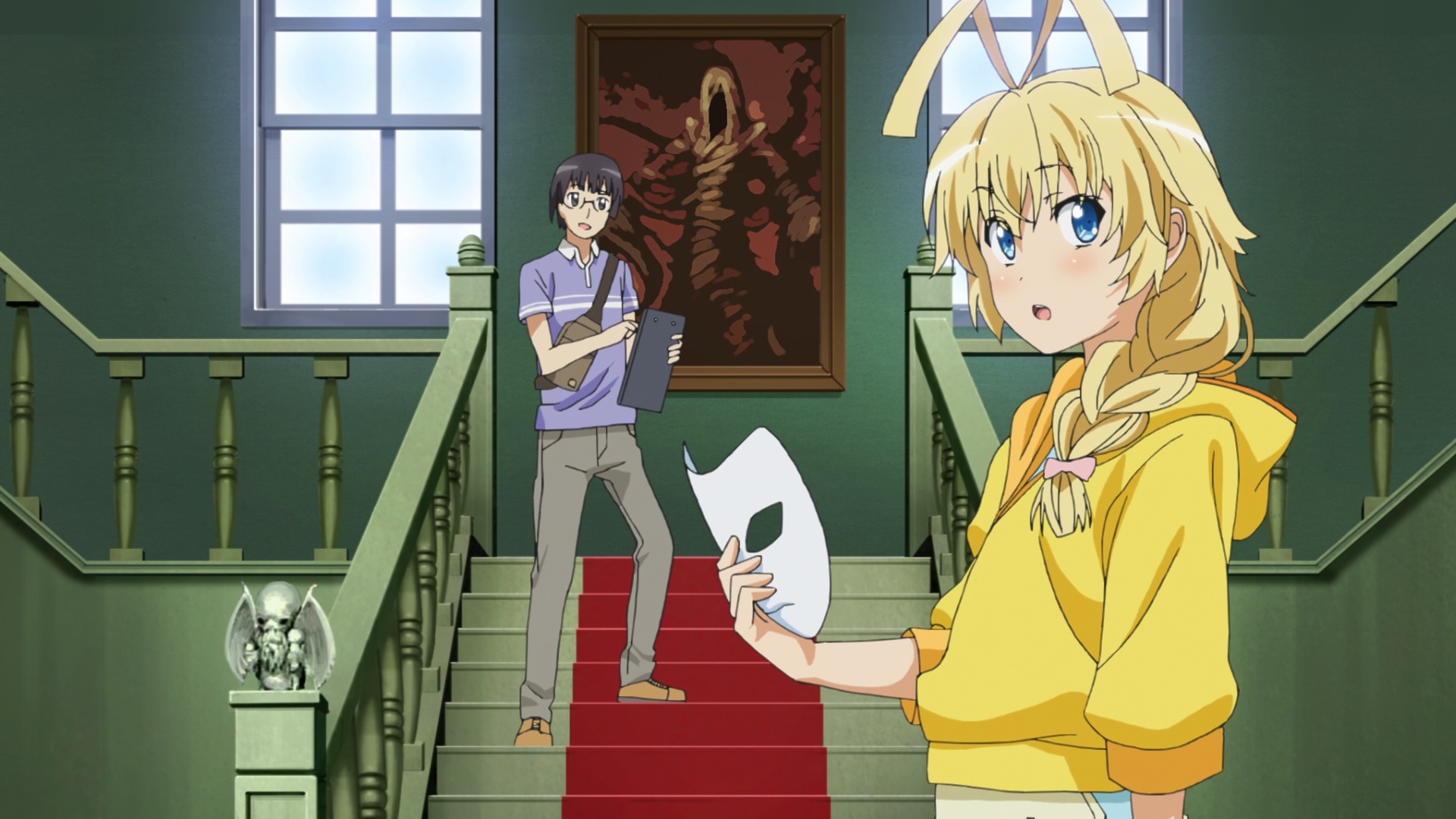
(10:05)
There are three references here:
* Hasta is holding a white mask. This is referencing the King in Yellow, an avatar of Hastur that is described as wearing tattered yellow robes and a white mask.
* There is a painting in the background of what resembles the King in Yellow.
* The ornament at the bottom end of the railing of the staircase is in the shape of Cthulhu, a creature classified as a Great Old One in the Cthulhu Mythos. In "The Call of Cthulhu", a short story written by H. P. Lovecraft and first published in 1928, Cthulhu is described as, "... a monster of vaguely anthropoid outline, but with an octopus-like head whose face was a mass of feelers, a scaly, rubbery-looking body, prodigious claws on hind and fore feet, and long, narrow wings behind.".
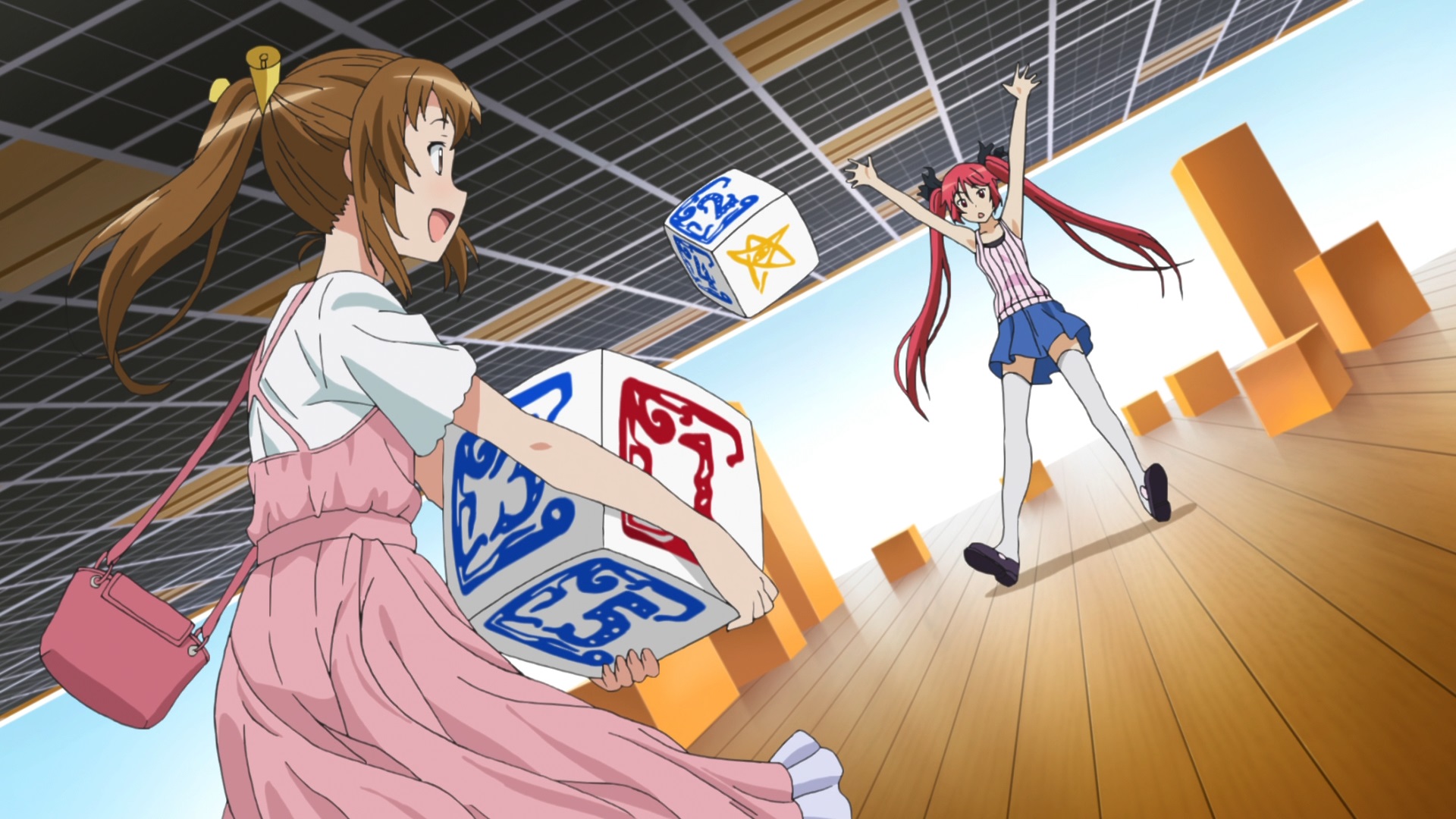
(10:12)
The star shaped symbol that appears on the die that Cthuko is tossing is referencing August Derleth's description the Elder Sign, a symbol that appears in the Cthulhu Mythos. Image from the 5th edition rule book for the "Call of Cthulhu" RPG for reference:

In addition, the die is based on a die from the "Call of Cthulhu" dice set released by Q-Workshop. Image for reference:

Source of image: http://q-workshop.com/p/271/2205/black-green-call-of-cthulhu-dice-set-.html
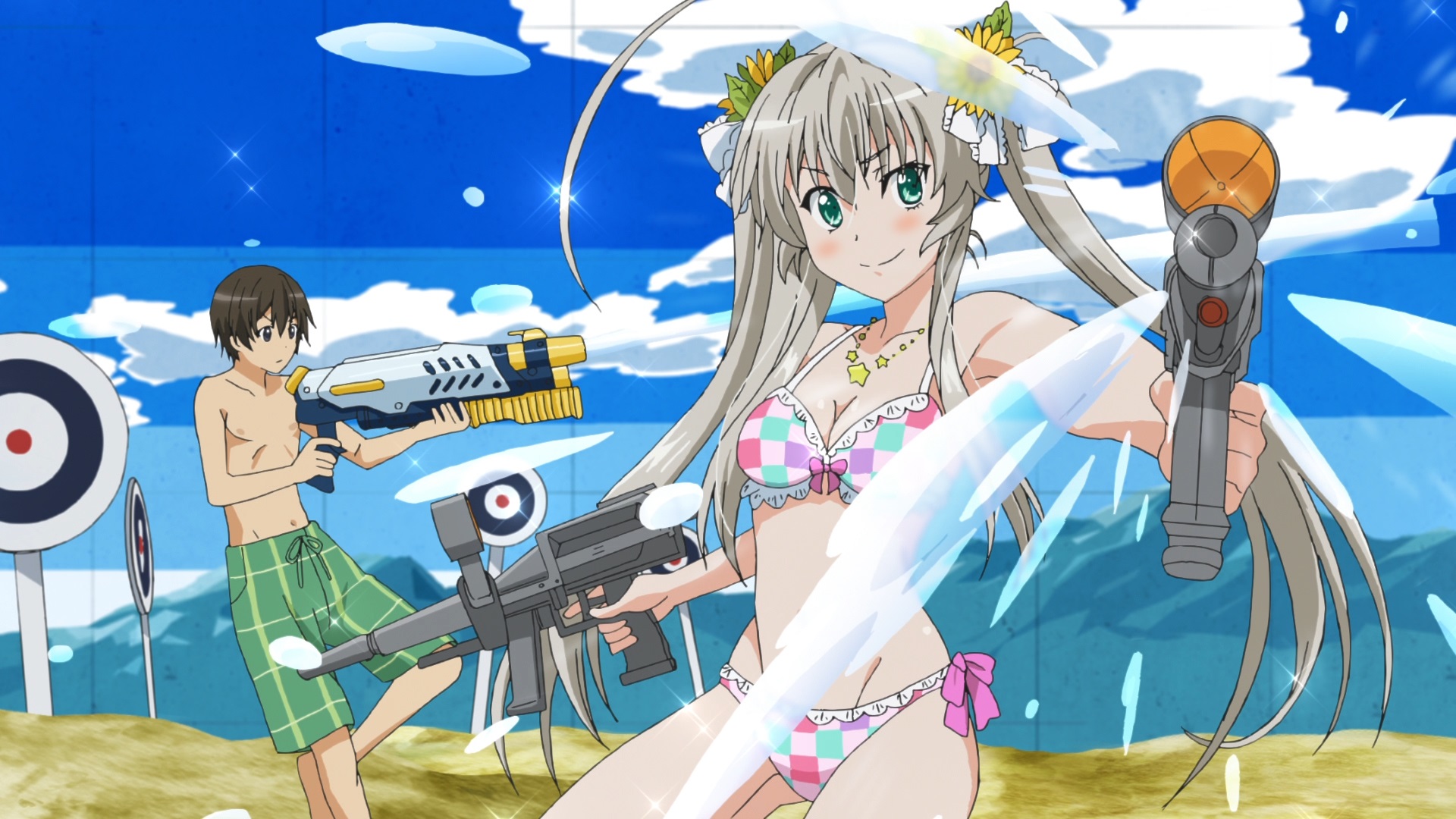
(10:22)
The appearance of the water guns that Nyaruko is holding is based on the beam rifle used by the RX-78-2 Gundam in "Mobile Suit Gundam" (機動戦士ガンダム), an anime series that aired from 1979 to 1980.S2
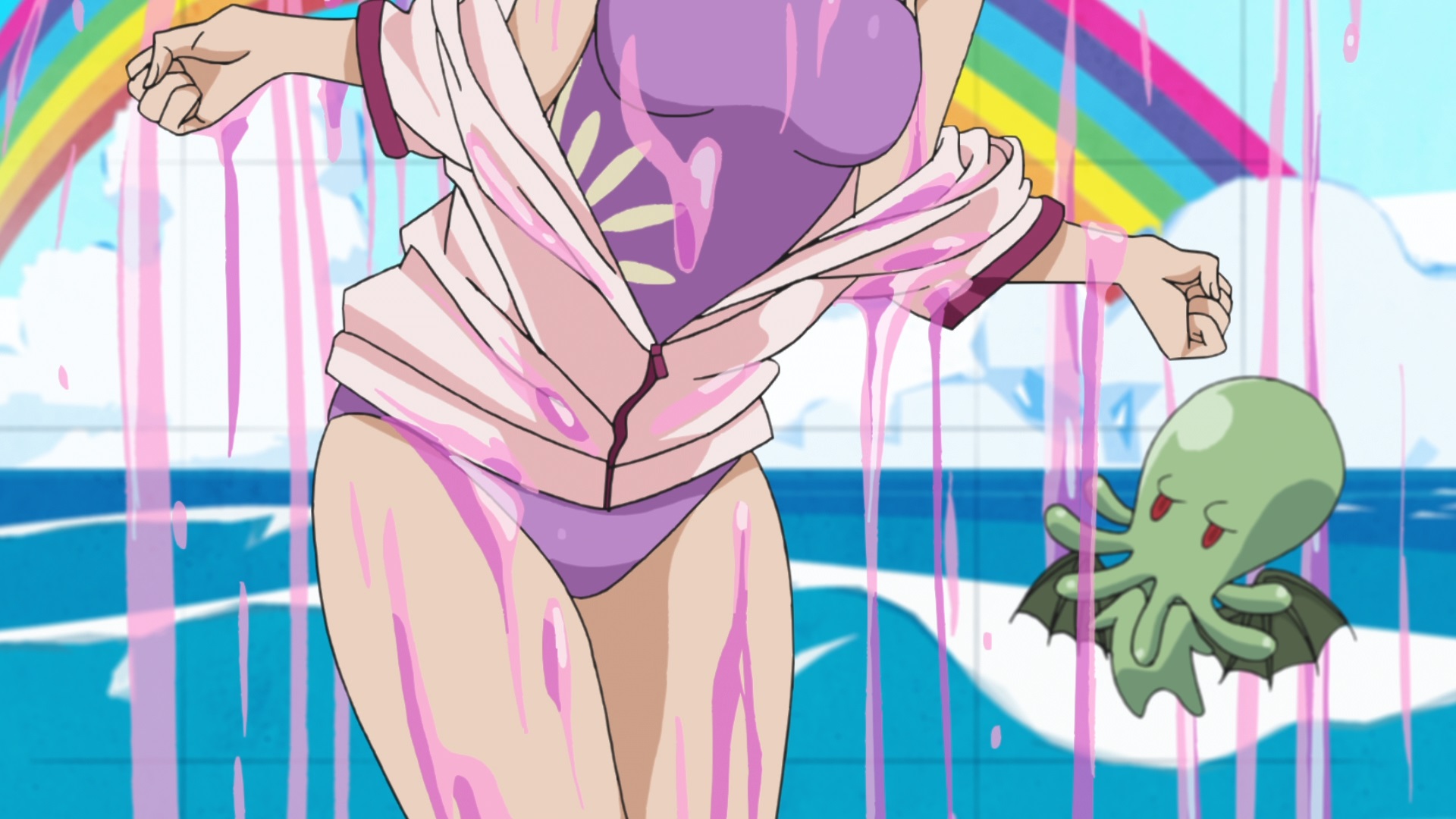
(10:36)
The green creature that appears here is referencing Puti Kuti (プティ・クティ) from "Moe Moe Kutouruu Shinwa Jiten" (萌え萌えクトゥルー神話事典), "Moe Moe Cthulhu Mythos Encyclopedia", a book published in 2009. Image for reference:
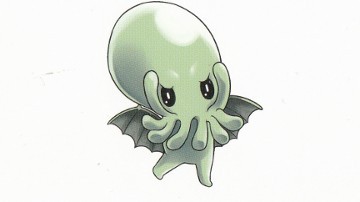
Source of image: http://f.hatena.ne.jp/servitors/20120524190732
(10:49)
The line at this time goes as follows:
「花びらが流した愛がニャル子に届いている?濡れたままでイっちゃって!」This appears to be referencing lines in the lyrics to "Suirenka" (睡蓮花), a song sung by Shounan no Kaze (湘南乃風) and released in 2007.S1 The original lines go as follows:
"Hanabira ga nagashita ai ga Nyaruko ni todoiteru? Nureta mama de icchatte!"
"Is the love shed by the flower pedals reaching Nyaruko? While soaked go all out!"
「花びらが流した愛が 貴方に届いていますか?」
「濡れたまんまでイッちゃって!」
"Hanabira ga nagashita ai ga anata ni todoiteimasu ka?"
"Nureta manma de icchatte!"
"Is the love shed by the flower pedals reaching you?"
"While soaked go all out!"
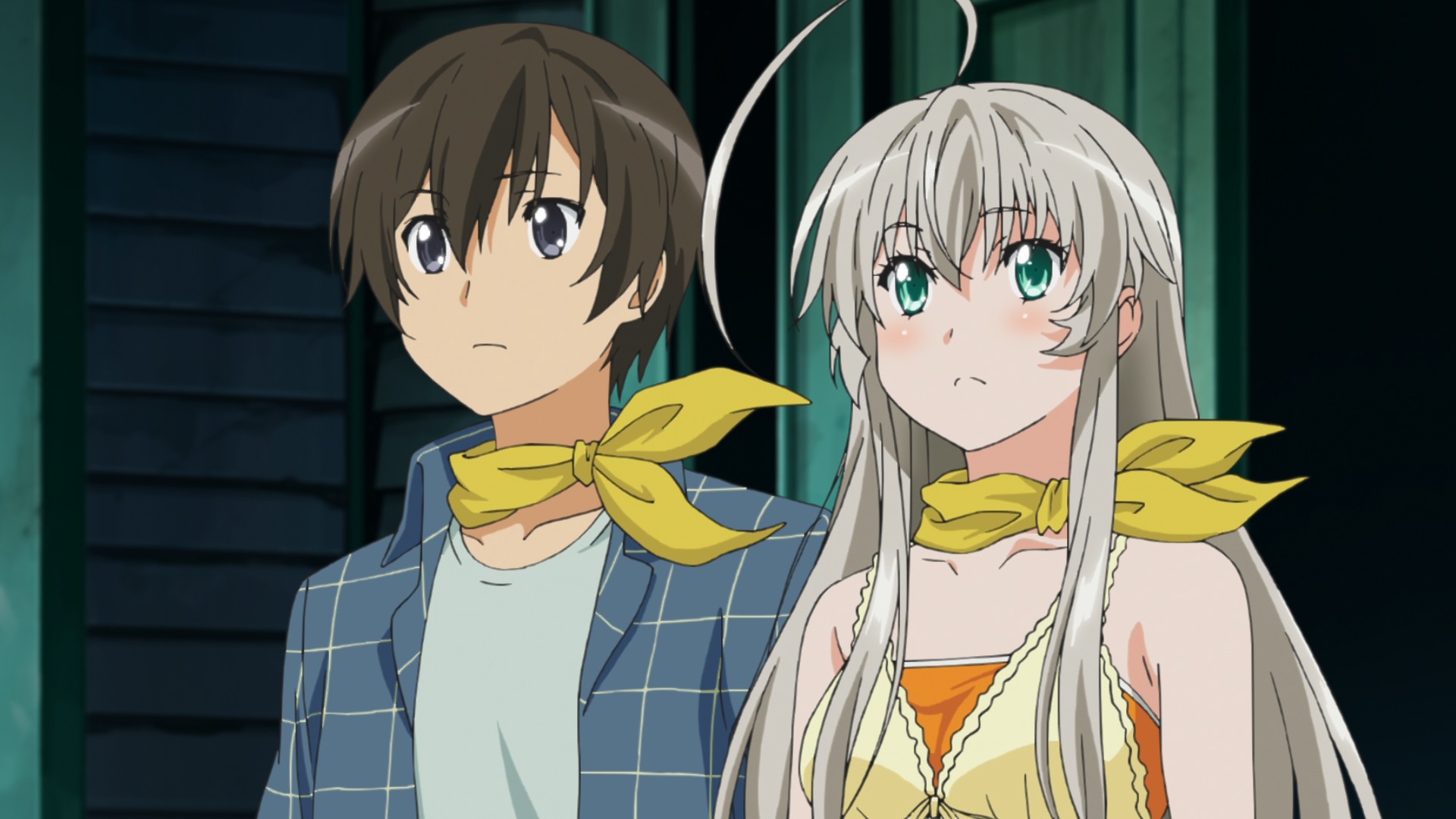
(11:18)
The yellow scarves worn by fake Nyaruko and fake Mahiro appear to be referencing the yellow scarves worn by the Shocker Riders (ショッカーライダー) in "Kamen Rider THE NEXT" (仮面ライダー THE NEXT), a movie released in 2007.S2 Image for reference:
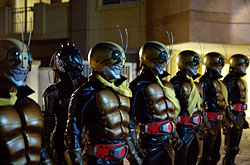
Source of image: http://www.toei-video.co.jp/archive/ridernext/story.html
"Kill evil immediately." (12:05)
The Japanese line is "Aku Soku Zan" (悪即斬), which more literally translates to "Evil Immediately Kill". This is referencing Saitou Hajime (斎藤一) from "Rurouni Kenshin" (るろうに剣心), a manga series written by Watsuki Nobuhiro (和月伸宏) and published from 1994 to 1999. In the series, Saitou lives by a single principle that he believes to be true justice. He calls it "Aku Soku Zan" (悪即斬), "Kill evil immediately". Image for reference:
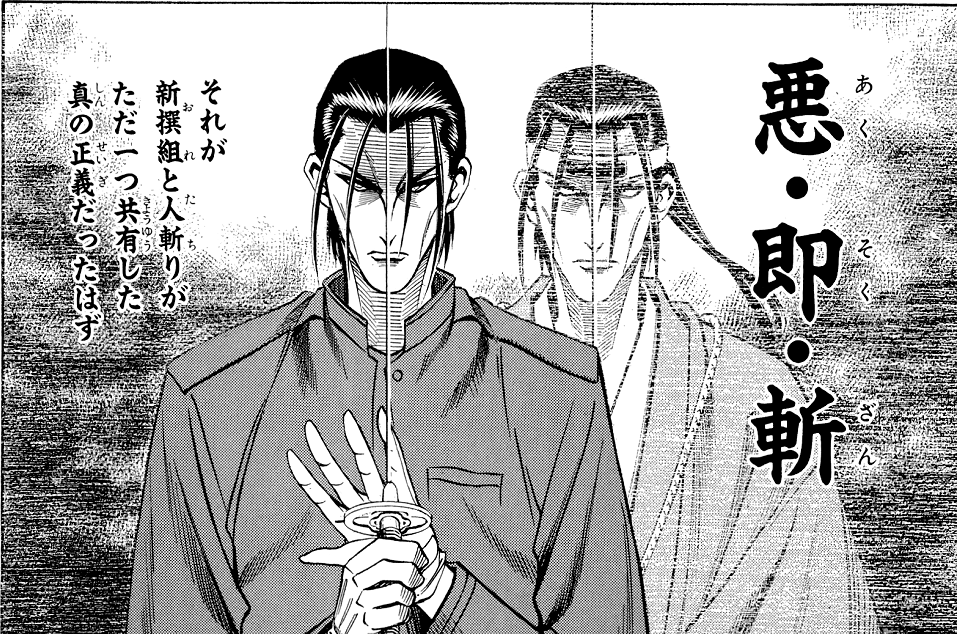
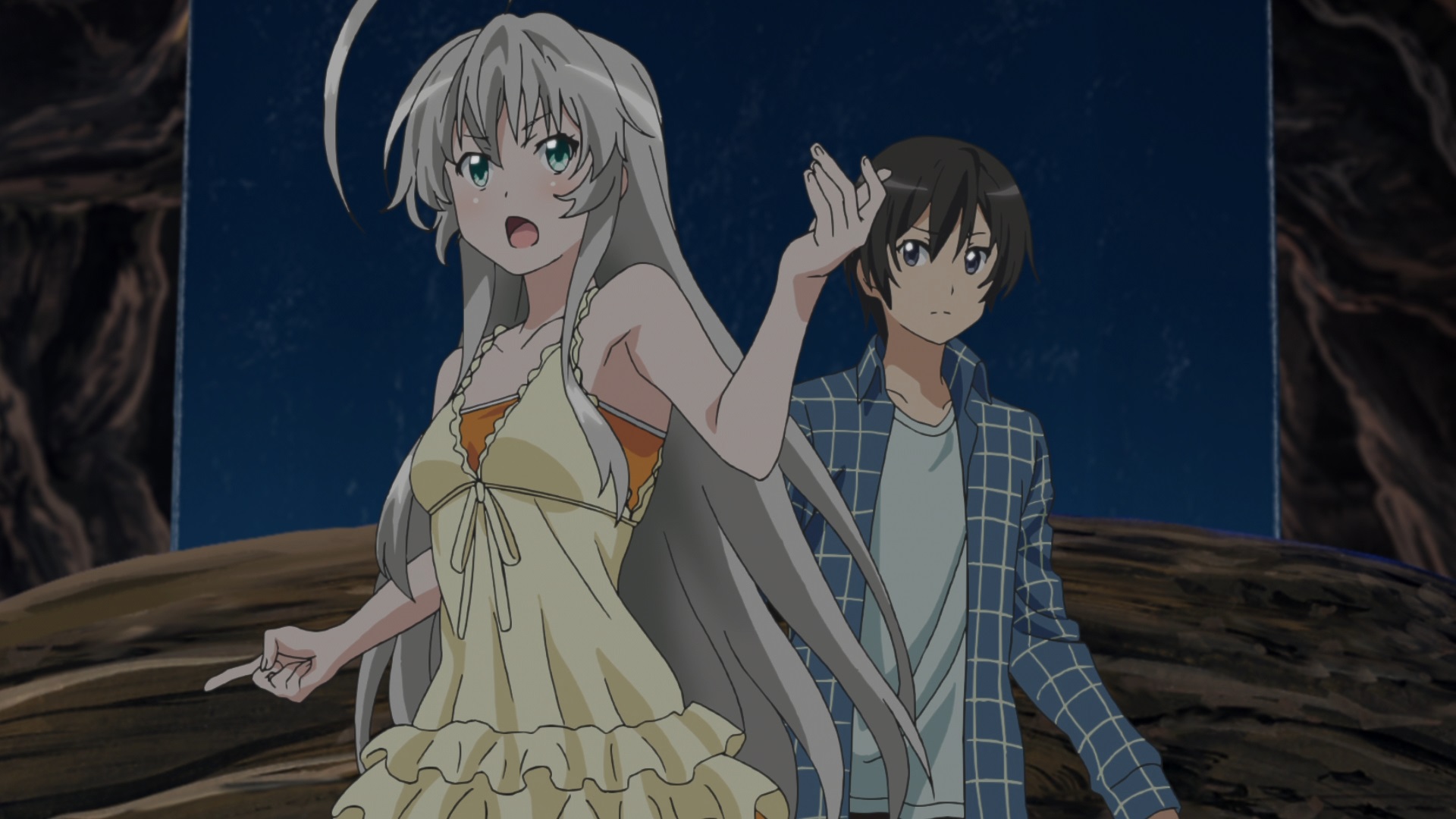
"I'll destroy everything and connect everything!" (12:07)
There are two references here:
* The Japanese line is "Subete wo hakaishi, subete wo tsunagi yarimasu yo!" (全てを破壊し、全てをつなぎやりますよ!). This is referencing the official catch phrase for "Kamen Rider Decade" (仮面ライダーディケイド), a Japanese TV show about a masked super hero that aired in 2009. The original catch phrase is "Subete wo hakaishi, subete wo tsunage!" (全てを破壊し、全てを繋げ!), which translates to "Destroy everything, connect everything!".
* Nyaruko's pose at this time is referencing a pose done by Kamen Rider Decade from "Kamen Rider Decade" (仮面ライダーディケイド). Image for reference:
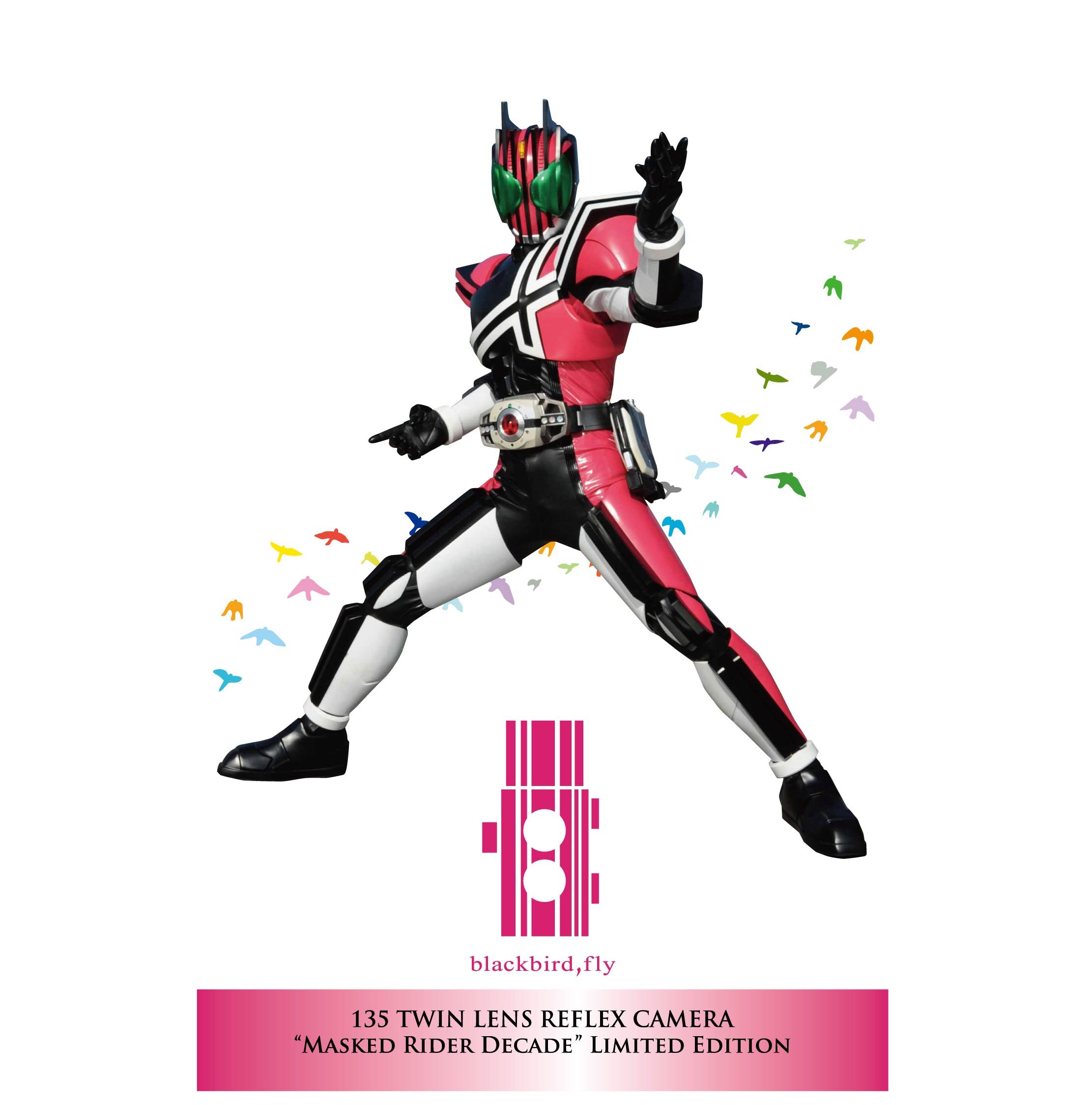
Source of image: http://www.amazon.co.jp/dp/B002831JUW
"It's not time to panic yet!" (12:34)
The Japanese line is "Mada awateru you na jikan ja arimasen!" (まだ慌てるような時間じゃありません!). This is referencing a line said by Sendou Akira (仙道彰) in chapter 169 in volume 19 of "Slam Dunk" (スラムダンク), a manga series written by Inoue Takehiko (井上雄彦) and published from 1990 to 1996.S1 The original line goes "Mada awateru you na jikan ja nai" (まだあわてるような時間じゃない), which has the same meaning as above. Image for reference:
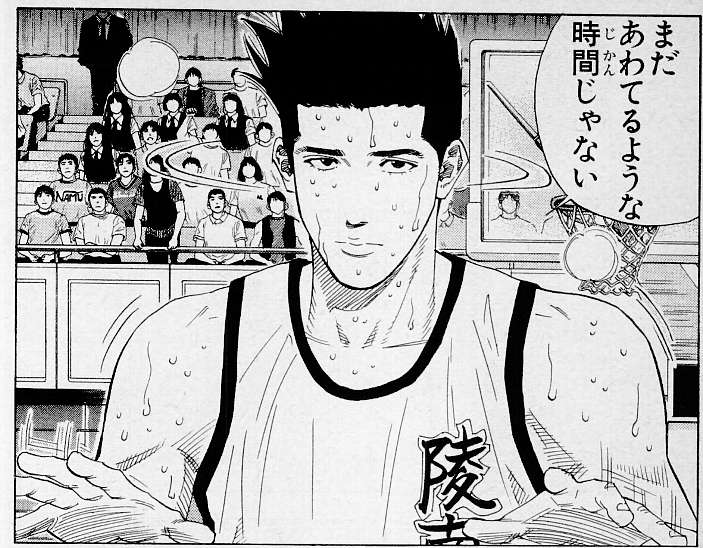
"Youthful lariat!" (12:38)
The Japanese line is "Seishun Rariatto!" (青春ラリアット). This appears to be referencing "Seishun Rariatto!!" (青春ラリアット!!), "the youthful lariat", a light novel series written by Semikawa Takamaru (蝉川タカマル) and published from 2011 to 2013.
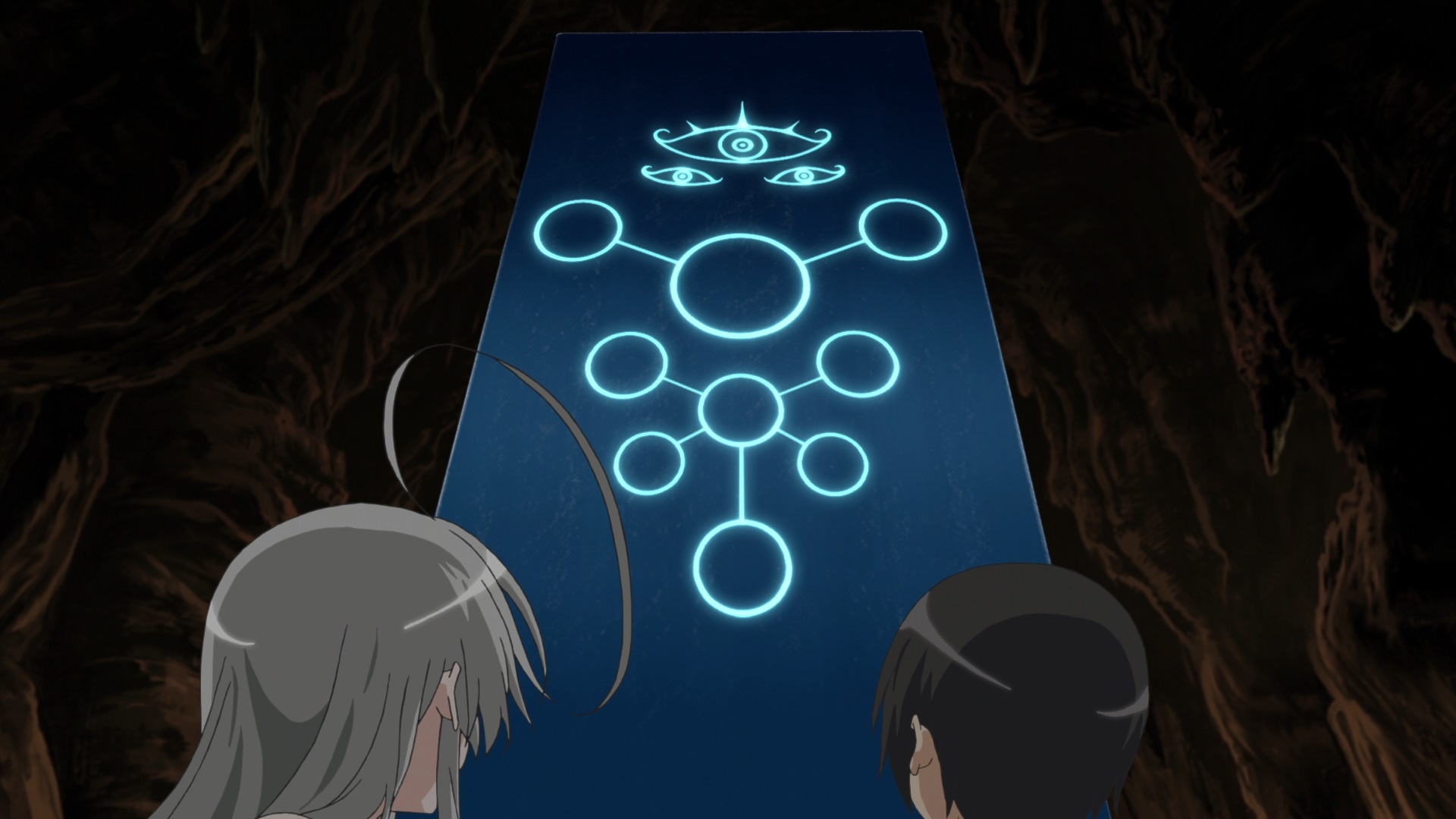
(13:03)
The monolith that appears here resembles the monoliths that represent Seele in "Shinseiki Evangerion" (新世紀エヴァンゲリオン), "Neon Genesis Evangelion", an anime series that aired from 1995 to 1996. Image for reference:
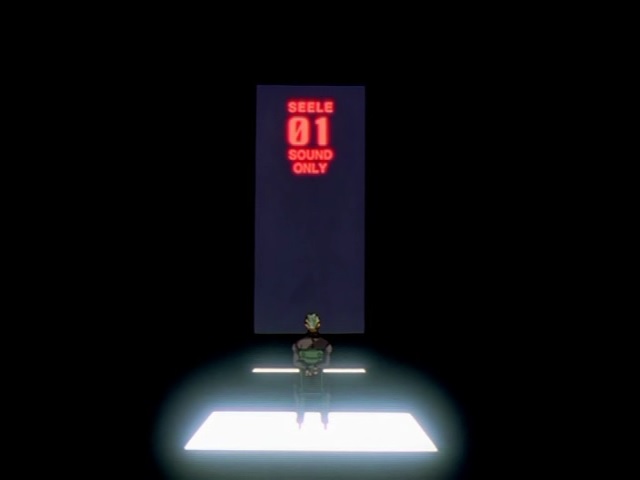
"Before my physical strength and memories are lost, give me a Love Hymn, a Love Storm, a Love Exposure!" (14:13)
There are two references here:
* "Ai no Sanka" (愛の讃歌), "Love Hymn", is the title of a song sung by Koshiji Fubuki (越路吹雪) and released in 1952.S1
* "Ai no Arashi" (愛の嵐), "Love Storm", is the title of a song sung by Yamaguchi Momoe (山口百恵) and released in 1979.
* "Ai no Mukidashi" (愛のむきだし), "Love Exposure", is the title of a movie released in 2008.S1
"Gyafun!" (14:20)
This is a repeat of a reference in episode 5 of season 1 at 8:49. The Japanese line is "Gyafun!" (ぎゃふん!). This is a line often said by Harune Aira (春音あいら) in "Pretty Rhythm: Aurora Dream" (プリティーリズム・オーロラドリーム), an anime series that aired from 2011 to 2012. On a related note, Nyaruko's voice actor, Asumi Kana (阿澄佳奈), also voices Aira. Video for reference: https://www.nicovideo.jp/watch/sm17747657
"'S' is for the 'S' in 'space is dangerous'." (14:30)
The Japanese line is "U ha uchuu yabai no U desu kara ne" (ウは宇宙ヤバイのウですからね). This appears to be referencing "U ha Uchuu Yabai no U! ~Sekai ga Horobu Go Byou Mae~" (ウは宇宙ヤバイのウ! ~セカイが滅ぶ5秒前~), "'S' is for the 'S' in 'space is dangerous'! ~5 Seconds Before the World is Destroyed~", a light novel written by Miyazawa Iori (宮澤伊織) and published in 2013.
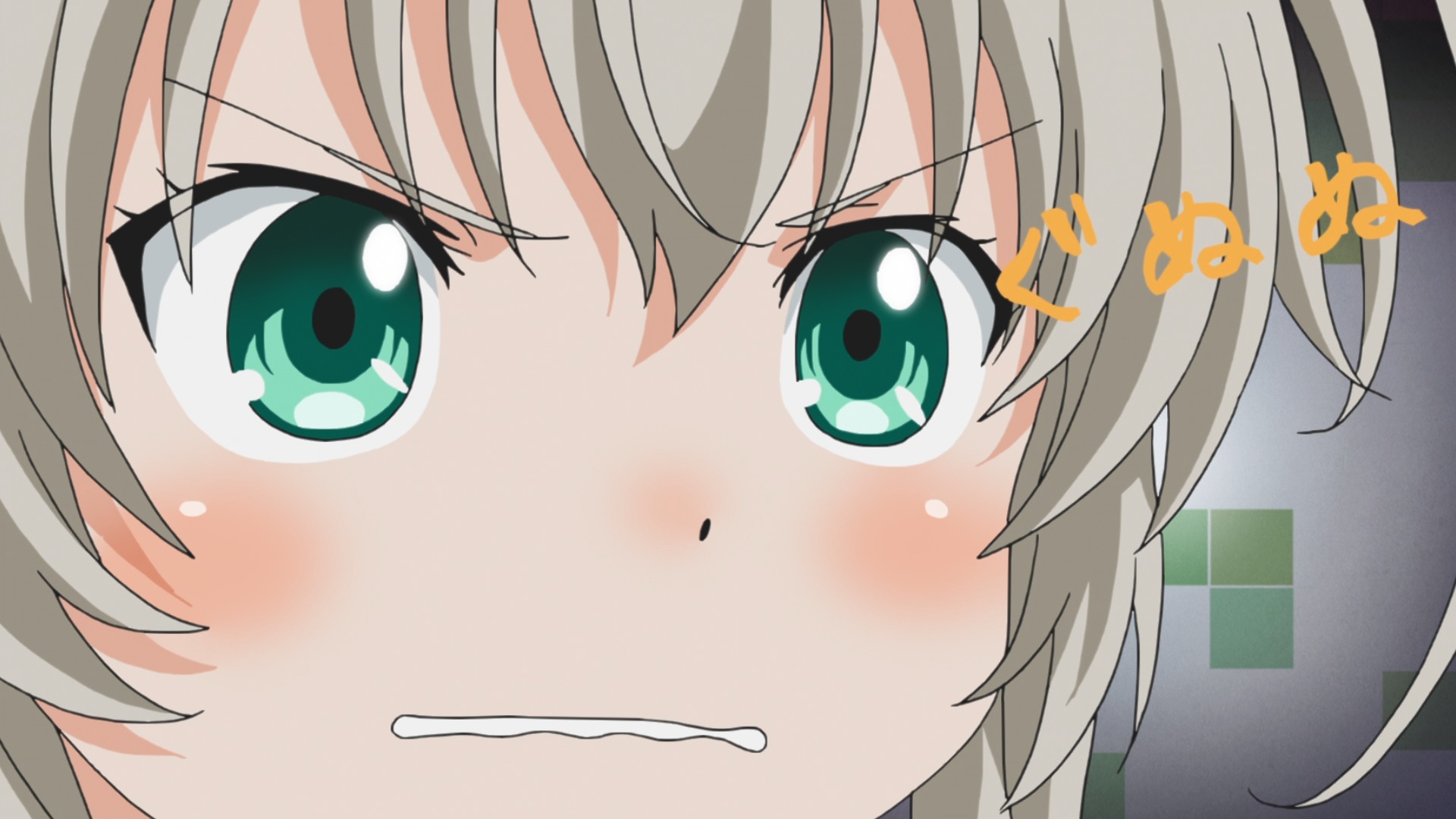
(15:02)
The Japanese text that appears at this time is "Gununu" (ぐぬぬ). This text and Nyaruko's facial expression are referencing Ana Coppola (アナ・コッポラ) from "Ichigo Mashimaro" (苺ましまろ), "Strawberry Marshmallow", a manga series written by Barasui (ばらスィー) and published from 2002 and is currently ongoing. An anime adaptation of the series aired in 2005. In episode 2 of this anime series, Ana says the same phrase and makes the same facial expression. Image for reference:

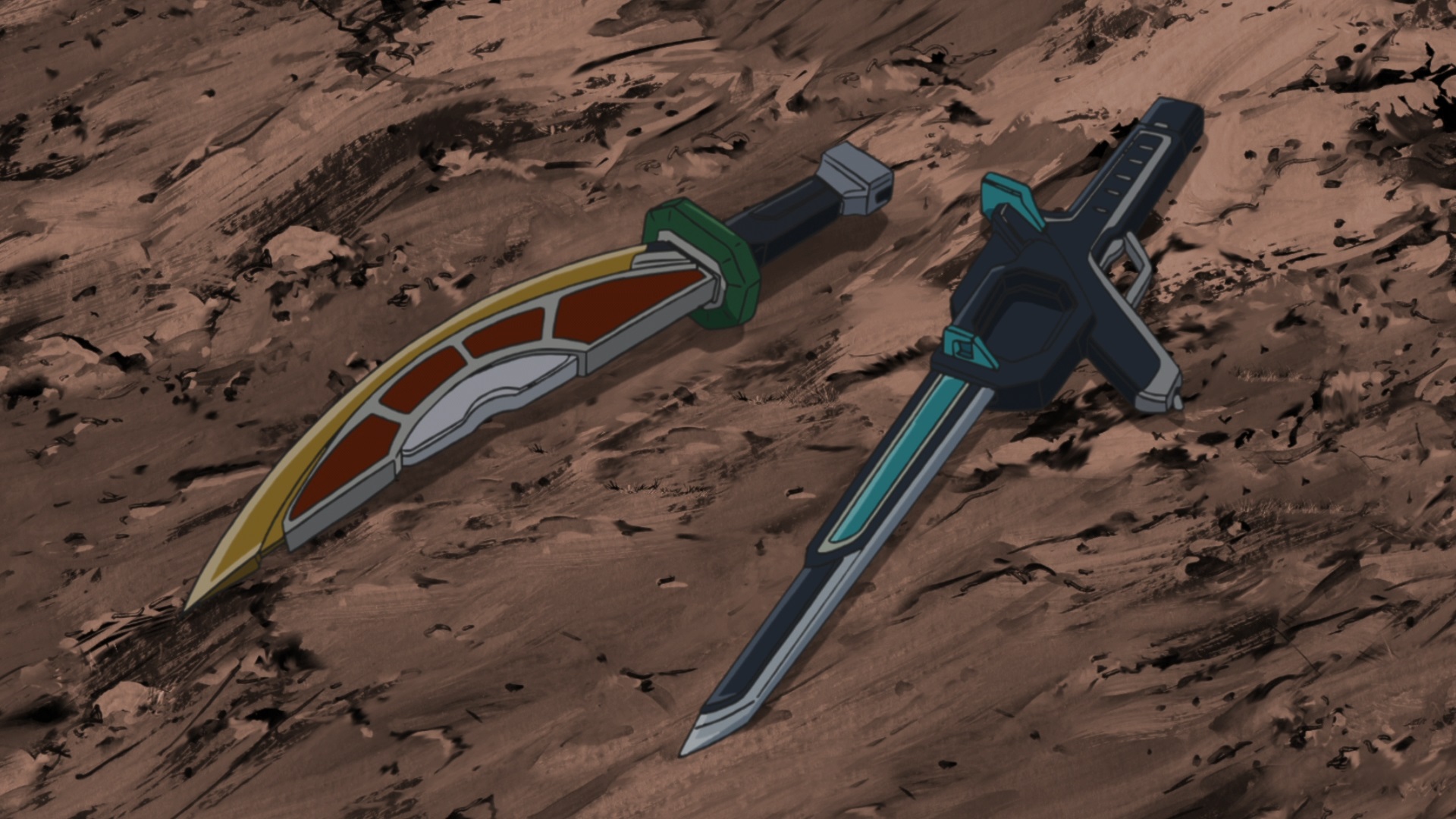
(15:29)
The appearances of the two swords here are based on two swords that appear in "Kamen Rider Gaim" (仮面ライダー鎧武), a Japanese TV show about a masked super hero that aired from 2013 to 2014. The two swords are the Daidaimaru (大橙丸) and the Musou Saber (無双セイバー). Images for reference:
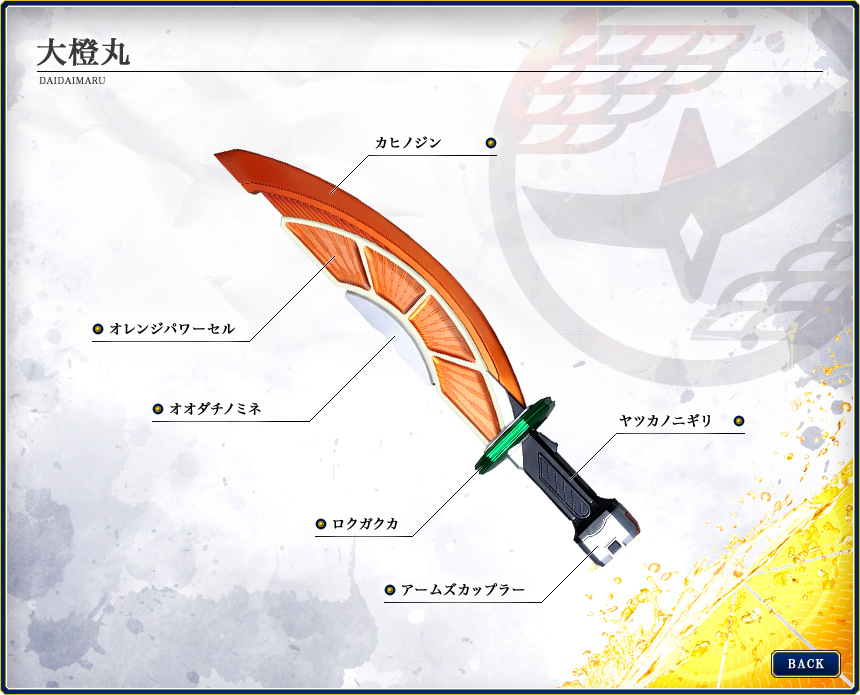
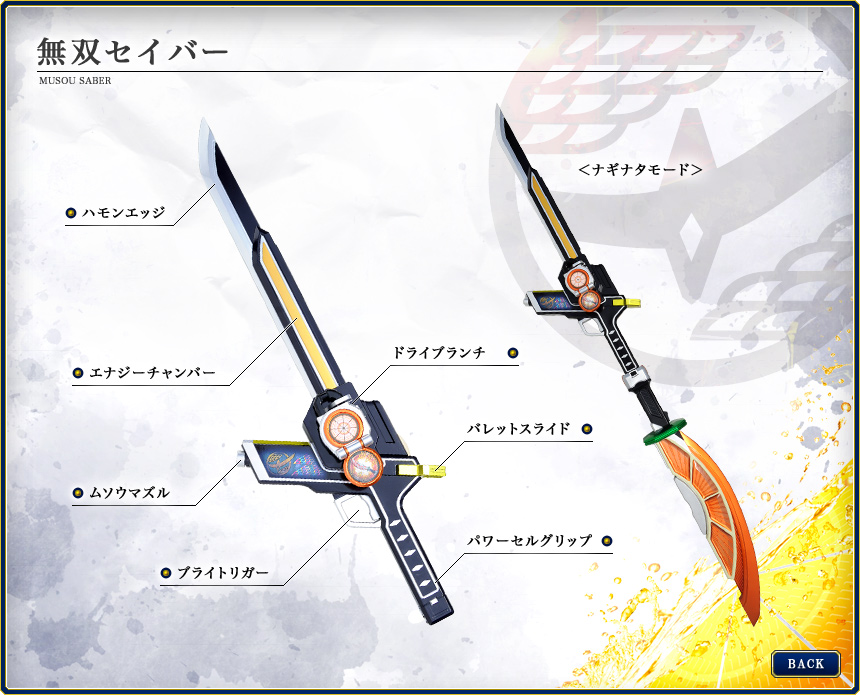
Image sources:
http://www.tv-asahi.co.jp/gaimu/rider/daidaimaru.html
http://www.tv-asahi.co.jp/gaimu/rider/musousaber.html
"This is not that kind of game!" (15:34)
The Japanese line is "Sou iu geemu ja nee desu kara kore!" (そういうゲームじゃねぇですからこれ!). This is referencing an exclamation said by Kokujin (こくじん), a Japanese fighting game player, after he won against Umehara Daigo (梅原大吾) in a match in "Street Fighter III: 3rd Strike" (ストリートファイターIII 3rd STRIKE), a video game released by Capcom (カプコン) in 1999.S3 Commenting on Umehara's play style during the match, Kokujin jokingly exclaimed the following:
「逃げてるだけじゃねえか!そういうゲームじゃねえからこれ!」Video for reference: https://www.nicovideo.jp/watch/sm80127
"Nigeteru dake ja nee ka! Sou iu geemu ja nee kara kore!"
"All this guy does is run away! This is not that kind of game!"
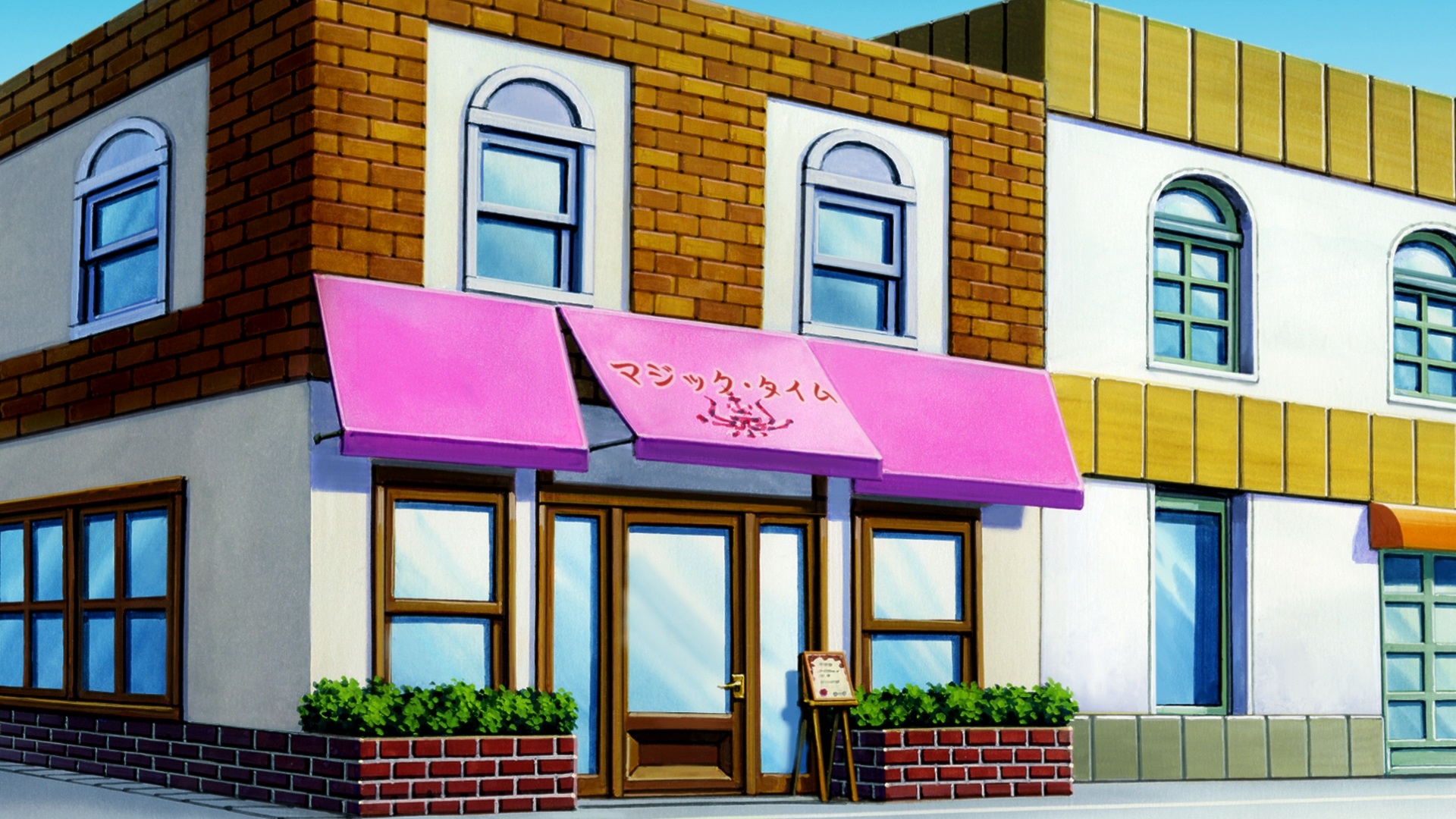
(15:54)
The name of the restaurant is "Majikku Taimu" (マジック・タイム), "Magic Time". This is possibly referencing a line in the lyrics to "Life is SHOW TIME". "Life is SHOW TIME" is the opening theme song to "Kamen Rider Wizard" (仮面ライダーウィザード), a Japanese TV show about a masked super hero that aired from 2012 to 2013. The original line goes, "Majikku taimu!" (マジックタイム), which translates to "Magic time!".
"It's called 'Flower Snow'. In Japanese it would be 'Hanayuki'." (16:08)
"Hanayuki" (花雪) is the name of a song sung by Tamao's voice actor, Ootsubo Yuka (大坪由佳), and released in 2014.
"White Sincerely." (16:16)
The Japanese line is "Howaito shinshiarii" (ホワイトシンシアリー). "White Sincerely" is the name of an album released by Cthuko's voice actor, Matsuki Miyu (松来未祐), in 2013. In addition, the first song on this album is called "White Sincerely".
(20:52)
The line at this time goes as follows:
「24次元の単位球の周りに単位球を重ならず触れ合うよう並べることのできる最大数はいくつ?」This is referencing a problem in geometry that is known as the "kissing number problem". In Japanese this problem is known as "seppun suu mondai" (接吻数問題). In geometry, the kissing number is defined as the number of non-overlapping unit spheres that can be arranged such that each unit sphere touches another unit sphere. In general, the kissing number problem asks for the greatest possible kissing number for unit spheres in n-dimensional space. The answer to this specific problem in 24-dimensional space is 196,560. The reason why this problem is asked is possibly because the problem is known as the kissing number problem, and Nyaruko and Mahiro escape their situation by kissing.
"In 24-dimensional space, what is the greatest number of non-overlapping unit spheres that can be arranged such that each unit sphere touches another unit sphere?"
"If it's not exposed, it's not a crime." (22:39)
This is a line said by Nyaruko in episode 1 of season 1 at 9:10. The Japanese line is "Barenakya hanzai ja nai n desu yo" (バレなきゃ犯罪じゃないんですよ). This is referencing a line said by Kuujou Joutarou (空条承太郎) in chapter 236 in volume 25 of "Jojo no Kimyou na Bouken" (ジョジョの奇妙な冒険), "Jojo's Bizarre Adventure", a manga series written by Araki Hirohiko (荒木飛呂彦) and published starting from 1987. The original line goes, "Barenakyaa ikasama jaa nee n da ze" (バレなきゃあイカサマじゃあねえんだぜ), which translates to "If it's not exposed, it's not cheating". Image for reference:
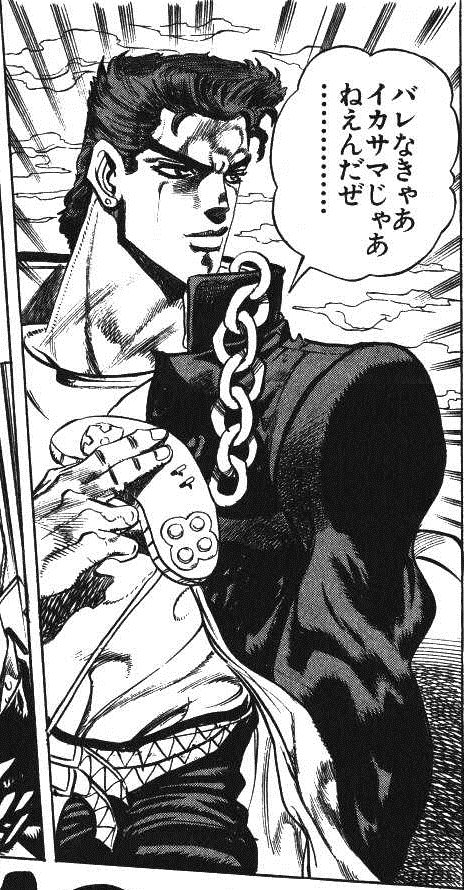
On a related note, this line itself is referencing a line said by Daniel J. D'Arby (ダニエル・J・ダービー) in chapter 213 in volume 23 of the series. The original line goes, "Barenakereba ikasama to ha iwanai no da yo" (バレなければイカサマとはいわないのだよ), which translates to "If it's not exposed, it's not called cheating". Image for reference:

"That is definitely absolutely true." (23:26)
This is a repeat of a reference in episode 1 of season 1 at 13:31. The Japanese line is "Sore ha zettai ni zettai desu" (それは絶対に絶対です). This is referencing a line often said, with some variations, by Cecilia Raynne Adlehyde (セシリア・レイン・アーデルハイド) in "WILD ARMS" (ワイルドアームズ), a game released by Media.Vision (メディア・ビジョン) in 1996. Her line is, "Sore ha, zettai ni zettai desu!" (それは、ぜったいにぜったいですッ!), which translates to "That is definitely absolutely true!". Image for reference:
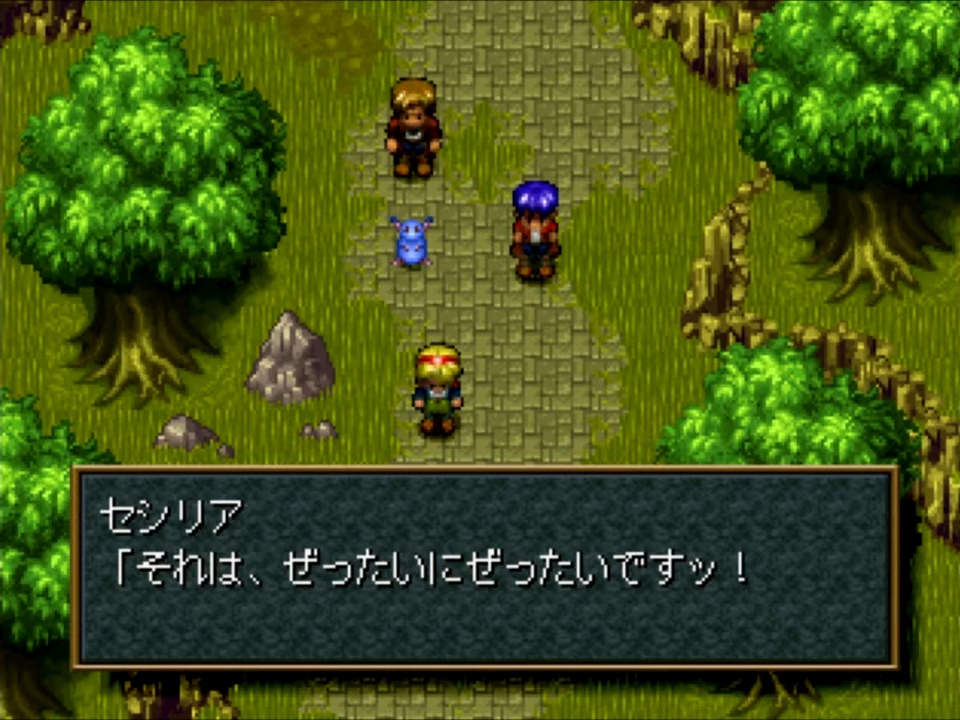
Source of image: https://www.youtube.com/watch?v=rXm7G5OymKA
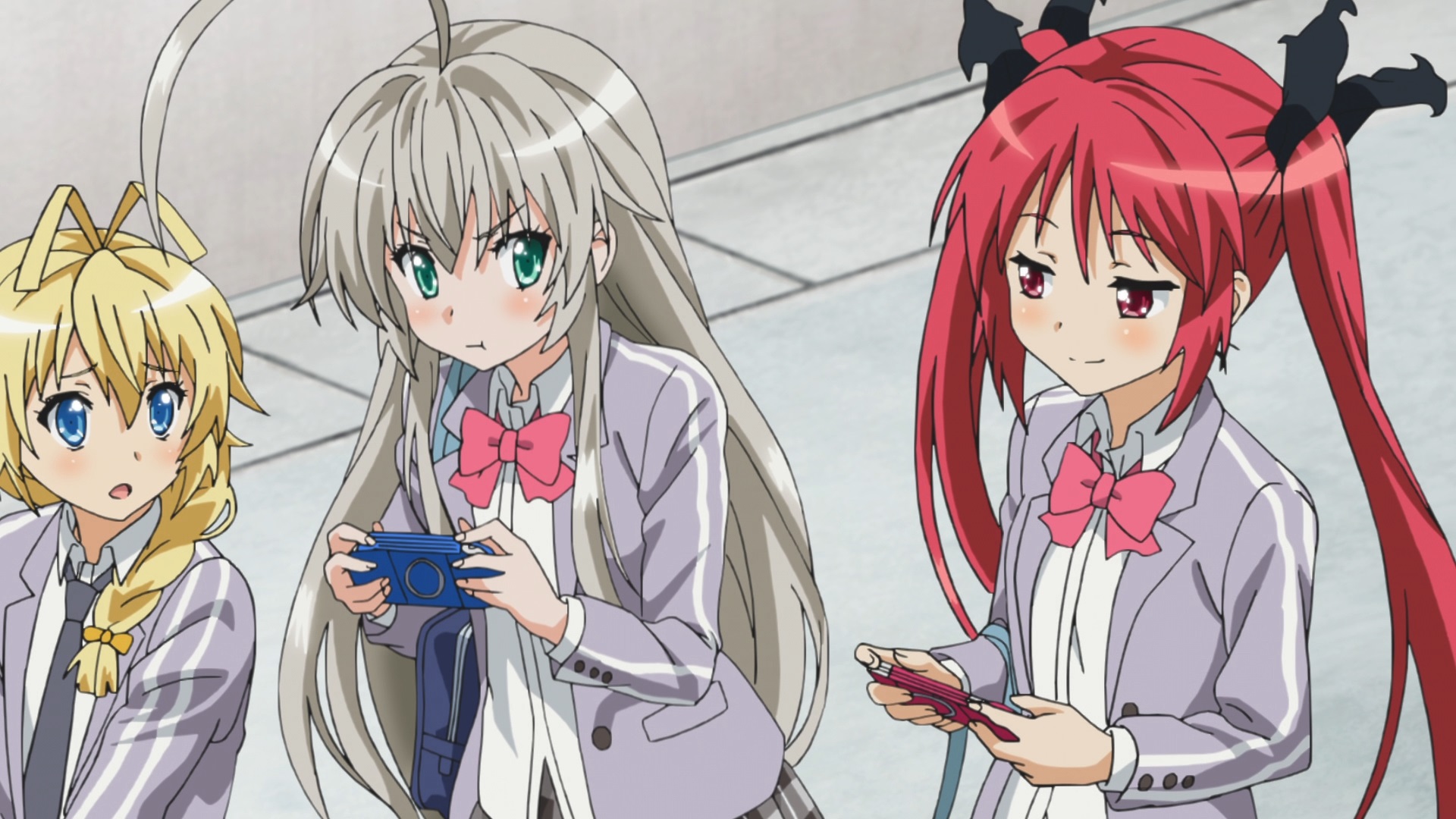
(24:20)
The game devices Nyaruko and Cthuko are playing with are based on the PlayStation Portable (プレイステーション・ポータブル), a handheld video game console released by Sony (ソニー) in 2004. Image for reference:

Source of image: https://en.wikipedia.org/wiki/File:Sony-PSP-1000-Body.png
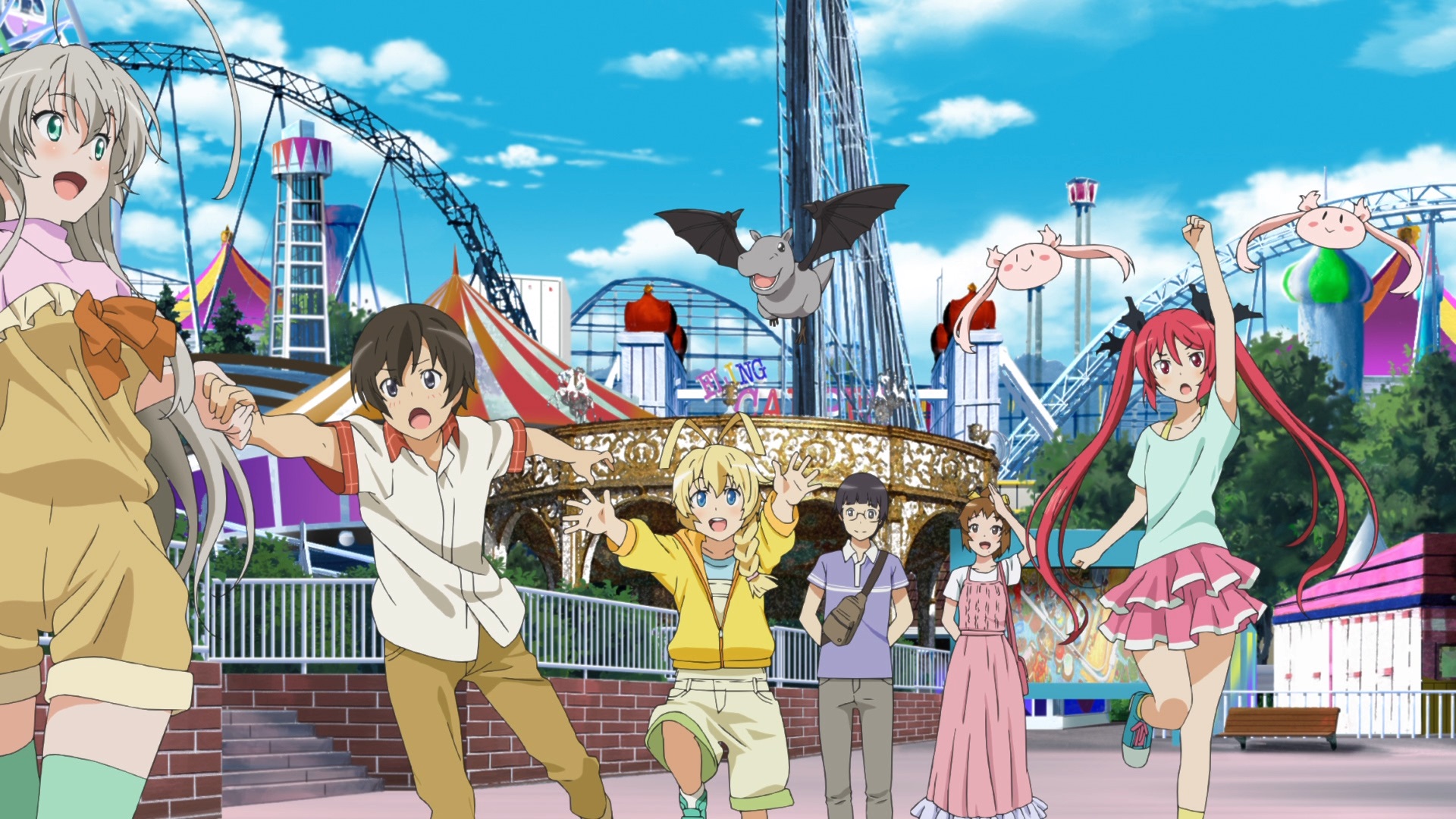
(26:57)
The pink creatures that appear around Cthuko are Fire Vampires, a species of creature in the Cthulhu Mythos. They have been stated to be the minions of Cthugha in the "Call of Cthulhu" RPG rulebook, first published in 1981. They first appeared in "The Dweller in Darkness", a short story written by August Derleth and first published in 1944. When the protagonists of the story successfully summon Cthugha, the Fire Vampires accompany Cthugha, and one of the protagonists narrates, "Then, instantaneously, there appeared thousands of tiny points of light ... the myriad points of light were living entities of flame! For wherever they touched, fire sprang up ...".
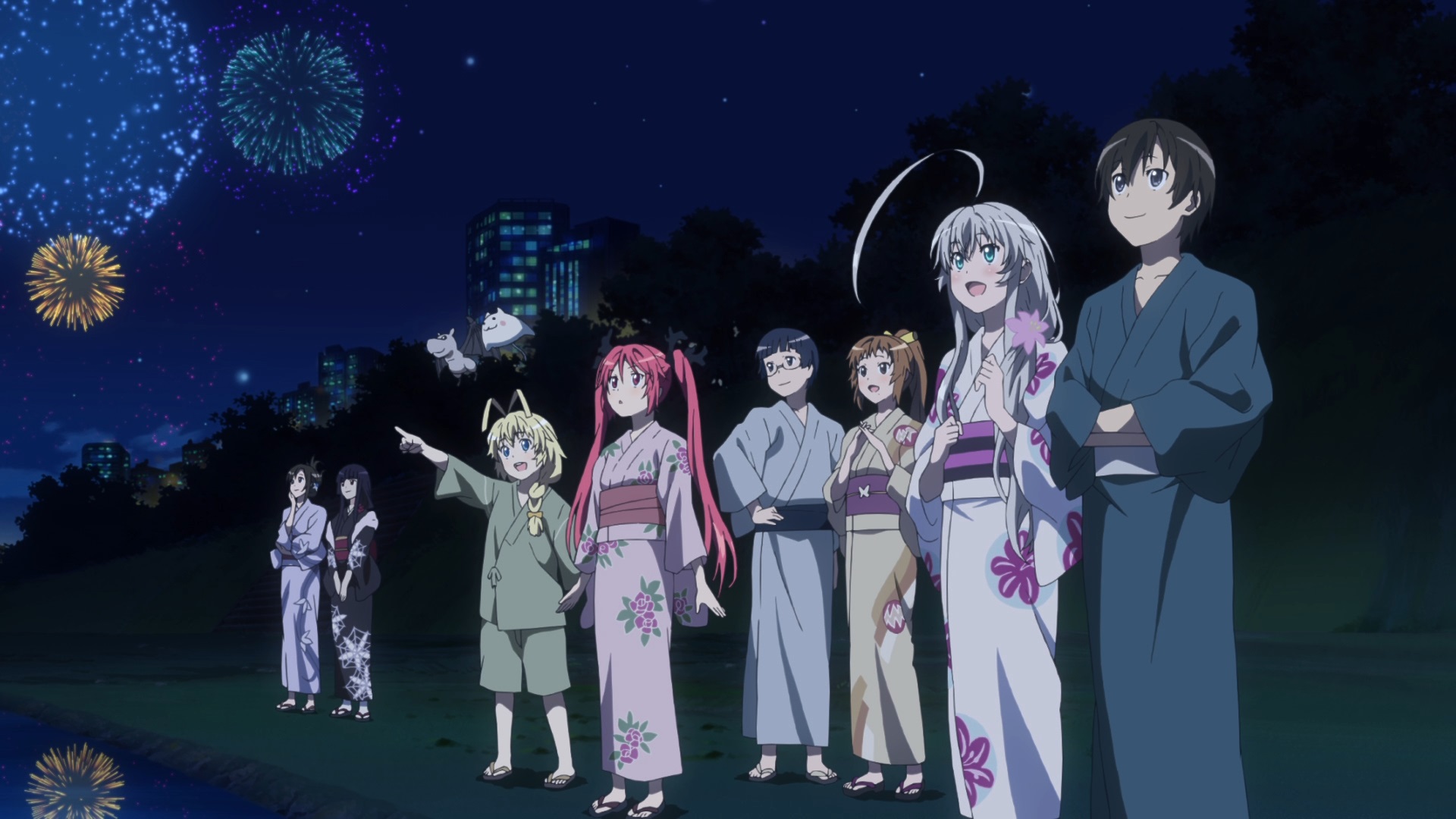
(27:04)
The white creature that appears here is referencing the Twitter profile picture of Aisora Manta (逢空万太), the author of the "Haiyore! Nyaruko-san" light novel series.

(27:27)
This scene is referencing the box cover art for the first edition release of "Call of Cthulhu", a role-playing game based on the Cthulhu Mythos that was released in 1981. Image for reference:
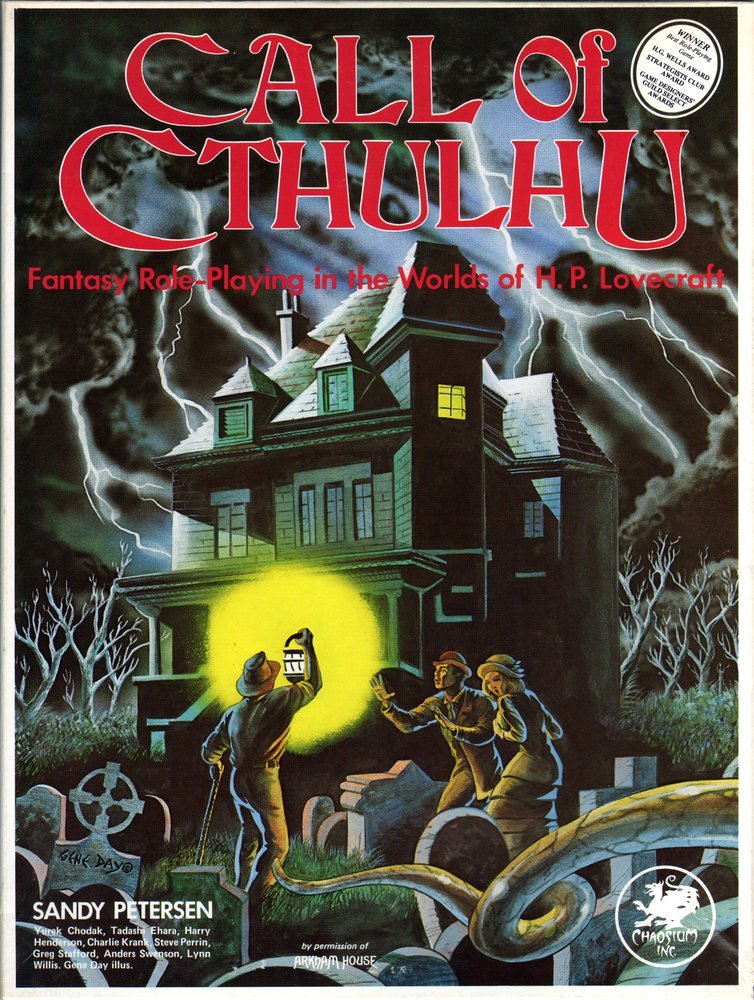
Source of image: https://amzn.com/dp/0933635028
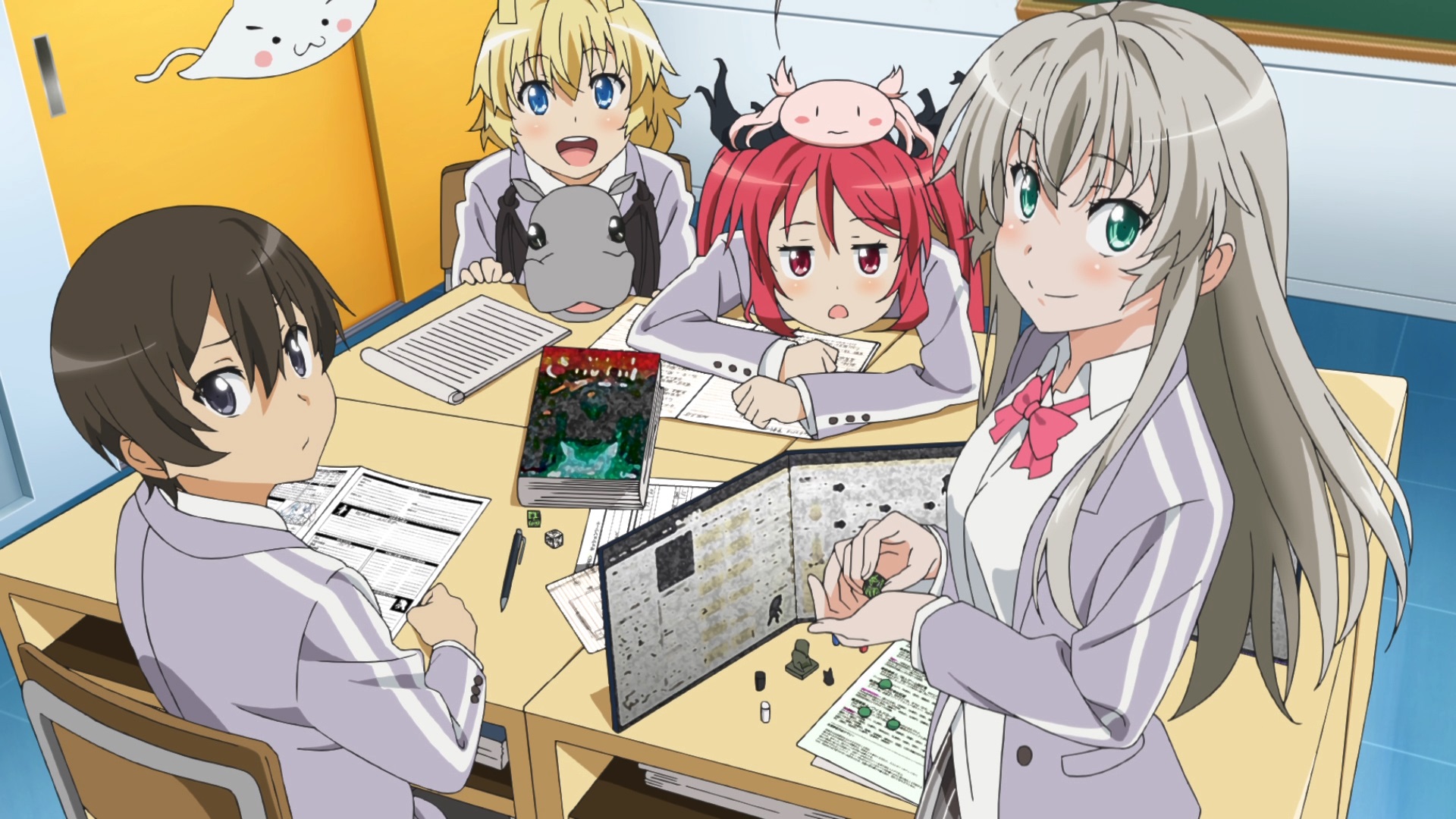
(27:35)
There are four references here:
* The white creature that appears here is referencing the Twitter profile picture of Aisora Manta (逢空万太), the author of the "Haiyore! Nyaruko-san" light novel series.
* The pink creature on Cthuko's head is a Fire Vampire, a creature in the Cthulhu Mythos.
* Nyaruko and the others are playing the Call of Cthulhu role playing game.
* The cover art of the book on the table is based on the cover art of "Kutourufu Shinwa TRPG" (クトゥルフ神話 TRPG), "Cthulhu Mythos TRPG", a Japanese translation of the 6th edition rule book for the "Call of Cthulhu" RPG released by enterbrain (エンターブレイン) in 2004. Image for reference:
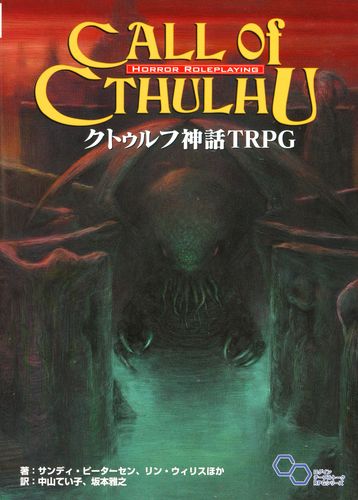
Image source: http://ebten.jp/eb-store/p/9784047294646/
List of sources:
S1. A blog post by Yucchisan (ゆっちさん)
S2. Comments on this post
S3. Japanese Nyaruko References Wiki (這いよれ! ニャル子さん 元ネタwiki)
Thanks to everyone who contributed! This list wouldn't be nearly as long without you all.
情報を教えてくださって本当にありがとうございました!皆さんがいなかったら、このリストはぜんぜん長くありません。
Last updated April 8, 2022
Sitemap
Home
